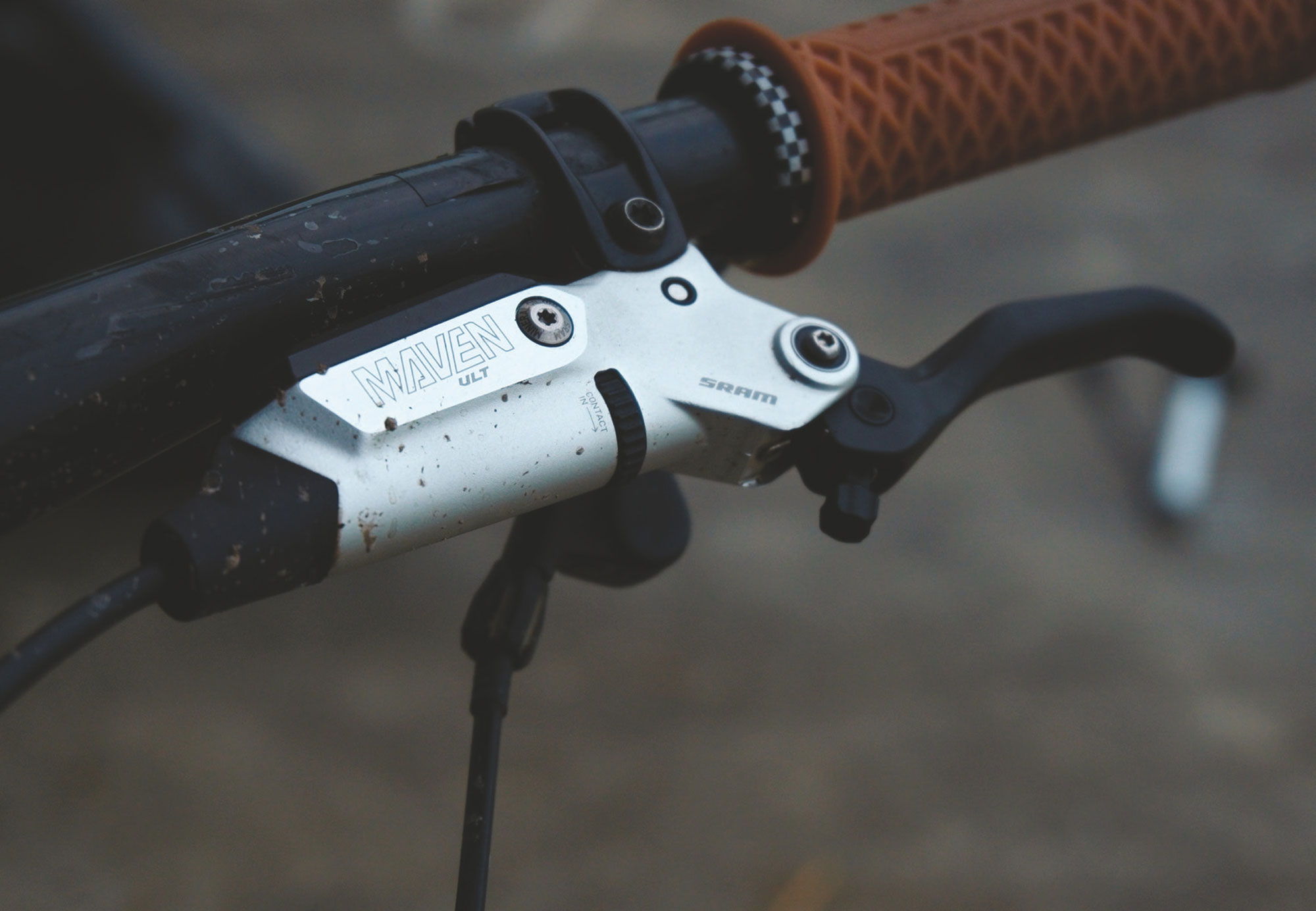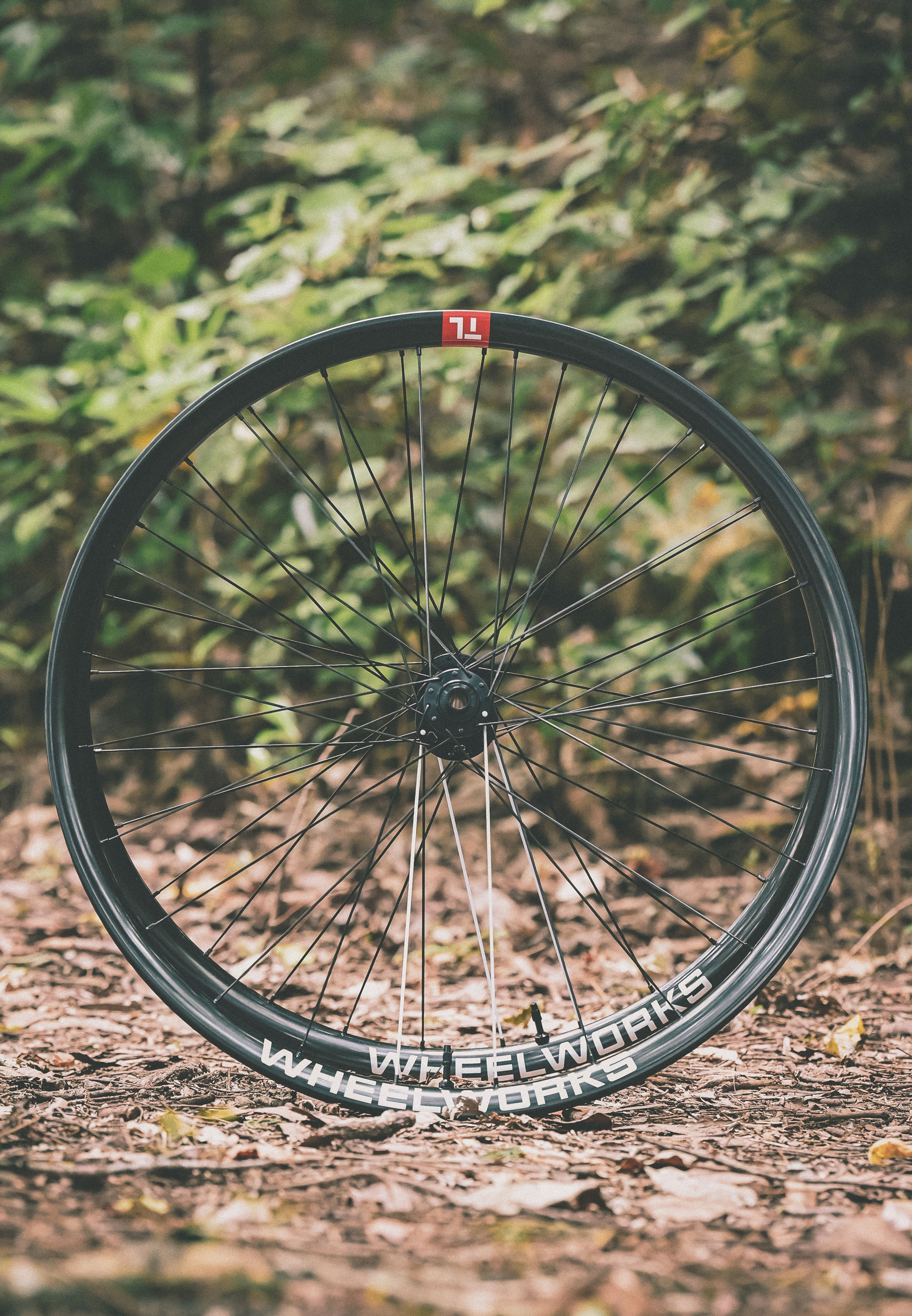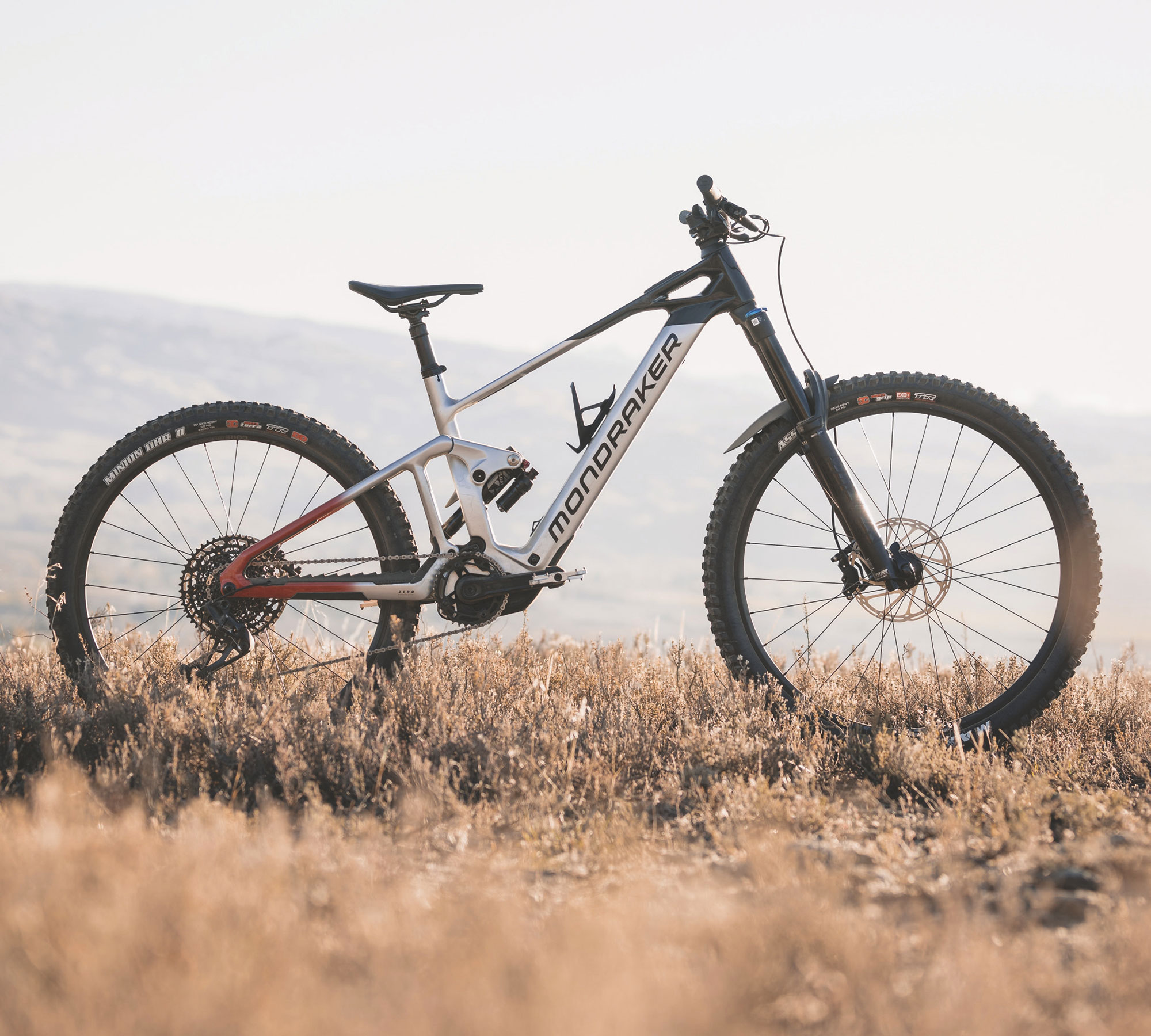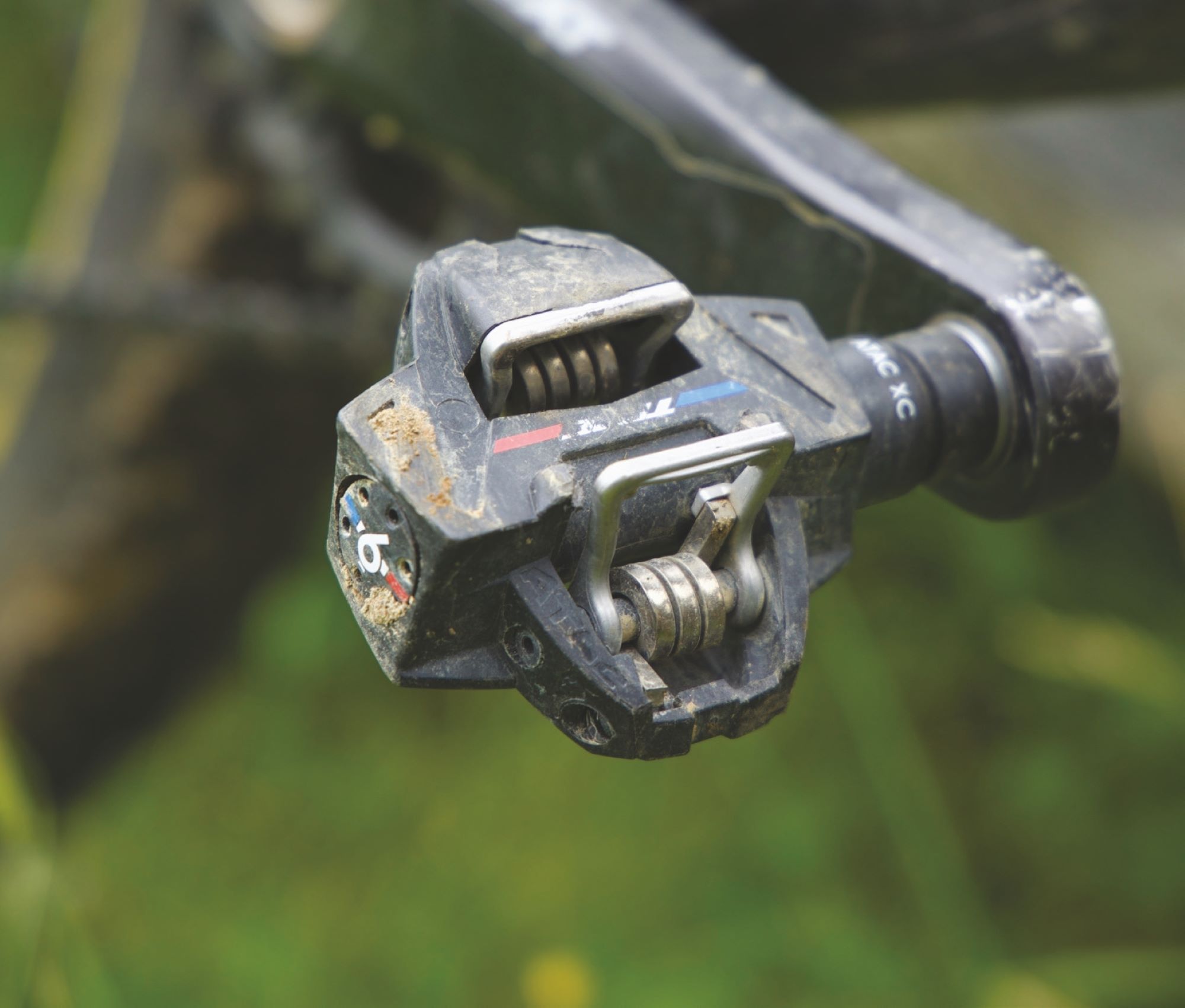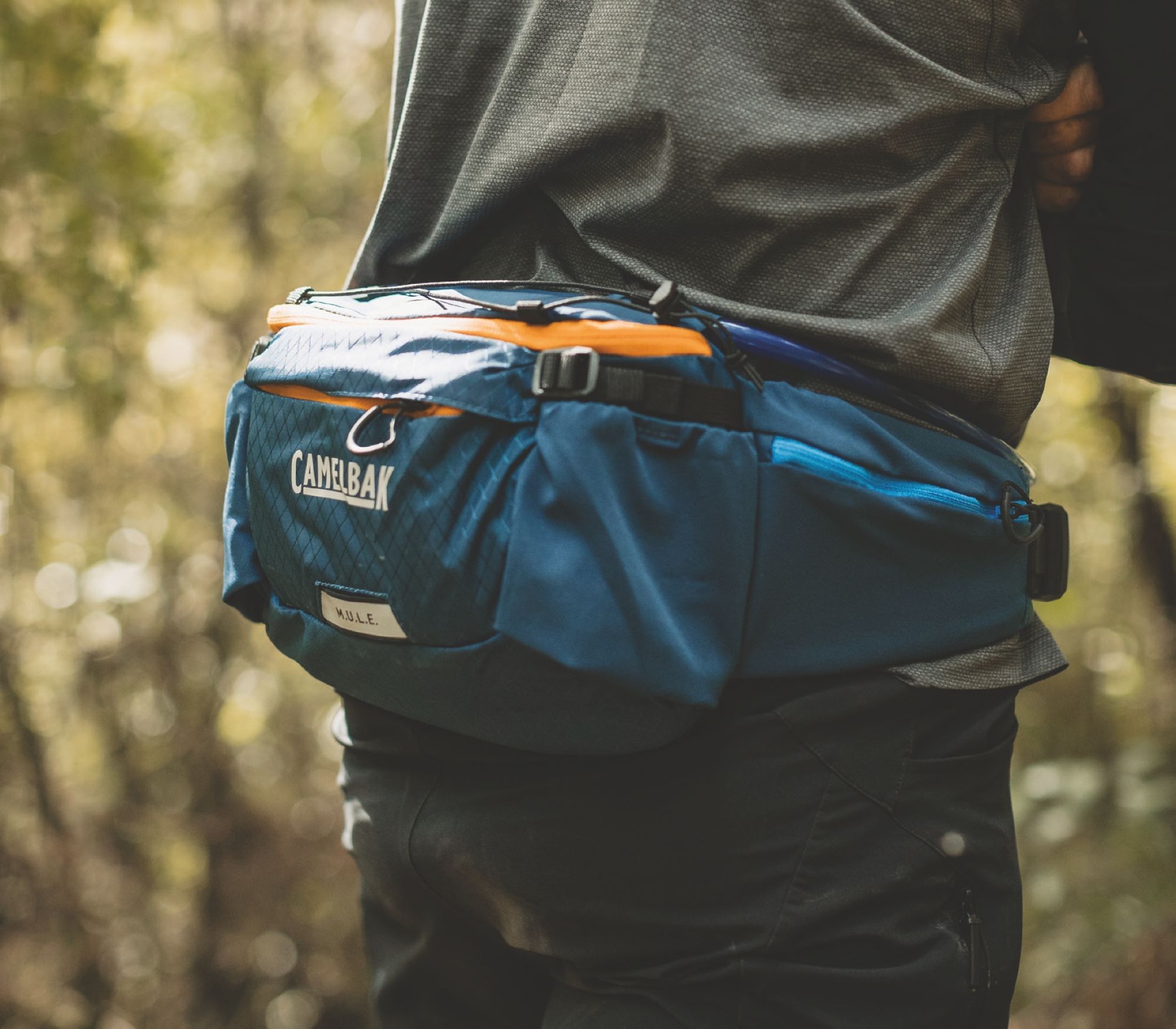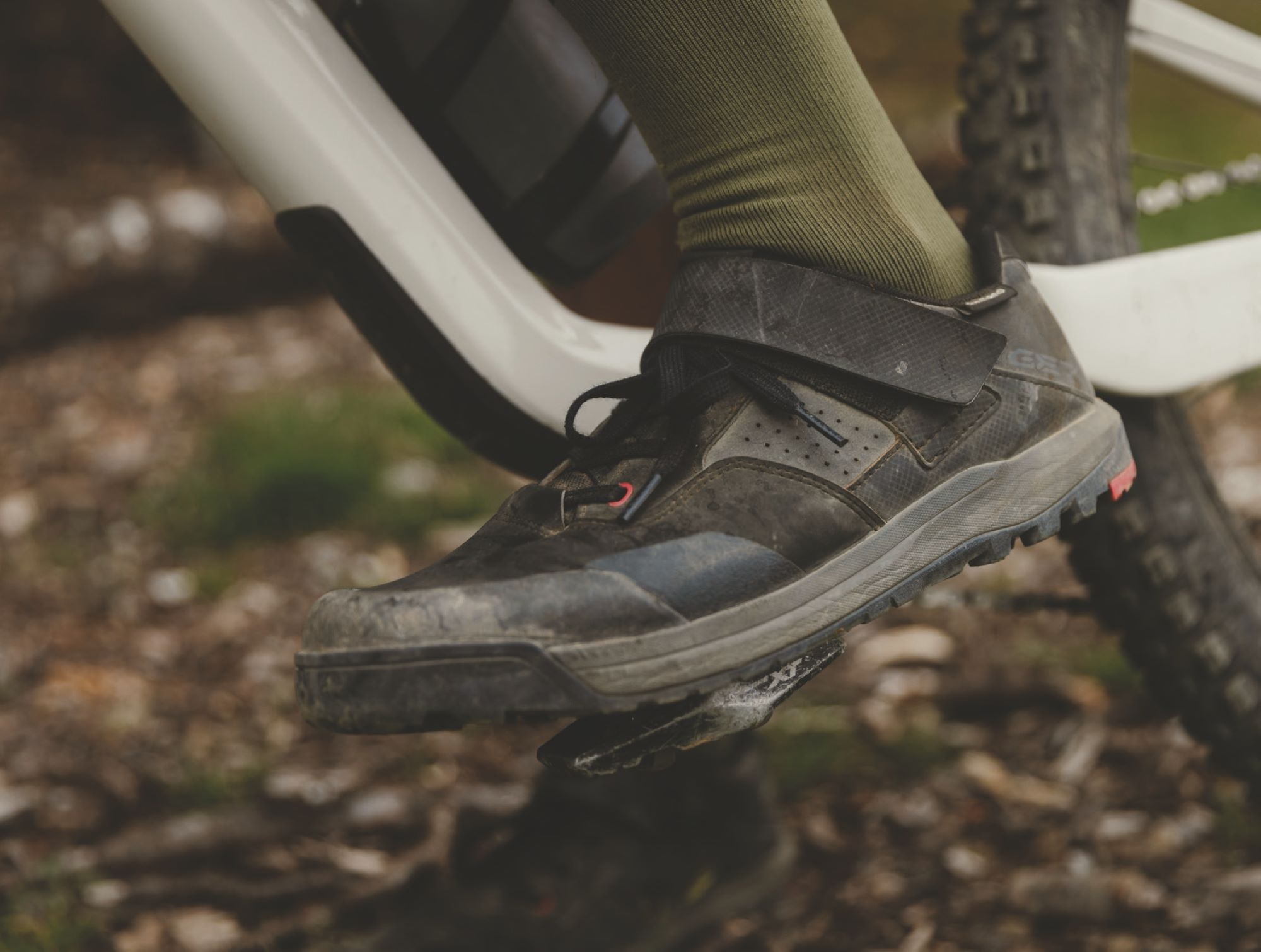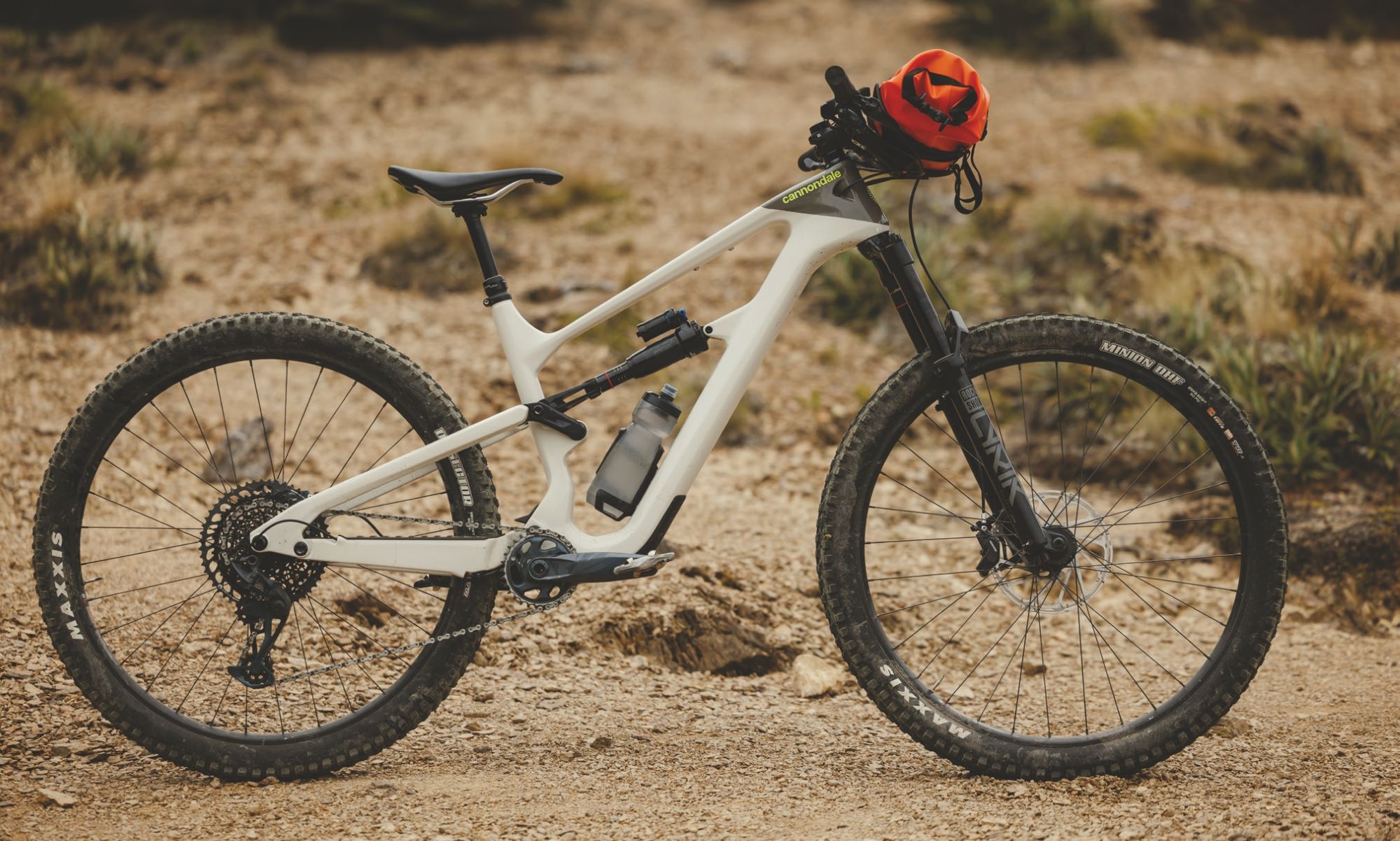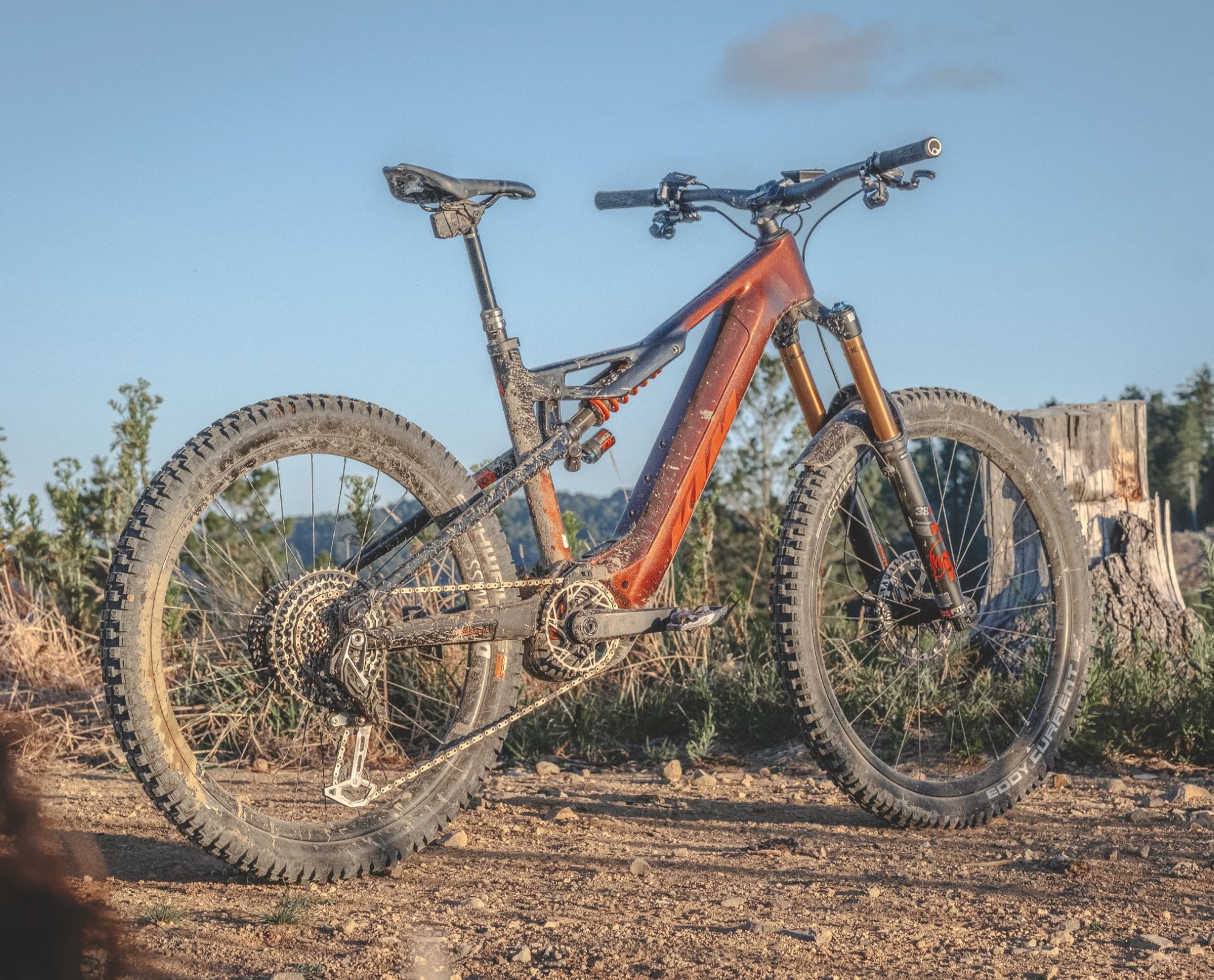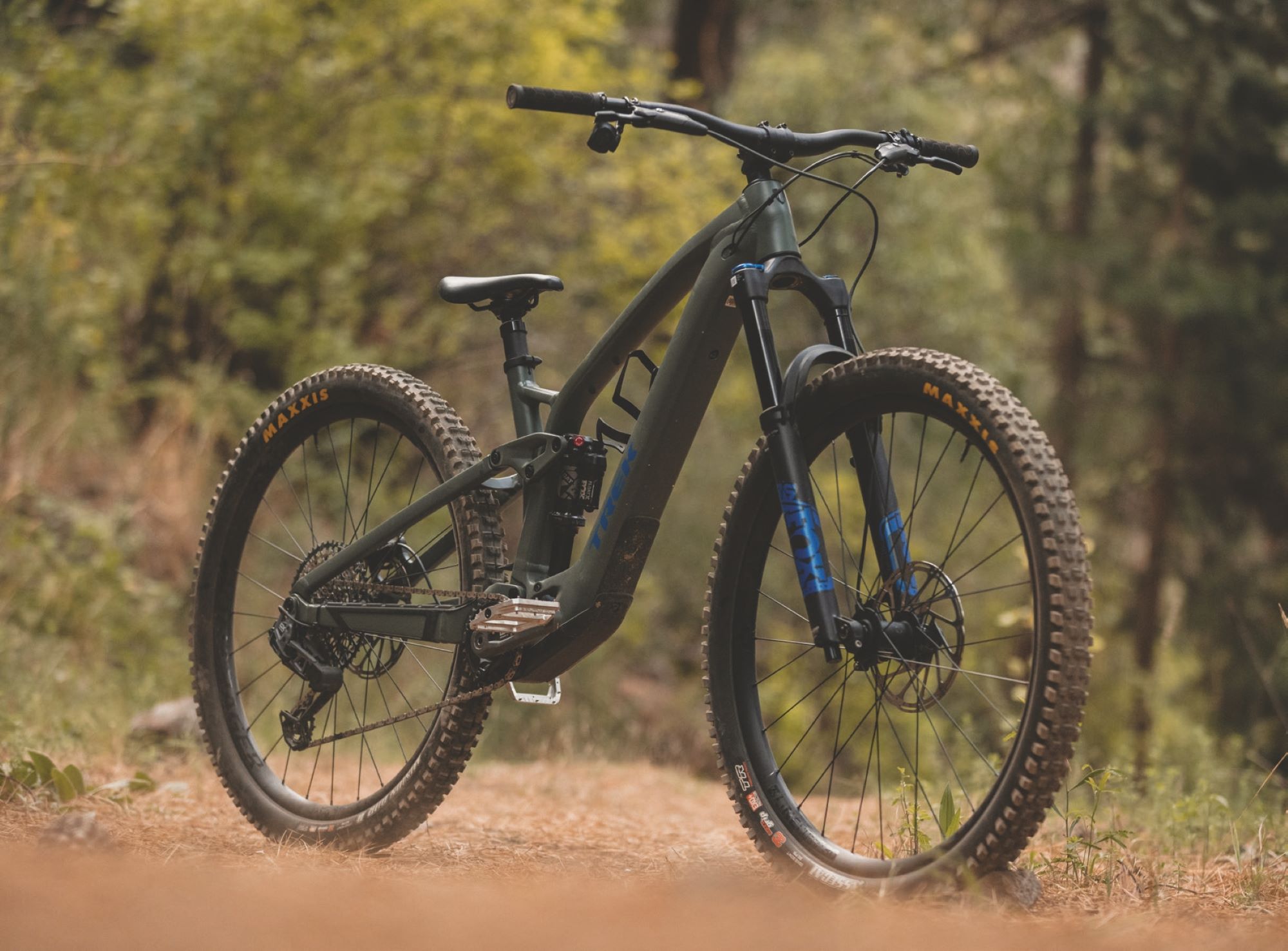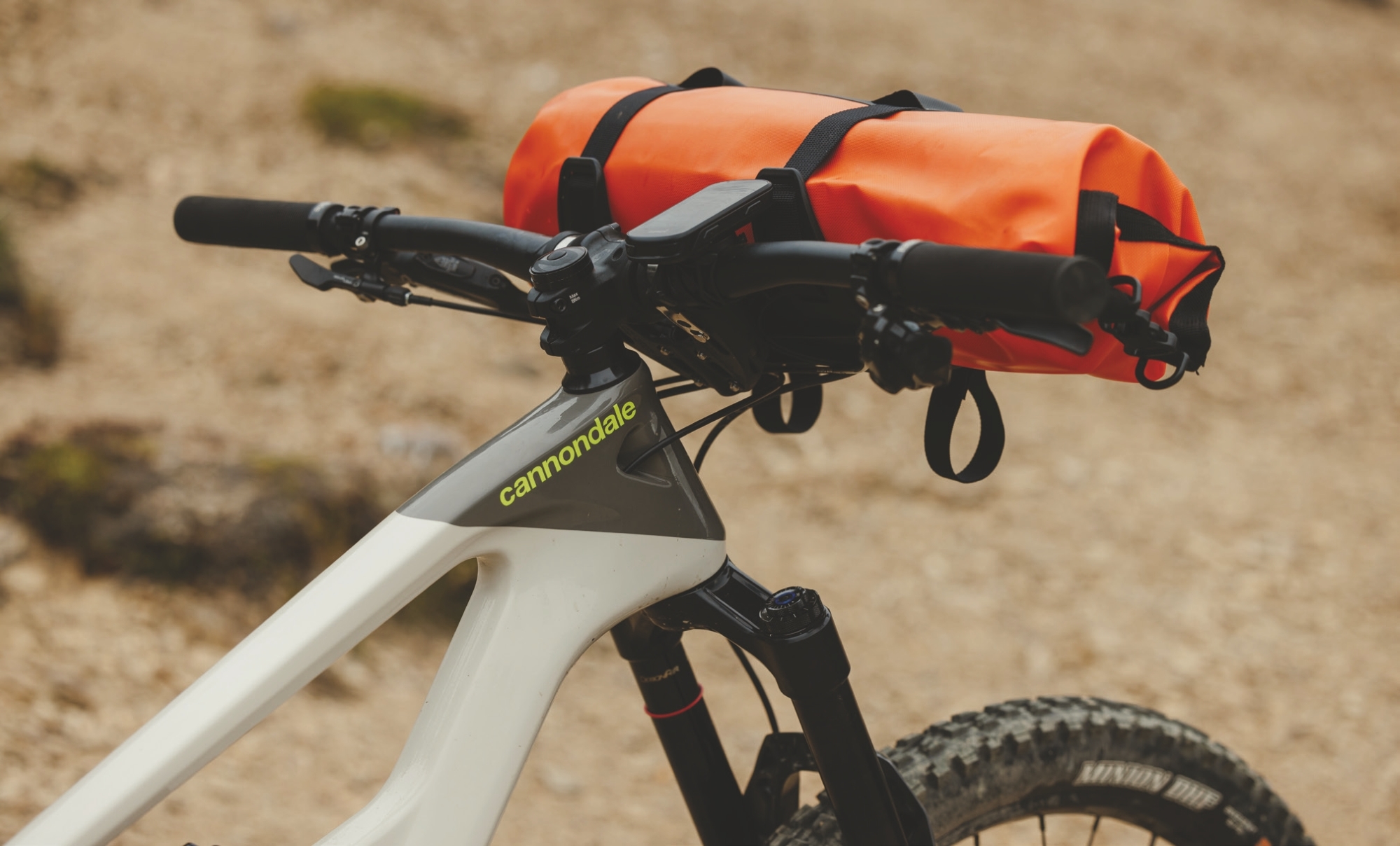SRAM Maven ULT Brakes
Words Lester Perry
Images Lester Perry & Callum Wood
RRP $622 per end
Distributor Worralls
It’s been a while since I came across a new bike component that, once bolted on, offered a noticeable performance improvement from its predecessor. Often new releases are more of “a tweak here, a tweak there, and a splash of paint” rather than a complete redo, ending up with something vastly better than what was offered before.
In the space of just 12 months, SRAM has done just that – offering two groundbreaking new ranges, first with the launch of the Transmission ecosystem in March 2023, and now with the recent release of the Maven series of brakes.
The first and fundamental change that SRAM made at the outset of its quest for top performance was to design the system using mineral oil rather than its traditional DOT fluid. DOT fluid absorbs moisture over time, and its use means more regular brake bleeds as the oil’s properties eventually change as moisture is taken on. After a couple of years, the seals, particularly in the lever, needed replacement as they are ultimately eroded or swollen by the DOT fluid, rendering the brakes useless. Unfortunately, the cost to replace the seals is about equal to just replacing the entire lever (unless you do the job yourself), so guess where all these old brakes end up? Mineral fluid isn’t corrosive and doesn’t absorb moisture like the DOT so, theoretically, less maintenance is required, and the brakes will last a lot longer.
The combination of the new seal material and the mineral oil offers better performance across the heat spectrum in which the brakes operate. From the depths of a Queenstown autumnal inversion layer – where brakes may never heat up a lot – to lengthy laps on Whistler steeps, the idea is to offer a brake that performs more consistently across a wider variety of running temperatures and with less maintenance. The new seals and use of mineral fluid, combined with larger pistons and a new, gargantuan calliper, seem to have achieved this – from my experience so far.
For a brake to be powerful and consistent, it needs to keep enough heat in the system without overheating or excess cooling; not be too hot, not too cold, just right – like a good bowl of porridge. The greater thermal mass in the Maven calliper takes longer to heat up but, by design, balances the peaks and troughs of temperature, maintaining a more consistent and optimal temperature, ultimately providing a more consistent braking performance regardless of how hard you are on the brakes.
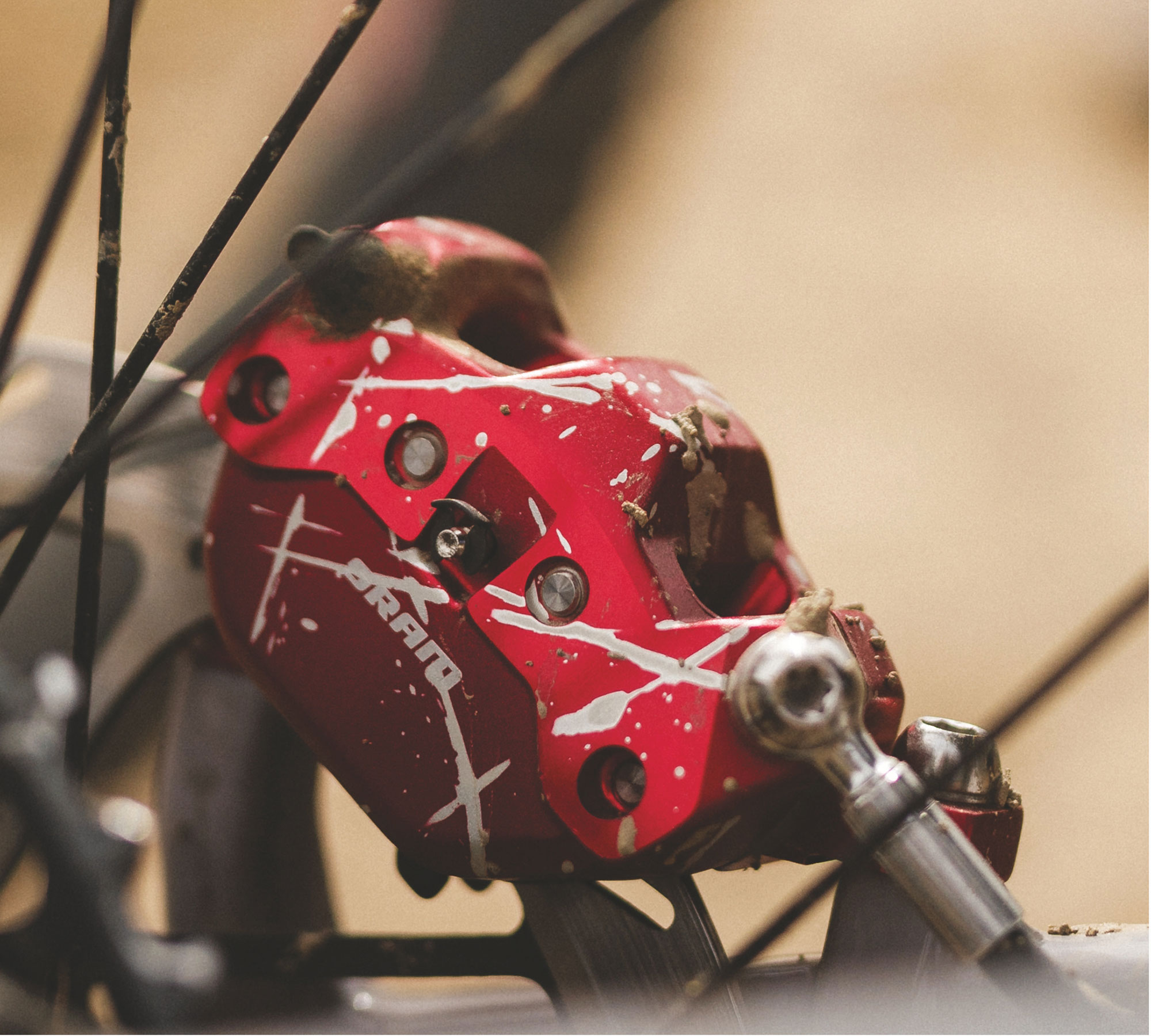
There’s a nice, solid, woody feel, and you can tell when the pads contact the rotor. There’s a familiar feeling of modulation, just like other high-end SRAM offerings.
We installed a set of Maven ULT on my daily driver, a Trek Slash, and over the past few months I’ve been figuring out what they’re all about. I’ve been running the stock organic pads and 200mm HT2 rotors. In the past, with SRAM brakes, the stock organic pads would be first to go, instantly upgrading to a sintered option. In this case, I’ve had no complaints with the Maven’s stock organic pad compound. Apparently, like previous SRAM offerings, the sintered pads come into their own in wet conditions, but so far I haven’t seen the need to put the sintered pads to the test on these brakes.
There’s a limited edition Maven Expert ‘red splash anodised’ colourway that Liam (editor) has been running but, honestly, that red would have clashed brutally with my orange bike, so the polished silver and black version ULT suits my setup perfectly – and we all know looks are part of the performance package, right?
The lever feel is not too dissimilar to the latest SRAM Codes. There’s a nice, solid, woody feel, and you can tell when the pads contact the rotor. There’s a familiar feeling of modulation, just like other high-end SRAM offerings. With some heat in the system at speed, the lever remains comfortably consistent and doesn’t wander or pump up. Wet weather is no bother either. The combo of the 200mm rotor and the huge pad contact area provides awesome wet-weather power.
It’s nice to see a slight tweak in how the brake hose exits the lever body; compared to the Code’s ‘Stealth’ levers, the hose comes out of the lever and angles away from the handlebar rather than towards it like other Stealth style brakes. Having ridden bikes with the standard, angled ‘Stealth’ levers and their regular ‘slap’ noise as the brake hose smacked on the bars, I was glad to see this minor tweak. I’ll be interested to see if this change rolls into the rest of the ‘Stealth’ levers over time.
The Maven ULT edition features lever reach and pad contact adjustment. Although the lever looks quite similar to the Code Stealth lever, inside the lever body we find the necessary differences, including piston size, to optimise for the Maven calliper’s oversized pistons.
My favoured setup is to have the pad contact wound completely in (so the pads contact quickly) and the lever wound far enough in that it ends up near parallel to the handlebar, allowing for minimal reach and only a small lever throw before pads engage. The lever pull feels slightly firmer than a SRAM Code and considerably firmer than a Shimano brake. It’s a matter of getting used to it rather than better or worse in my book, and I’ve been running Shimano 4-pot brakes up until this set arrived.
The Maven is touted as providing almost 50% more stopping power and requiring about 30% less force on the lever to deliver the same power as the Code Ultimate brakes – some heady stats that, before riding them, I found a bit hard to swallow. After a couple of months aboard the brakes, however, I can’t argue with these numbers; there is a serious amount of stopping power on tap and my forearms aren’t complaining.
In seasons gone by, it’s been common to see downhill and enduro racers’ bikes fitted with the largest rotor size they could squeeze into their frames. Part of the impetus behind making the Maven’s so powerful was the aim to be able to scale down the power by running smaller rotors. Smaller rotors are less susceptible to rock or debris strikes, so staying straighter and having so much power on offer gives a rider the ability to tune their power to their needs depending where or how they’re riding.
With no worry of underpowered or overcooked brakes, there’s no reason not to brake later towards turns or go deeper into a chute before braking.
Weight-wise, there’s an additional 60 grams per end on the ULT above a comparable level Code brake (calliper, hose, lever); my trusty calculator tells me that’s a 20% increase. It is considerable, especially when most of the extra weight is in the calliper. In fairness, depending on what size rotors are fitted, and whether or not they require adaptors, you could end up with a similar (or even lighter) total system weight compared to a Code with larger rotors. But, with more power and more consistent performance.
As you see, there’s a load of tech to unpack with an entirely new offering like the Mavens, but if what you really care about is how these units work in the real world, then read on.
There’s no doubt these brakes are the gruntiest I’ve used. I’ve ridden several powerful gravity- oriented brakes, but by no means a majority of what is available. The Mavens have surprised me, not just with their raw power but with how consistent the feel is; every time I’ve pulled the lever, the feel is the same and, even on longer runs where other brakes have suffered with heat issues or cooked rotors, I’ve learned to rely on the consistency of the Maven.
With immense power comes immense responsibility. Traction is more critical during heavy braking, and part of this is maintaining body position – something that takes some adjustment. With no worry of underpowered or overcooked brakes, there’s no reason not to brake later towards turns or go deeper into a chute before braking. Braking in a shorter distance means higher forces on the body and tyres over a shorter time span than lesser brakes – think a Stab rather than a Slice – and certainly something that takes some time to become familiar with.
Anchors on = slow down. Full stop. No story, straight to bed.
It’s taken some time to adapt my riding and change my ingrained habits to make the most of the Mavens, but it does feel like if I were against the clock, I’d see some time savings, particularly on high-speed and steep tracks.
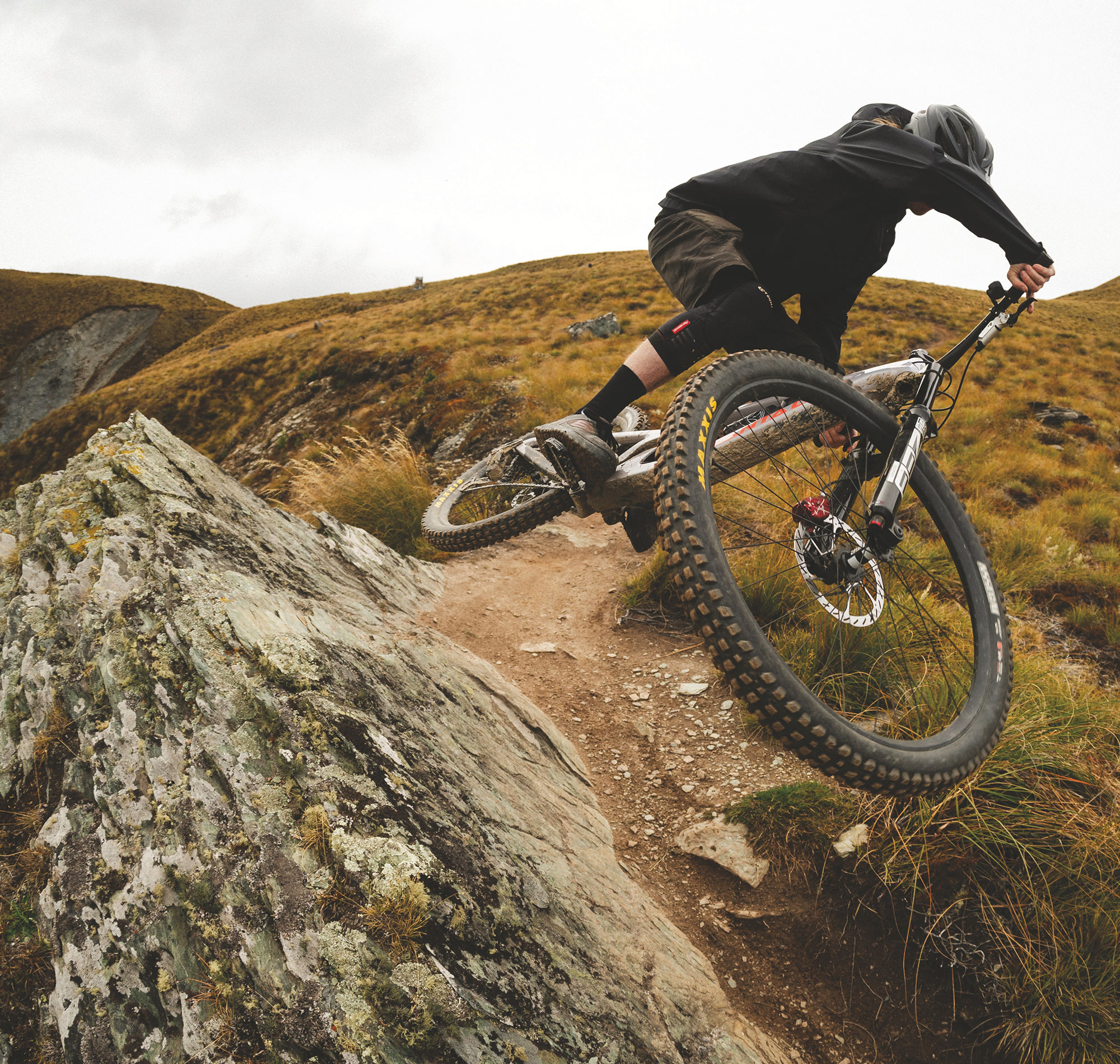
With some heat in the system at speed, the lever remains comfortably consistent and doesn’t wander or pump up. Wet weather is no bother either.
On most eBikes I’ve ridden recently, the brakes have underwhelmed me. An adequate brake has often been let down by an inadequate rotor, and it’s been quickly cooked, rendering it nearly useless. Generally the brakes just aren’t consistently grunty enough for the weight they need to slow down. A note to product managers: a 180mm rotor doesn’t belong on an eBike! The additional heft of a complete eBike system (rider, gear, bike) makes a set of Mavens for eBike use a total no-brainer and a worthy upgrade.
As good as the Mavens are, they’re not for every bike, and for sure, they’re too powerful for some scenarios. In slick conditions, I think I’d like to try smaller rotors to detune their bite somewhat. Such powerful brakes make it a bit harder to keep the wheels rotating under braking when trails are super wet, and lockups come easy when there’s this much power at such little effort. Likewise, unless the brakes are fitted to a downhill bike, or you’re riding long, steep trails on an Enduro bike, then you’ll likely want to de-tune them to the point where their performance (outside of the mineral oil and heat advantages) would put them in line with a Code or similar brake. On anything less than a balls-to-the-wall Enduro or Downhill bike, where maximum power isn’t essential, I’d be reaching for a Code or something similar.
Spending time on these brakes has got me thinking; SRAM now offers eBike tuned suspension (under the Rock Shox brand), transmission drivetrain, Maven brakes, and even a collaboratively developed eMTB motor. Combine these bits with other brands in the SRAM family: such as ZIPP wheels, Truvativ cockpit, Time pedals, and a Hammerhead bike computer. These are all arguably top-shelf and market-leading (or close to it) items that all suit the eMTB market to a tee. There are only two pieces to the puzzle missing: a good set of tyres and a frame…. Hmmm what will the future hold?
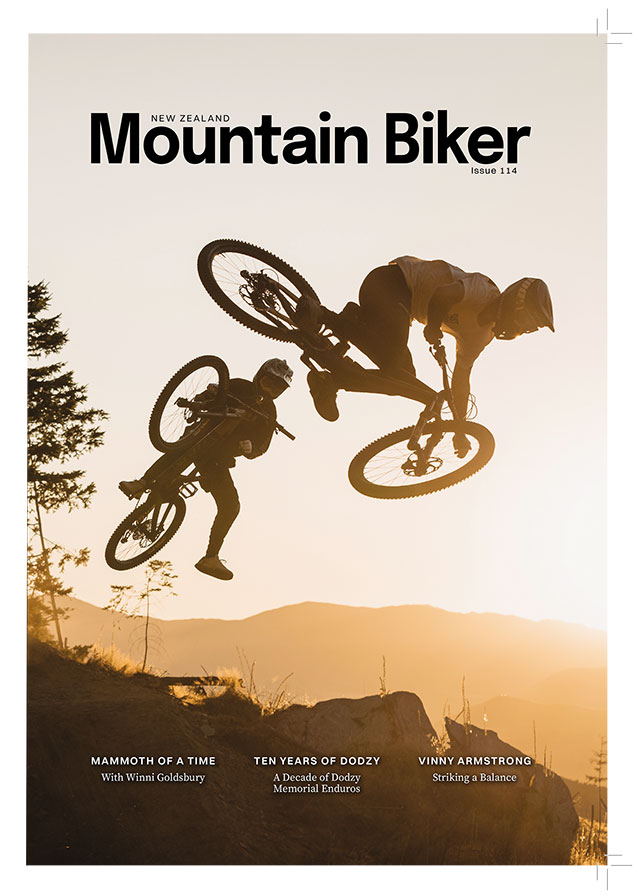
Wheelworks TrailLite Carbon
Words & Image Lance Pilbrow
RRP $3600
Distributor Wheelworks
Way back in November 2022, I was lucky enough to get my hands on not one, but two sets of Wheelworks’ new wheels to review. These were the Flite Trail model; one set in carbon and another in alloy. The idea was to do something of a side-by-side test on each pair over the summer and write something up for print after giving them each a good thrashing.
Needless to say, they both flew through the tests (and I did an unusual amount of wheel and tyre swapping that summer). At the end of that I was a little torn; the carbons were lighter, stiffer and no doubt, won on bling, but the alloys provided serious value for money, and Wheelwork’s after (and before) sales support meant that either way, you would no doubt be a satisfied customer.
Even better, though, was the opportunity to hold on to one of the sets for a long-term review. “Are you interested in holding onto these $3000 wheels for a bit longer?” they asked. “Ah… Um, yeah!” (What kind of question is that?) By now I had grown quite attached to the carbon Flite Trail wheels, and though I knew one day I would inevitably have to give them back, I was going to do everything I could to put that day off for as long as possible.
Many readers might be unaware that long-term reviews of high-end products are not all that common in this industry. Often, something arrives, you have it for a month and then it’s back on the courier again to the distributor to be used in a demo fleet, or to be sent to another media organisation for them to do their own review. It’s just the way the industry works. However, these long-term reviews are the sort of reviews I think most people would like to see more of.
We all know most products will work just fine for a month, but a year or 18 months down the track? That’s when the cracks begin to show, and that’s the kind of information you really want to know when you open a magazine for advice.
So, enough background, but suffice to say, props to Wheelworks for believing in their product enough to trust it to be reviewed over almost 18 months.
A quick recap: the TrailLite Carbon wheelset comes in at 30mm internal / 36mm external width and it runs 28mm high. The wheelset I rode weighed in at 1650g grams including rim tape and valves installed. The carbon rims were matched to Wheelwork’s own Dial hubs and laced with DT Swiss Aerolite spokes. Mine came with red decals on the hubs, a small red ‘TL’ (TrailLite) icon, and a larger, silver Wheelworks logo that follows the arc of the rim. These are all customisable to match whatever colourway your bike is, because we all like to be matchy-matchy. They came pre-taped and with valves installed.
As I mentioned in the earlier review, Wheelworks really are all about wheels. That’s their sole focus, and that focus is part of what makes purchasing a set of wheels more engaging than just scrolling through an endless list of options on the internet. It’s personal. Prior to getting the wheels, I spoke with their team about my riding style, bike, weight, and what I was hoping to achieve or improve over my current set up. This conversation dictated the build, and having their expertise guide the process means that, as a buyer, you are going to be massively confident in what is a significant purchase.
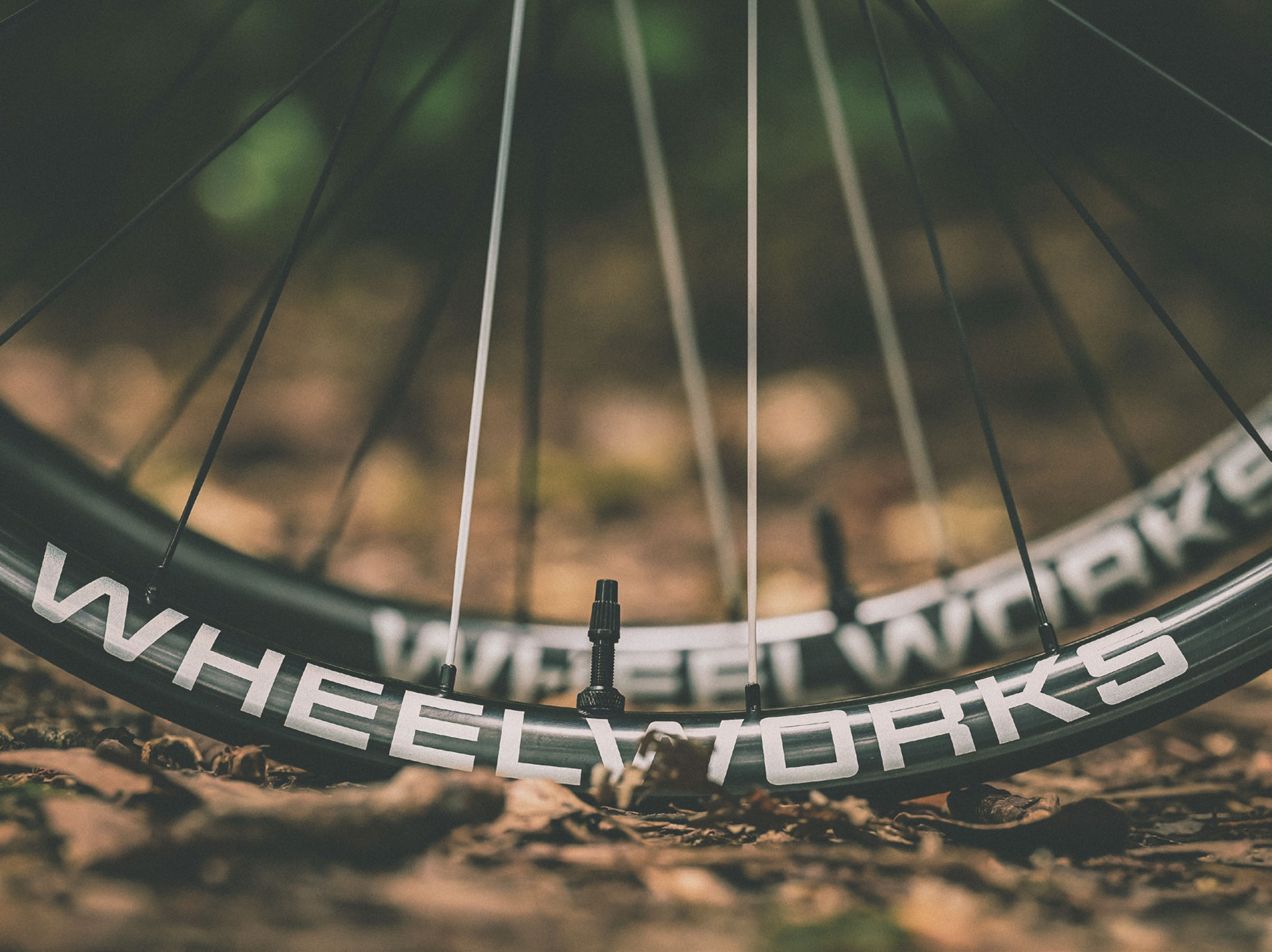
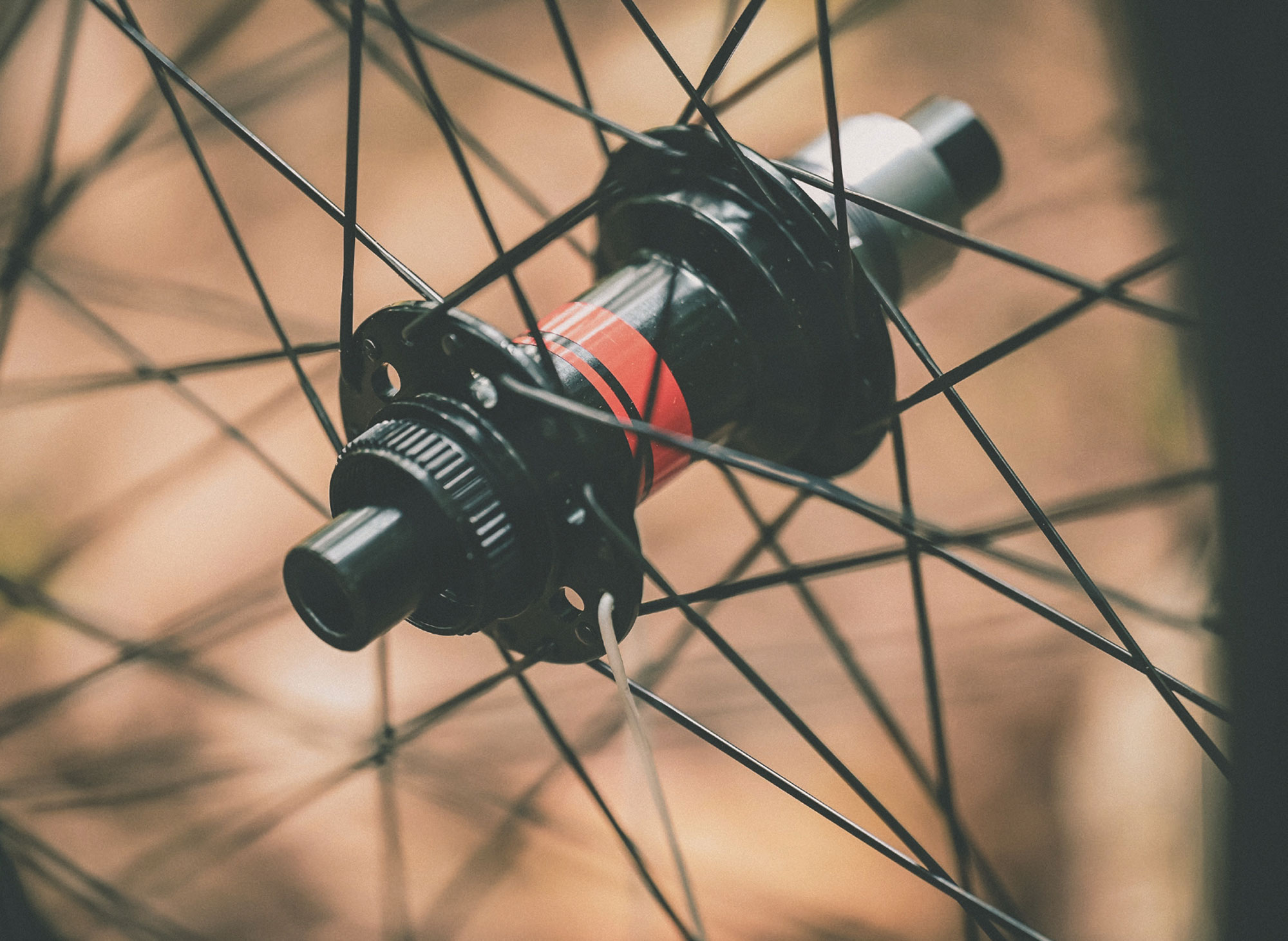
after 18 months of testing they really are still running as good as new; a real testament to the strength and layup of the carbon, and the craftsmanship involved in the build.
So, 18 months in, how did they fair? Well, I’ve got to be honest… the Wheelworks decals have started to show some signs of wear. A travesty! Jokes aside, that is quite literally the only thing I can fault them on. Over the review period, I rode a Whaka 50, a Whaka100, some Enduro, as well as 18 months of just everyday regular riding. In that time I cased more jumps than I would like to admit and did zero maintenance on them. I had no reason to. In terms of ride quality, what I was most taken aback by was the impressive lateral stiffness and how that enabled me to track a line through uneven terrain; and the awesome acceleration they enabled.
When the day finally came to send them back, I thought I should see just what state they were in, just in case I needed to send an apologetic email to the Wheelworks team before they unboxed them at their end. Grabbing a few zip ties to make an impromptu wheel alignment jig, I realised that, yep, they’re still dead straight. I ran my fingers over the Dial hub bearings and, yep, still silky smooth – smoother in fact than when they even arrived. I am honestly really impressed. To be fair, these are a $3600 product so, yeah, I would expect them to be faultless, for a good long time. But mountain biking is a sport that is tough on gear. We seem to keep on asking our gear to be lighter, whilst also being stronger – and wheels are a perfect example of this. At some point, something has to give…. Unless there is a real commitment to maintaining quality and not cutting corners. I think the Wheelworks wheels hit the sweet spot with this. As I said, they weigh in around 1650gm. I think this is bang on for most trail riders. They feel light enough to have that ‘zip’ about them (and to also feel like you have a slightly unfair advantage over your mates in the Whaka100), but clearly still enough strength to go the distance. I wouldn’t say I ‘abused’ these wheels (especially not on record as I would quite like them to send me other wheels to review… ahem… Berd’s?) as, to be honest, I’m just not that sort of rider, but I like to think I ride pretty hard when I’m in the zone and often kid myself into believing I’m a better rider than I actually am…. That combo means that at least once, on most rides, I have that moment of wincing as I slam into a root or rock and think “doh! that is going to be a cracked rim.” But, after 18 months of testing, they really are still running as good as new; a real testament to the strength and layup of the carbon, and the craftsmanship involved in the build.
All in all, this is probably one of the least surprising reviews most of our readers will read. My final thoughts after 18 months of solid testing; Wheelworks wheels are great. About as surprising as saying water is wet. Wheelworks have built a business based around their reputation; a reputation for building consistently solid wheelsets, for backing them up with an outstanding warranty and after sale support and, ultimately, for creating a culture of really valuing their customers. When you do that wheelset after wheelset, it’s no wonder they are so consistently recommended.

Bosch SX: Is this the new natural?
Words Nathan Petrie
Images Cameron Mackenzie
Looks can be deceiving. Something may appear small or neat, but take a peak under the hood
and you’ll find something much greater
In the bike world, we lust after the lightest (and latest) technology but, at the same time, we never want to give up that purity of the ‘natural’ ride feel. At the forefront of our communal infatuation with ‘bike porn’ is the eBike. Is it possible to embrace the technology without giving up on the simple joy we get from pedalling a bike?
Since Covid, eBikes have become commonplace on our trails and the daily ride for many of us. The maturing market now provides a wide range of eBike products for every style of rider. From full-power to lightweight motor options, a variety of battery sizes, and matched with different bike brand geometry. Bosch has led this charge and the arrival of their Performance Line SX system in New Zealand is the next phase of this evolution.
When the opportunity came through to test ride the new Mondraker Dune R, equipped with Bosch’s Performance Line SX, my interest was well and truly piqued. My current bike is fitted with the Performance Line CX, and I knew the SX was a light-weight system, so was keen to see how it would compare. We headed for the rugged terrain of Matangi Station in Alexandra, to put it through its paces; the perfect proving ground for both the system and bike with steep climbs, tight pinches and rocky single track.
My most obvious question was how the SX motor would feel in terms of assistance compared to my experience on the Performance Line CX. Would it feel underpowered or too much of a jump down? How natural would it feel to ride? I was also interested to see how you use the modes. For the type of riding I do, I usually ride my CX bike in the two lowest modes, Eco and Tour, but I wondered if I’d need to use eMTB or Turbo? Or, if I stuck to my usual modes, how fast would I be able to climb up stuff? Would I feel like I was going a whole lot slower? Would the SX system experience be up to Bosch’s usual high standards?
I put the motor to the test straight out of the car park, climbing up a steep four-wheel drive track to access the trails. I didn’t expect the SX to be as strong as a full-power motor like the CX but it was easily powerful enough going up. I didn’t need to switch to eMTB or Turbo mode. Even on the loose gravel surface, where you can easily lose traction on the steep sections, the bike performed well and I could push through without having to get out of the saddle.
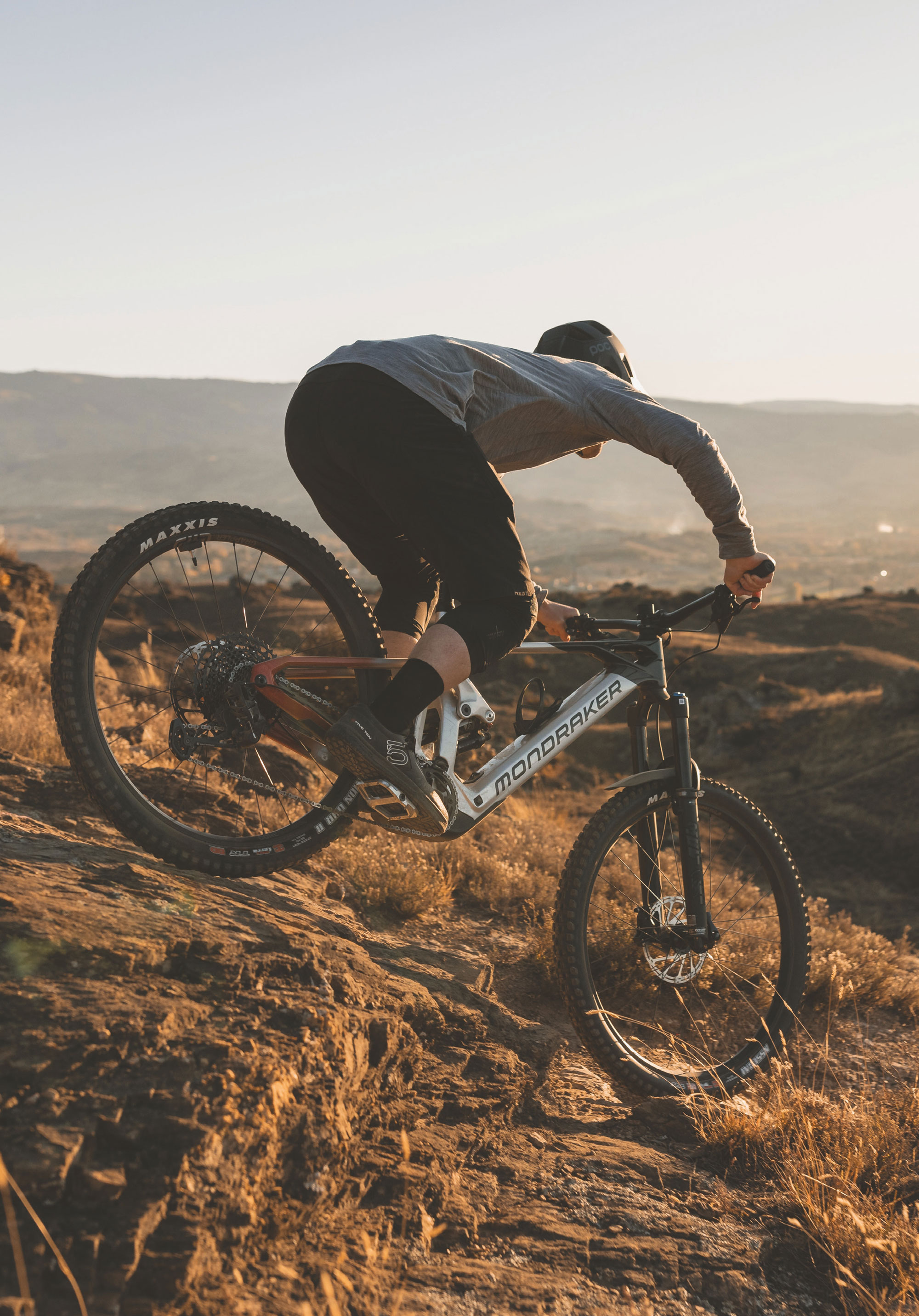
I think a lot of experienced riders still yearn for that analogue bike feel and the lower-powered modes deliver that nice balance of assistance.
On an eBike, you can sometimes feel like the front wheel is going to lift off on steep sections, especially in high power modes, but I didn’t experience any of that pull-up at the front. I felt like you could manage the torque and it was well delivered. It was smooth and consistent and didn’t come on in a big burst.
I had heard that the SX is more cadence- sensitive but even so I didn’t have to spin it up as quickly as I thought I might have to and was getting good assistance low down. It wasn’t hard to get used to it either. I just had to drop down one gear and I was set. I was still covering the ground fast and it felt really natural.
My personal preference when it comes to modes on my CX powered bike is to be in Tour mode 80% of the time, maybe eMTB mode if I’m going up a more sustained technical climb. I never really feel like I need Turbo and I hardly ever use it. I love to pedal but still want that assistance when I need it. I think a lot of experienced riders still yearn for that analogue bike feel and the lower-powered modes deliver that nice balance of assistance. Eco and Tour don’t feel super strong on a heavier bike so I thought I’d see how they felt on the SX. I switched to Tour on the steep sections and it was ideal, giving me the assistance I needed.
I had a try with eMTB and Turbo and found they were good for starting on a steep technical climb, getting you into it without feeling too strong. This is where these modes come into their own. In the spots where you’re at a low cadence and can run out of traction pretty easily, those high- power modes can help you get moving without having to worry about spinning the wheel and losing grip straight away. You get the torque that you need, where you need it. With eMTB mode you can get up and over most things and it’s the most intuitive mode for most types of riding.
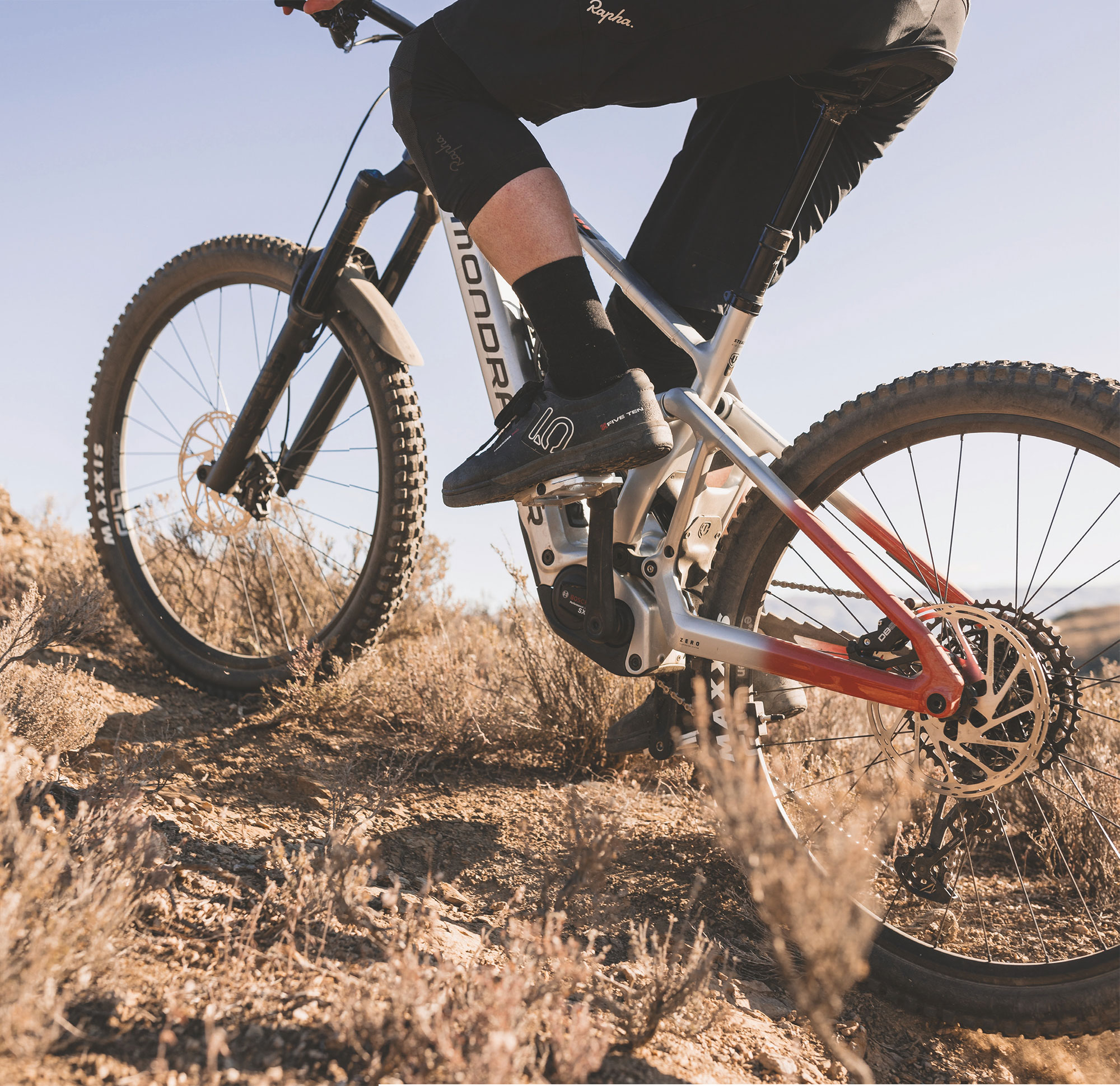
The PowerMore 250 range extender is a good size, weighing in at just 1.5kg and sits on the bottle cage mount. Even though you’re carrying the minimal extra weight, you’re not going to be suffering anymore because you’ve still got the assistance from the motor and the bike is already lighter.
In the morning, we used about 40% of the battery, then rode three hours in the afternoon on some pretty steep, techy terrain, all on one battery charge and I never felt any range anxiety. We didn’t have the Bosch PowerMore range extender with us, but it would be ideal on big days like this. Having the option of an extra 250Wh on top of the 400Wh from the Bosch CompactTube 400 that comes on the Mondraker Dune R is a huge bonus.
The PowerMore 250 range extender is a good size, weighing in at just 1.5kg and sits on the bottle cage mount. Even though you’re carrying the minimal extra weight, you’re not going to be suffering anymore because you’ve still got the assistance from the motor and the bike is already lighter. It’s much easier to add 1.5kg to your backpack than a full-size second battery and it widens the scope for more ambitious backcountry missions.
The Mondraker Dune R has a system controller installed in the top tube, so you can do a quick glance down to check how much battery you’ve got left and what mode you’re in. I liked not having a display unit to clutter the cockpit. But if you prefer having a display unit you can have this added on. Having a minimalist eBike setup with only the system controller and mini remote, but the Flow App in your pocket, means you’re getting the best of both worlds: a pure riding experience with the reassurance of powerful data in your pocket so you can quickly crunch big numbers if you need to. The Mini Remote next to the grip is great. If you’re in a tough spot where you need to change the mode easily and quickly, it behaves responsively.
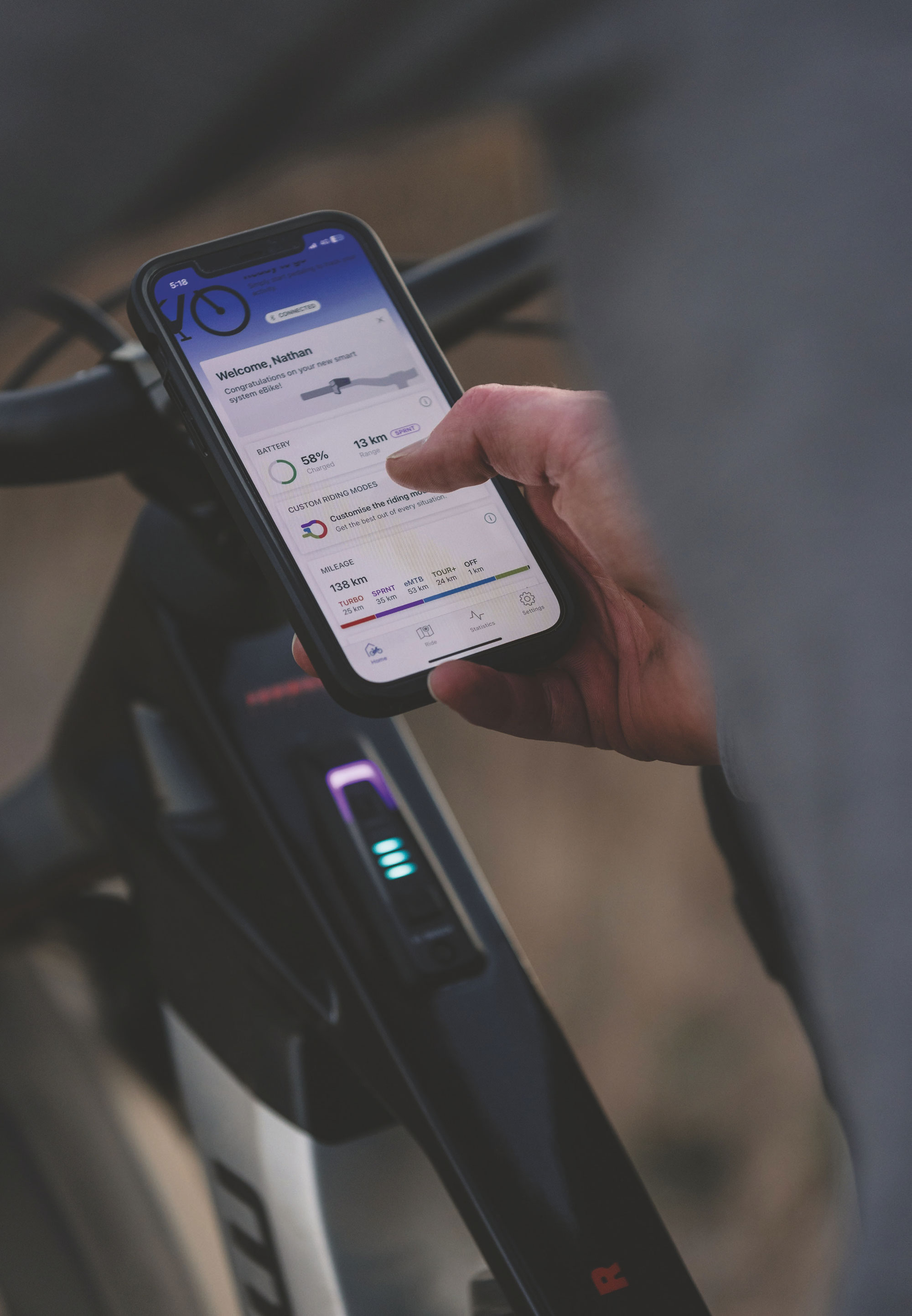
Going on a deep dive on the bike itself, The Dune R is a solid package. Mondraker has three tiers of the Dune R and this is the most affordable. Build-wise, this is in line with what you would expect at this price point. The headset was super clean with the internal cable routing; that was a nice touch and didn’t impact the steering range. Having the 180mm fork on the front means it’s quite a burly bike. I had thought it would be a bit of a handful but was pleasantly surprised on some of the tighter spots we rode; it still felt light and manoeuvrable and handling was really good. Mondraker uses their own patented dual link suspension design where the shock is compressed at both ends. This gives the bike amazing pedalling efficiency, a very progressive nature. It felt lively and responsive, firm but still plush. It was also very quiet and the build quality was immaculate. The geometry was that classic Mondraker style from their race pedigree – an aggressive approach for descents where you’re tucked in but, if you’re sitting down climbing, it puts you in a good spot. Mondraker also has a unique approach to its high-end carbon bikes. They use pure Toray Carbon with a unique layup to achieve low weight, high strength and stiffness. Most carbon frames are composites where carbon is mixed with fibreglass, so this is very solid. The bike itself really is an amazing first pairing with the Bosch SX system. I think the overall aggressive approach of the Dune makes this a compelling option.
After riding this bike, I asked myself who the bike and – specifically – the Bosch SX system could be suited to?
For advanced riders, the eBike choices are really interesting now, especially if you’re someone who’s come from an acoustic bike. This bike and system is not such a drastic jump as it would be to a full-powered eBike. It has a super-natural feel; you’re taking an analogue experience and you’re just giving it enough assistance but not in a heavy- handed way. Likewise for existing eBike riders, this presents a really different ride experience.
This system will suit someone who loves technical climbing and still wants the capability to manoeuvre, but understands that it is going to ride like a trail bike on the descents as well. It has got the right amount of torque, you can spend most of your time using the low assist modes but with the reassurance that you can bump up to eMTB when you need it and dial it back down when you don’t. Even if you’re riding with people on non-eBikes you can still chuck it in the lowest mode and ride quite naturally in a mixed group, which is sometimes difficult to do with a full-powered eBike.
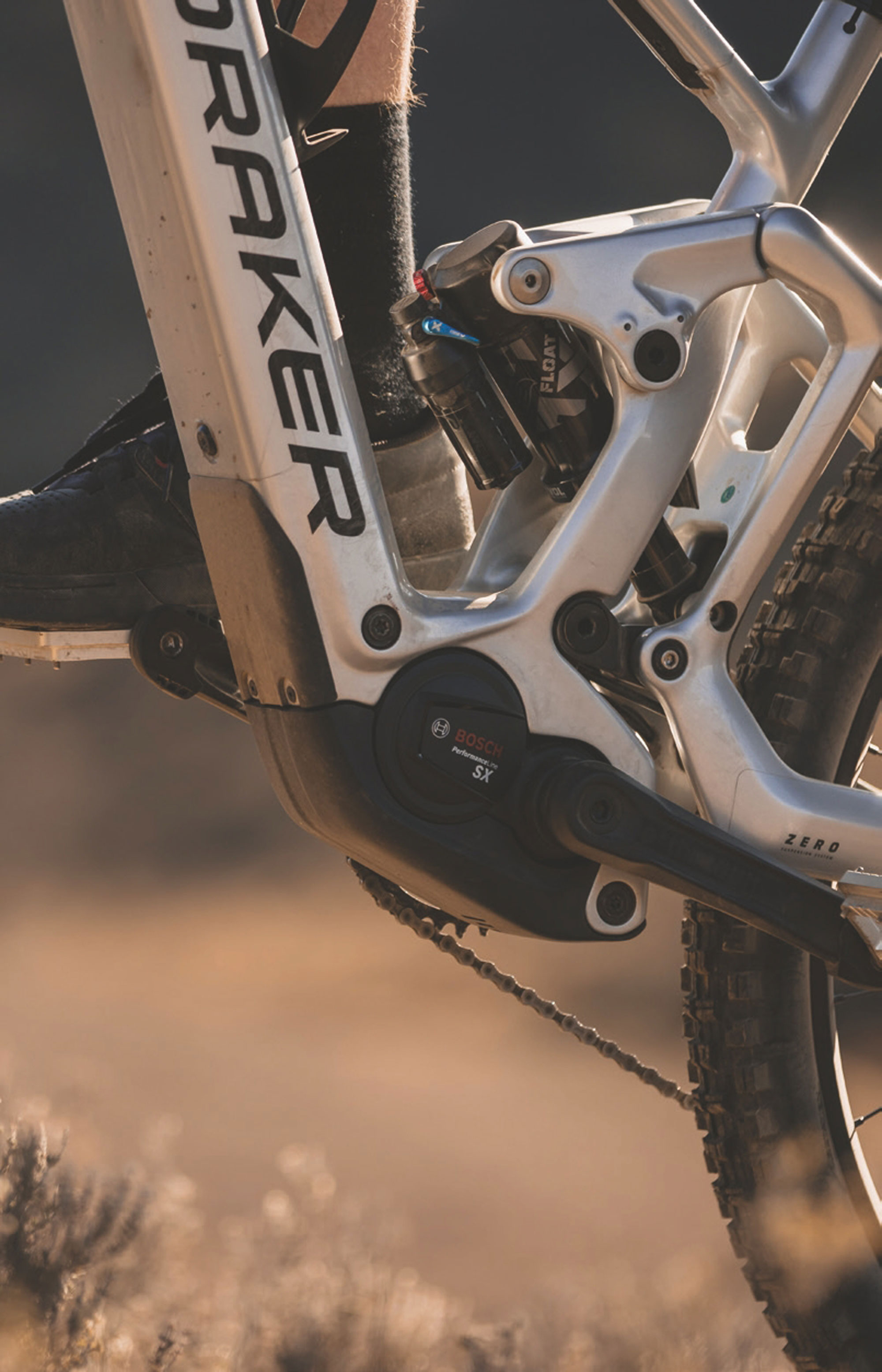
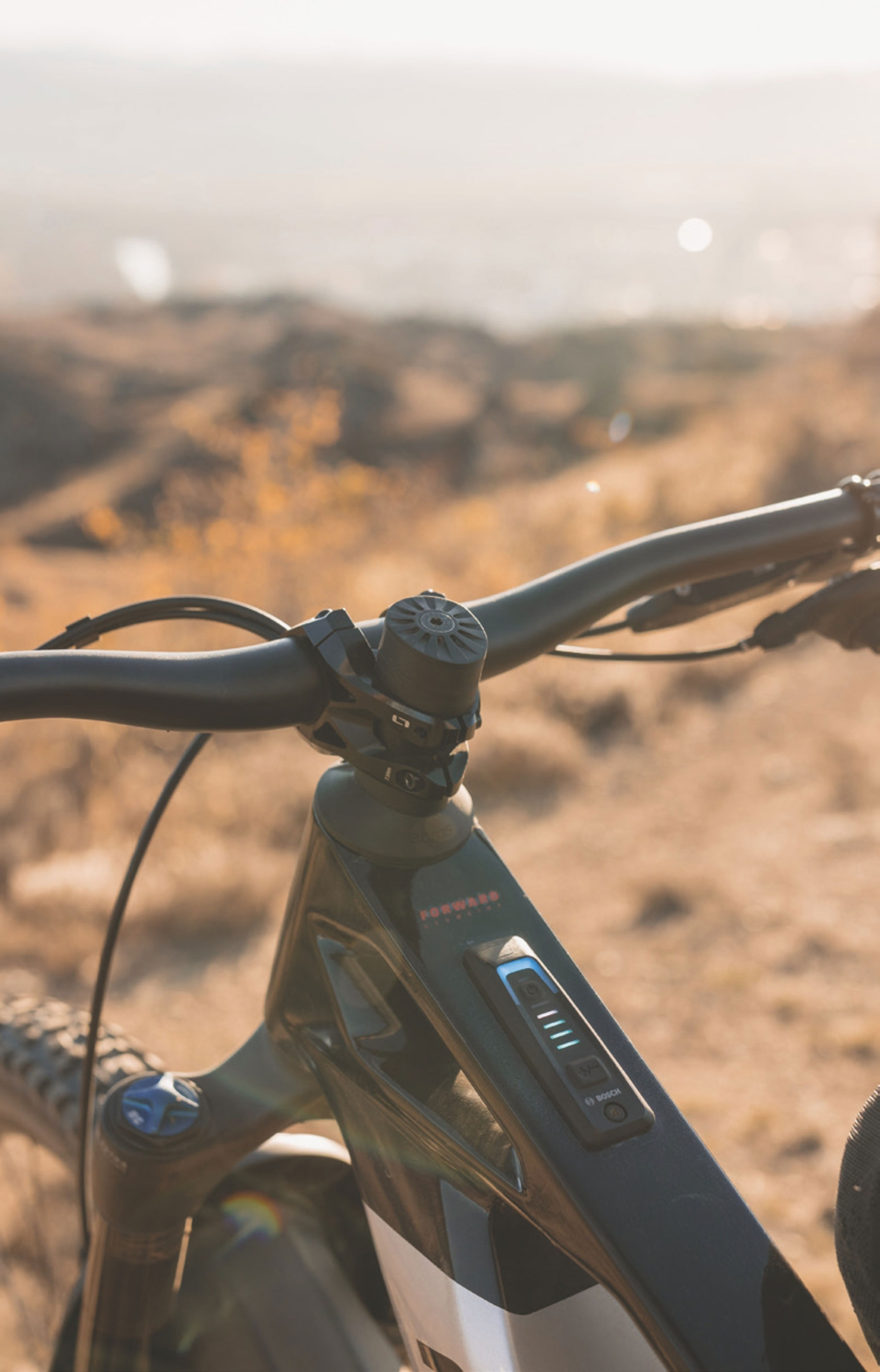
This system will suit someone who loves technical climbing and still wants the capability to manoeuvre, but understands that it is going to ride like a trail bike on the descents as well.
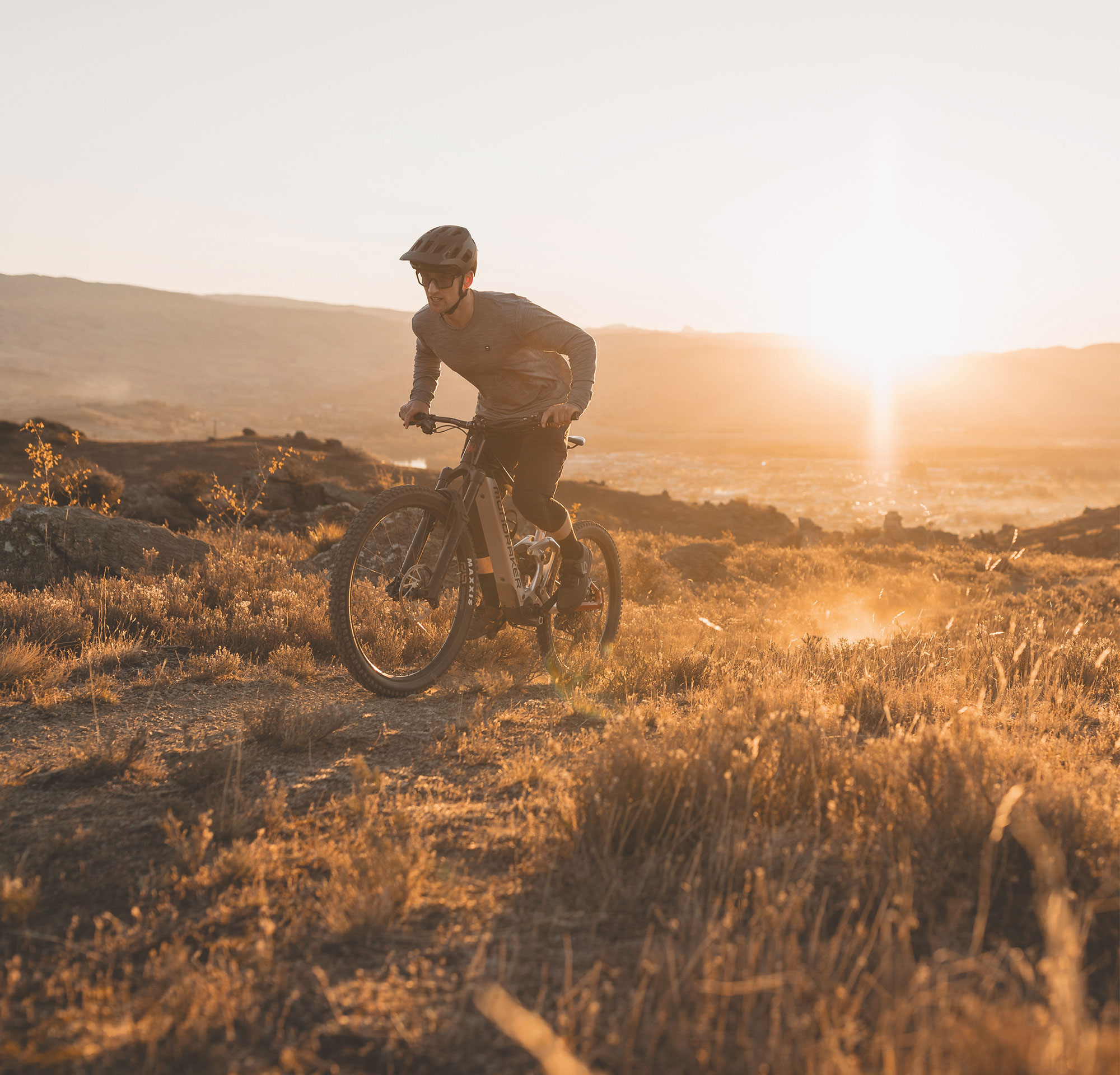
I think this could be the ultimate system for backcountry and hike-a-bike missions. The SX has plenty of torque and power, so you can climb the more unusual trails you come across on backcountry outings – and having the option of the range extender gives you that certainty of range. An eBike assists you in exploring places you otherwise wouldn’t reach, but there are always sections where you’re going to have to carry your bike over deep river crossings, where trees are down or you’re navigating a washout. Hauling a bike over that unexpected stuff can be taxing and this is where the weight is really important. Walk mode with the lighter weight system is also a breeze.
To sum up, it was an amazingly fun experience to ride this eBike and I was well and truly surprised at its capability. I was already familiar with the Bosch system so the SX felt comfortable while also bringing in some new experiences. Everything was developed to the expected high standard, from the overall system to the Flow App. I think the SX system fills a really broad part of the market and it actually strengthens where its full-powered CX offering fits. Once people ride it, it will change a lot of mindsets. The system that bridges both the eBike and the analogue worlds – you can have your cake and eat it too. This is the new natural.
Special thanks to Outside Sports, Matangi Station and Mondraker NZ (Allsports Distribution).
The Mondraker Dune R is available for purchase at outsidesports.co.nz and nationwide. For a full list of Mondraker NZ retailers visit mondraker.co.nz

Time ATAC XC6 Pedals
Words & Image Lester Perry
RRP $235
Distributor Worralls
Since 1987, Time pedals have been a regular feature in the road peloton, often found under the shoes of many a Tour de France contender, regardless of whether they were sponsored by them or not.
In 1991, Time added the ATAC MTB pedal to their range, satisfying cross-country riders’ need for float in the cleat while retaining efficient power transfer. Time pedals have taken multiple riders to World and Olympic glory in cross-country races, but seem to have always flown somewhat under the radar in wider MTB circles – although they’ve maintained an underground, hardcore following of those who like the feel and self-cleaning of the system.
In February 2021, SRAM acquired Time Pedals, bringing it into its extensive family of brands, boosting its profile and putting it back on people’s radars.
The few times I’ve stepped away from my tried-and-true Shimano pedals, I’ve jumped right back on them in just a few rides. I’m either too impatient and didn’t give myself time to adapt to the feel of something new, or the product wasn’t up to par. Until the box turned up with the Time XC6 pedals inside. I’d never even considered trying Time pedals, such was my fear of changing from the familiar.
Featuring a hollow steel axle for lightness and durability, a composite body, and tension adjustment, the features of the XC6 are familiar. The ATAC retention system offers easy engagement, and its open design helps clear debris each time you step in, the cleat forcing debris out through the retention device.
There are two heel release angles available, depending on which shoe you mounted which cleat on. One configuration gives a 13-degree release angle and swapping the cleats left for right gives a 17-degree release angle. Whichever way you choose to set up the cleats, there’s a 5-degree angular float. Uniquely, and fitting with Time’s aim to offer more ergonomic pedals than their competition, there’s also a +/-2.5mm of lateral float helping a rider’s legs move in more natural planes.
Clipping in is more or less the same as what I’m used to, a positive feel, and an audible click as the cleat snaps into place. Compared to what I’m used to, there’s a more progressive feel as you unclip, a slow build of tension before it pops free, rather than the firmer ‘snap’, almost instant, feeling I’m used to.
With cleats set at 17 degrees, I found them odd – far more ‘twist’ of the foot was needed than I liked, leaving me unsure I’d get along with the system, as I couldn’t get my foot out as fast as I needed for an emergency foot dab! I imagine some riders would like the feel of being able to move their feet around this much without fear of them unclipping, but it’s certainly more than I’d like.
After my experience at 17 degrees, I not so enthusiastically swapped the cleats around to the 13-degree release set up. What a game-changer that was; a more familiar feeling, although still different from my norm, and a completely different experience from the 17-degree. Only after the swap was I really beginning to click with these pedals! (See what I did there?) There are only three clicks of tension adjustment on offer and I really thought Time had missed a beat here, but after some experimenting, I tensioned them up to max and left them. The retention is so solid that I haven’t felt I needed them any tighter.
Using the XC6 pedals exclusively on my Shimano XC-901 cross-country shoes, they feel nice and solid; there’s no fouling with the sole or anything unexpected while clipping in or out. They feel noticeably more locked-in than other systems I’ve used and feel extremely positive under power. There’s almost no torsional movement or rocking of the shoe once clipped in, and no ‘up and down’ play between pedal and cleat either, just a very secure feeling all around.
After spending a few months on the pedals I’ve been impressed, they’ve done their job without skipping a beat and I’m now surprised Time pedals don’t feature more on people’s bikes, particularly in one of the more popular ‘trail’ styles that Time offer.
Clipping in is more or less the same as what I’m used to, a positive feel, and an audible click as the cleat snaps into place. Compared to what I’m used to, there’s a more progressive feel as you unclip, a slow build of tension before it pops free, rather than the firmer ‘snap’, almost instant, feeling I’m used to.
While out of the saddle pedalling up steep inclines, I’ve occasionally felt my shoe moving forward and backwards a fraction. I’m putting this down to the bars of the retention device moving a smidgen, they’re basically two springs so I figure they’ll move slightly in some scenarios. Not a biggie and by no means a deal breaker, but it was a bit unnerving at first although it’s only in extreme uphill scenarios when it is noticeable.
Thus far the only wear on the pedal body is cosmetic, and the cleats have lasted well, although being brass I wonder if they’ll wear quicker over winter in some slop. My only real concern is noticeable groves wearing in front of, and behind the cleat on my shoes, the mechanism has worn into the carbon sole slightly. This isn’t a worry yet, although I’ll be interested to see it in another six months. I do wonder if they “bed in” and then stop wearing any further. I know other pedal brands offer “shoe shields” but Time doesn’t appear to; these would remedy this I’m sure.
After spending a few months on the pedals I’ve been impressed, they’ve done their job without skipping a beat and I’m now surprised Time pedals don’t feature more on people’s bikes, particularly in one of the more popular ‘trail’ styles that Time offer.
If you’ve had knee or hip issues in the past, want pedals that clear muck exceptionally, or simply want something a little different from your mates, then don’t look past the Time pedals!
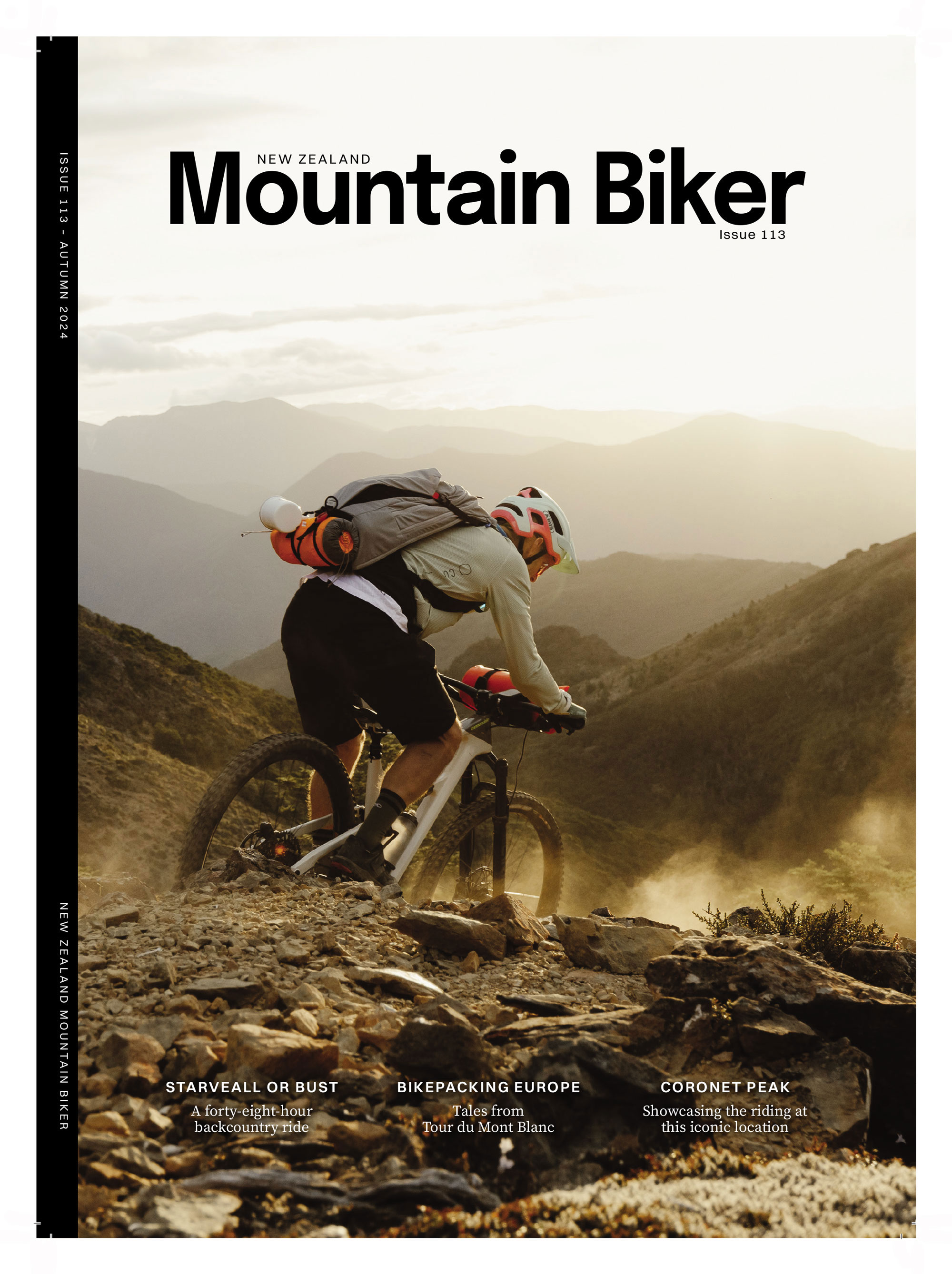
CamelBak M.U.L.E 5 Waist Pack
Words Lester Perry
Image Cameron Mackenzie
RRP $179
Distributor Southern Approach
Let’s face it: most people avoid riding with a backpack at all costs, particularly on hot summer days. Out on the trails, we see all sorts of things strapped to bikes, but if you’re hoping to go further afield and into the outback then you need more than that tube, a CO2 canister and a tyre lever strapped to your top tube, let alone the need for extra hydration.
The CamelBak M.U.L.E is a worthy attempt to solve the problem of not wanting to wear a pack, whilst carrying almost as much gear as a small pack, along with some extra hydration. The hip-pack weighs in at 320 grams and offers a 3.5-litre capacity. It’s sewn from a hardwearing, lightweight 200D Nylon Ripstop material. An Air Support back panel helps with airflow between the pack and the body, using an open mesh and foam combo to help air move between the two.
The M.U.L.E has lots of storage options; the main compartment has a pocket for the bladder and some internal pockets to help keep small items in place and right where you put them; and there’s also a smaller outer pocket. On either side of the main compartment are bottle holders, designed for a regular-sized CamelBak Podium bottle but ideal for whatever you want to stuff in them. The waist strap helps support the load on the hips and adds stretchy pockets with envelope closures on either side of the main compartments, ideal for small items you want easy access to without needing to rotate the pack forward. Compression straps can be cinched up to hold the contents in place and help keep the weight close to the body. Along the bottom of the pack are some elastic loops, offering additional external storage, ideal for a jacket, large salami, or half-eaten baguette.
The M.U.L.E comes supplied with a Crux 1.5L hydration bladder, offering effortless access for your sipping pleasure thanks to its nifty QuickLink magnetic holster and high-flow bit valve. If you wanted, you could forego the bladder and add bottles to the side pockets for a more versatile and adaptable setup.
Having a waist pack on some of our hottest days, rather than a full pack, has been great - it’s so much cooler to wear.
As you can see, there’s quite a lot going on with the M.U.L.E. I’ve found it a versatile piece of kit, using it on some lengthy rides, sans bladder, mainly as a place to stow some tools, food, and a jacket, while keeping bottles on my bike. I’ve generally left it loaded up after each ride so I can just clip it on when I’m heading out for a dawn raid, knowing I’ve got everything I need for every eventuality, within arm’s reach. Having a waist pack on some of our hottest days, rather than a full pack, has been great – it’s so much cooler to wear. Without a full bladder in there, the capacity is quite large and I can’t imagine anyone would need anything bigger than this to carry a day-trip worth of gear.
On adventures where I’ve added the 1.5-litre bladder into the mix, I’ve found the pack quite heavy, probably a good couple of kilos hanging off my hips. When I was breathing heavily while seated (think a steep hour-long climb) the waist belt got in the way of breathing freely – not ideal. Trying to remedy this, I’ve taken to fitting the strap as low on my hips as possible; this helps to a point, but doesn’t solve the problem. I have found it’s better suited to riding a more relaxed, upright position (i.e. on an Enduro bike) and when I’m not puffing hard it’s certainly not as noticeable.
Does it work well? Yes. Is it comfortable and unobtrusive to use? Sort of. It’s comfortable to wear and I’ve appreciated being able to have a bunch of kit on hand, but when the bladder is full, all that weight hanging off my hips and interfering with breathing kills the advantages of using it for me. I’ll keep using it to carry gear and food when required, but only use a full bladder when there’s really no other option.

Shimano GE700 Shoes
Words Lester Perry
Image Henry Jaine
RRP $249
Distributor Shimano NZ
If the shoe fits, wear it.
The GE7 is part of the latest range of redefined Shimano shoes. Much like the flat pedal- focussed GF6 we reviewed in our previous issue, the GE7 has received a new silhouette and last, as well as incorporated a host of Shimano’s latest tech and buzzword features.
Striking a healthy balance of inspiration from skate, MTB, and outdoor shoes, I’d say there are equal parts of each included in the design; the GE7’s styling doesn’t delve too far into any one category. Internationally. I see there’s a light grey colourway available with some nice earthy-toned accents – certainly in line with current fashion trends, but unfortunately this appears to be unavailable in NZ. If you like black then these will be right up your alley. And, fortunately, black goes with everything! Want some colour in your life? You can step up a level to the GE9 – essentially the same shoe but with a BOA tensioner.
I’m roughly three months – and a tonne of varied rides – into my time with the GE, and I’m stoked about these kicks. The synthetic leather upper is showing few signs of wear, although just like a glossy black Audi, it’s tough to keep them looking clean. Sturdy laces keep the shoe secure on foot and, rest assured, there’s nothing mechanical to worry about breaking when you’re in the back blocks of nowhere. The chunky Velcro strap at the top of the shoe can be cranked down as tight as you’d like, providing a super secure heel hold if that’s what you’re after. Laces can be tucked tidily under the strap for snag-free riding or hiking.
If you’ve ever kicked your toes into a rock while foot out drifting through a turn, or clipped a root while rodeoing through a section of trail, you’ll appreciate the robust cap over the front of the toe box.
I’m roughly three months - and a tonne of varied rides - into my time with the GE, and I’m stoked about these kicks.
There’s a substantial amount of fore and aft adjustment in the cleat bed, so regardless of your beliefs on cleat positioning, you should find your nirvana with these shoes. While clipping in, there’s no interference from the sole with the pedal and, in classic Shimano fashion, the cleat glides right on into, and out of, the pedal unhampered. Honestly, I’ve had a hard time with shoes over the years, and I’m always nervous to try anything new.
I’m after a reasonably stiff sole for pedalling but want a shoe that’s equally as walkable; the holy grail, Goldilock’s porridge sort of vibes. I’ve had gravity-focused shoes from Shimano that were plenty comfy, but too flexible while pedalling for my liking. Utilising Shimano’s Torbal 2.0 midsole, the GE7 offers what I reckon is edging on the perfect level of stiffness for trail and gravity endeavours, ticking all the boxes for me. I’ve been impressed by how solid they feel on the pedals, there’s minimal flex under power – there is some but it takes some watts to really feel it, and there’s enough flex that they feel quite natural through the transition from heel to forefoot while walking.
The Volume Trail Last gives a snug fit through the midsection up to the ball of the foot, then widens significantly towards the toes. This shape is ideal for us jandle-wearing Kiwis or anyone with a wide foot. The roomy heel cup doesn’t strangle your Achilles but is secure enough for minimal heel movement while on the gas, and even while walking the heel remains pretty well locked in place.
The midsole has an EVA foam section running the length of it, providing a comfy level of cush for walking – plus it noticeably dampens vibrations while clipped in. Shimano have nailed the rubber outsole by utilising their new ULTREAD GE rubber. While unclipped, there’s a stable platform and traction to stop you from getting too sketchy on the pedals in those situations when you just can’t get clipped in. Scrambling up steep inclines is sure-footed thanks to deep knobs under the toes. These, combined with compliance at the toes, give the shoe an almost hiking boot feel while tackling hike-a-bike sections – impressive for sure.
These are hands-down the best all-round MTB shoes I’ve used. I’ve struggled to find any fault or weak point and I think you’d be hard-pressed to find a better pair for general trail use. I don’t make that statement lightly: they really are that good.

Cannondale Habit LT1
Words Lester Perry
Images Henry Jaine
RRP $8699
Distributor Worralls
A summertime fling.
I was sitting at the top of St Arnaud’s ‘What’s Up Doc’ climb; my watch showed 7:30am. It took me an hour and a bit to get here from where I’d camped, and the sun had just peeped over the ranges beside me. Alone aside from the bike, I pondered how many days we still had together, knowing our time together was soon to end.
It wasn’t love at first sight, and although she had some flaws, I’d learned to live with them. Eventually, when the curtains closed on our time together it was tough; this diamond in the rough had left a mark and I didn’t want to part with it.
I was stoked when Cannondale hired a host of creative and stylish riders to form the Waves team, including the unmistakable ’Rat Boy’ Josh Bryceland, to rep their Habit platform. At the time, a short travel trail bike leaning towards a playful style of trail riding. I wasn’t sold on its relatively short travel though; its 130mm in the rear and 140mm front travel left me wanting more. It was just too limiting for my preferred riding spots.
Step forward a few years and in comes the Cannondale Habit LT 1, a longer-legged version of the Habit. The new LT (Long Travel) platform followed on from the Habit, taking its rugged good looks, balanced geometry and all-around fun factor, but in a slightly more forgiving 140mm/150mm package – right up my alley. The LT’s longer travel broadened the type of riding it’s suited to, pushing it toward the rowdier end of the spectrum but without the excess weight and sloth of a full gas enduro bike.
Having spent the bulk of my recent summer months aboard the Habit LT 1, both on my local trails and across a full buffet of South Island holiday road trip adventures, I’ve put this rig well and truly to the test, discovered what I liked and disliked, and ultimately got a good appreciation for what it’s all about.
Before I even set eyes on the bike, I needed to let Cannondale NZ know what size I’d need. According to the Cannondale size chart, at 176cm tall I sit right at the top of the Medium, or bottom of the Large size. What to do? Comparing the geometry of the Medium to that of my own ride I decided it was too short, and the Large was probably larger than ideal, sort of a Goldilocks’ porridge situation. I came to the decision that I’d likely feel cramped on the Medium but could get accustomed to the Large and its 475mm reach. A few weeks later the rig arrived fully built and ready to roll. The Large did feel ‘large’, but not too big; game on!
Clean lines and oversized junctions set the scene for the Habit LT1’s frame. Visually, there’s nothing too out of the box or polarising, although the headtube junction and bottom bracket cluster are pretty substantial. I wouldn’t go so far as to say they’re overbuilt, but those junctions are a noticeable feature of the front end. A full carbon construction, everything other than the suspension linkage is sweet, sweet, carbon fibre, including the chain and seat stays. With no seat stay bridge to be seen, the seat stays are separate, tied together only by the yolk that drives the shock, and the rear wheel axle.
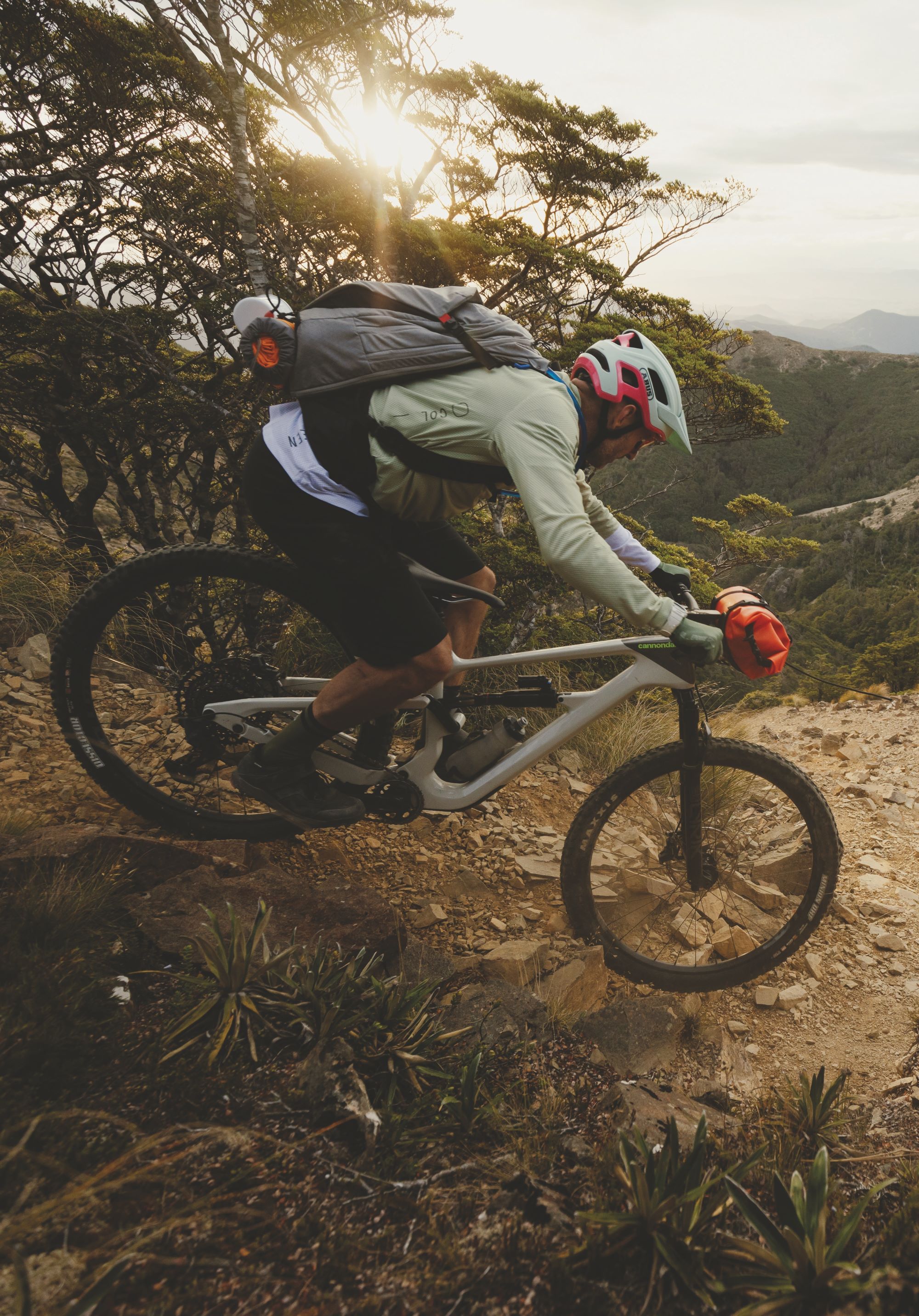
With its comfortable geometry, it’s a bike that you can easily manoeuvre around, or jump over whatever’s in front of you - think a paring knife as opposed to a meat cleaver; they both get a similar result but get there in distinctly different ways.
Cannondale has a somewhat chequered past in some respects, due to regularly adding proprietary technology or features on their bikes, which has ultimately put some riders off making the step onto the brand. It’s great to see nothing too out of the ordinary on the Habit LT line, just industry-standard sort of stuff. A threaded bottom bracket, 148 boost spaced rear end, and regular tub-in-tube internal routing for cables, no niggly headset routing or strange rear wheel offsets on this bike!
Five frame sizes are available, all with 29” wheels, aside from the XS with 27.5” wheels. It’s great to see some size-specific chain stay lengths across the sizes. Small and Medium share the same chain stay length, all other sizes are unique in length. Different length rear ends also mean size-specific rear shock and suspension kinematic tunes, keeping the bike optimised for the rider, however tall they maybe.
The head-angle sits at a conservative but precise 64.7° and the seat tube is an acceptably steep 77.1°(effective). Geometry that’s neither here nor there, but current, and nails the use case for the bike. The main frame has a single bottle cage mount on the downtube, and an accessory mount under the top tube. In the large frame I tested there was heaps of room for a full-size bottle in the front triangle – that’s a win in my book.
Cannondale designers have done a nice job of helping to keep the frame looking fresh long-term, and quiet to ride with well-thought-out rubber protection on the downtube, chain stay and seat stay. Strategically placed top tape keeps other key areas on the frame scuff-free. The addition of a rubber mudguard behind the bottom bracket, over the main pivot, keeps the area contaminant-free and helps with bearing longevity.
Spec-wise, we’re looking at some familiar, tried-and-true hardware on the Habit. A complete SRAM GX Groupset, there’s only one cable and it’s not an electronic one, a complete manual setup here. If you want to upgrade to the latest T-type transmission, there’s a UDH hanger on the frame to allow for that. The GX groupset in this most recent iteration has been around a few years now and it’s a workhorse on a lot of bikes of this level. No complaints here, it just needs the occasional tweak of cable tension, and a clean chain to maintain hassle-free performance.
SRAM’s Code R brakes, with a 203mm rotor up front and a 180mm out back, offer just enough power for this rig. I don’t think I’d manage with anything less on this bike. There’s plenty of adjustment on offer, so even the pickiest of fingers can find the perfect lever position. They’ve got a decent, solid feel at the lever and only on the longest descents I found a little fade in the rear, no doubt exacerbated by my rear-biased braking and that 180mm rotor, a 203 rotor on the back would be ideal.
The bike has a stable, planted feel on the trail, but still feels that there’s enough support to keep it playful and responsive rather than subdued and dull, allowing you to boost from trail features and not feel like you’re blowing through all the travel on landing.
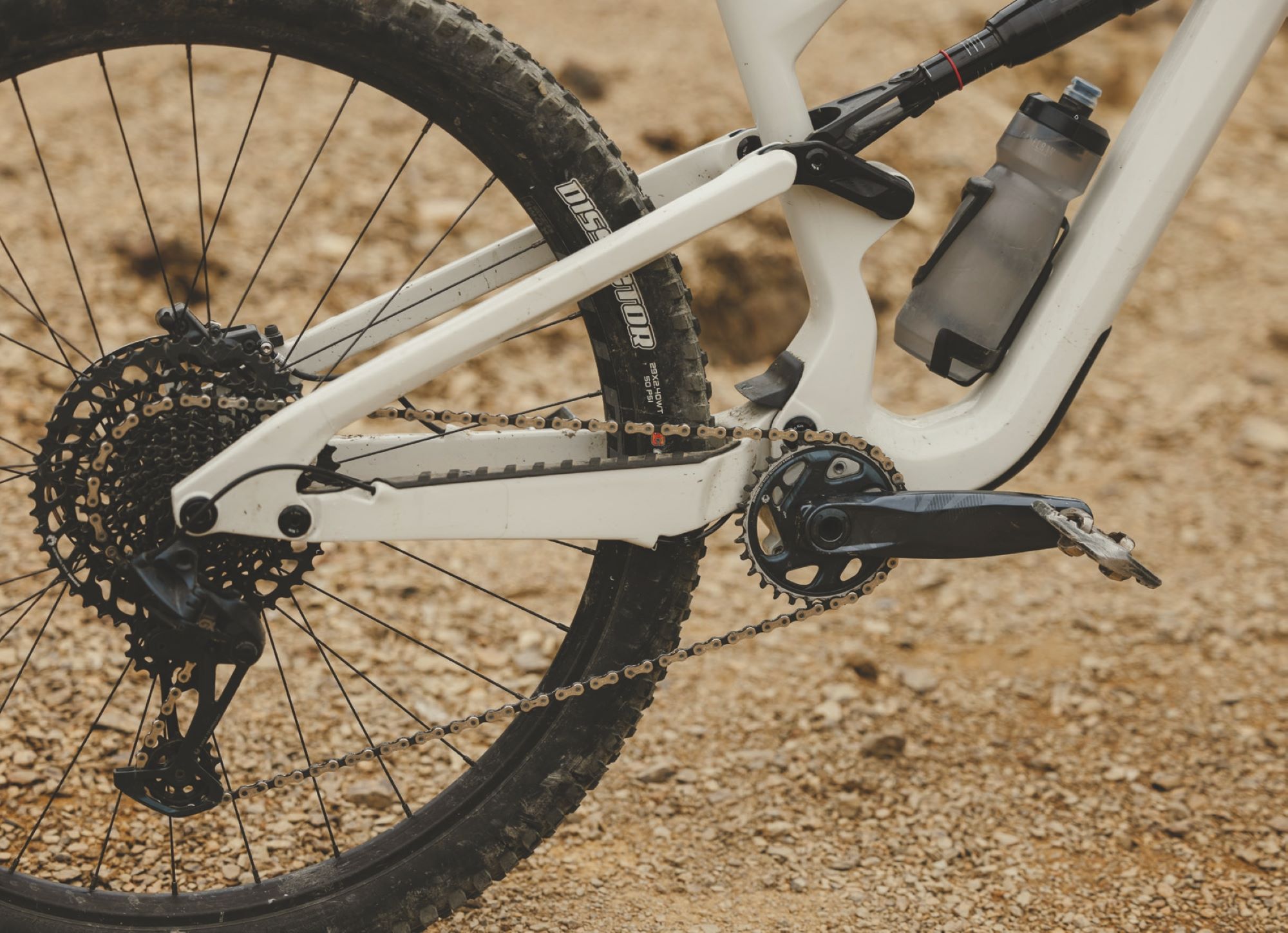
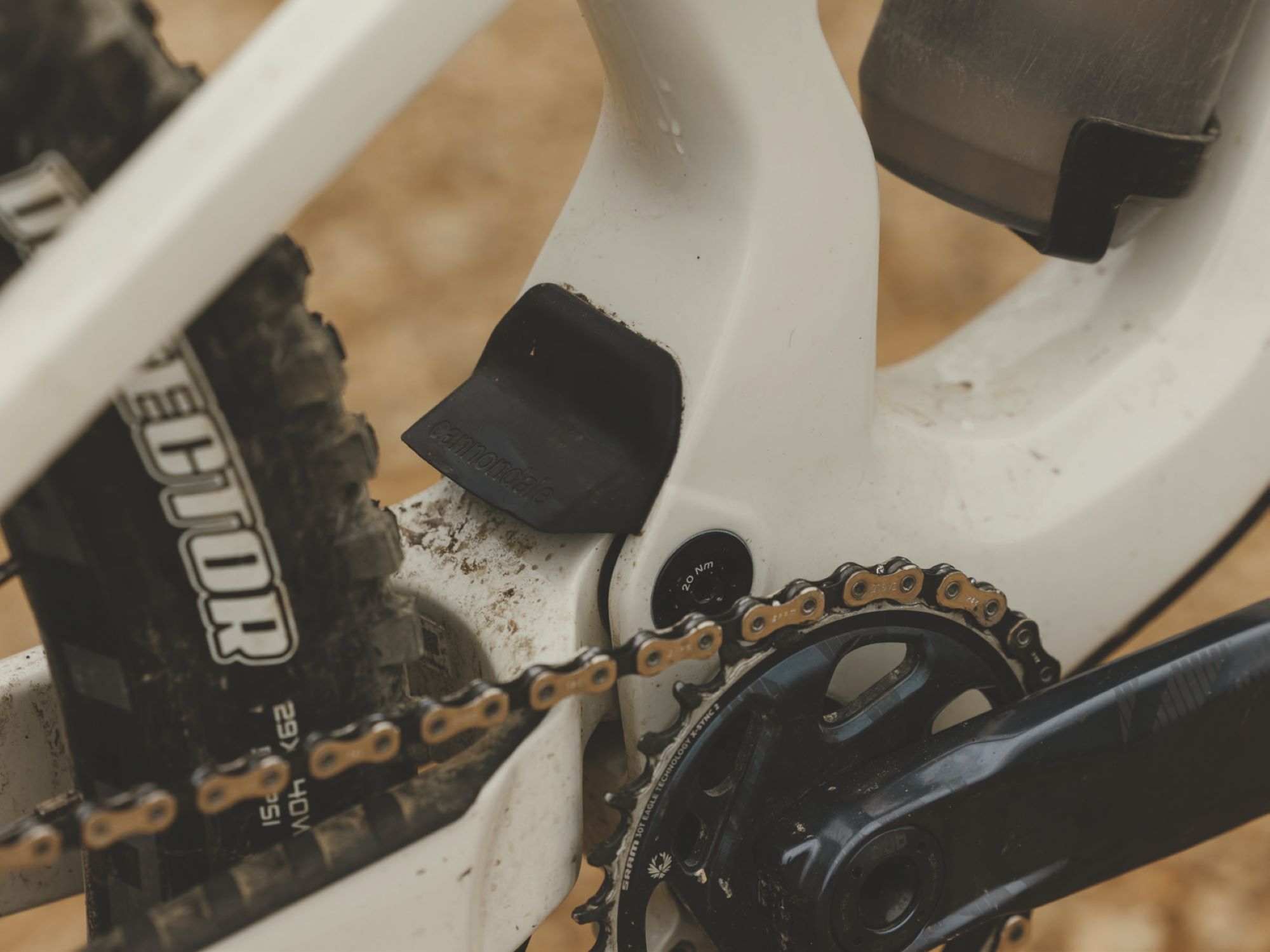
The cockpit and dropper post are taken care of by Cannondale in-house labels, while the grips and saddle are Fabric branded items. The dropper is 170mm and is nice and smooth – not a shotgun fast return but not so slow as to be an issue. The post doesn’t have the lowest stack height, but the length worked ok for me, although with a lower stack post, I’d comfortably go up to around a 190mm drop. Considering I’m right at the bottom of the height recommendation for the Large, I’d imagine the 170mm post won’t be ideal for those more towards the centre or top of the height chart. The seat tube on the Habit LT isn’t the shortest at 445mm, limiting the maximum drop possible on the bike. The dropper lever does its thing with no qualms, and is nice and smooth with a light action.
The HollowGram carbon bar is huge for a trail bike with a 30mm rise, and a full 780mm width – that’s a lot of height for a trail bike, especially one with such a large stack. Riders on the taller end of the spectrum will appreciate this much height, but as you’ll see further on, it was a slight niggle for me. The stem is also a Cannondale in-house number and comes in a nice new-school 40mm length.
The WTB KOM i30 TCS 32-hole wheels on proven DT Swiss 350 hubs have been trouble-free as expected. Not once have I had to pull out the spoke key to remedy a wobble after a cased gap or smashed root. There’s no need to discuss the hubs as it’s fair to say these beauties would see a tonne more riding before I’d even need to look at any bearings. A clean and lube of the freehub may have been necessary, had I been riding in the wet regularly – but over the review period, I touched the mud just a few times.
Shod with a pair of Maxxis tyres, there are no surprises here, or sidesteps needed from the stock spec: a Minion DHF 29×2.5” takes care of tracking up front, while highspeed rolling, but is sketchy in some conditions, with Dissector 29×2.5” features on the rear. It’s good to see Cannondale have the foresight to spec the EXO+ casing version of the tyres, no need for immediate off-the-floor upgrades if you’re an aggressive rider or live in a rocky area where you’ll appreciate the sturdier EXO+ casing over the often specced EXO. The Dissector is an acceptable summer option as a rear tyre, and great in conditions where it can cut in for some traction, but in loose or muddy surfaces it struggles for braking traction (the central knobs are quite low). The side knobs appear to lack support and fold over on the hardpack; great for squaring off berms or flicking a Scandi’ into a turn, but not so much for overall control – wear it out and replace it with a Minion DHR2, problem solved… although a little slower rolling.
Hanging off the front of the chassis is the supple and controlled (thanks to the new Charger 3 TC damper) ROCK SHOX Lyric Select + fork. I’ve been impressed by how good the fork is in all circumstances; high-speed chatter, no matter; big- hitting bangers, no biggie. A bit of experimenting with the high and low-speed compressions left me with the high-speed wide open and two clicks from fully open on the low speed; this seemed a decent setup for most conditions of trails I ride.
The rear end is damped with a ROCK SHOX Super Deluxe Select +. A visit to the ROCKSHOX TrailHead website for some baseline setup advice left me at a few hairs under 30% sag. I subtracted a couple of clicks from recommended on the rebound, speeding the back end up to just how I like it.
For sure I prefer the Habit LT’s active, supple suspension over a higher-anti squat and consequently more ‘locked out’ pedalling experience, particularly at this mid-travel level.
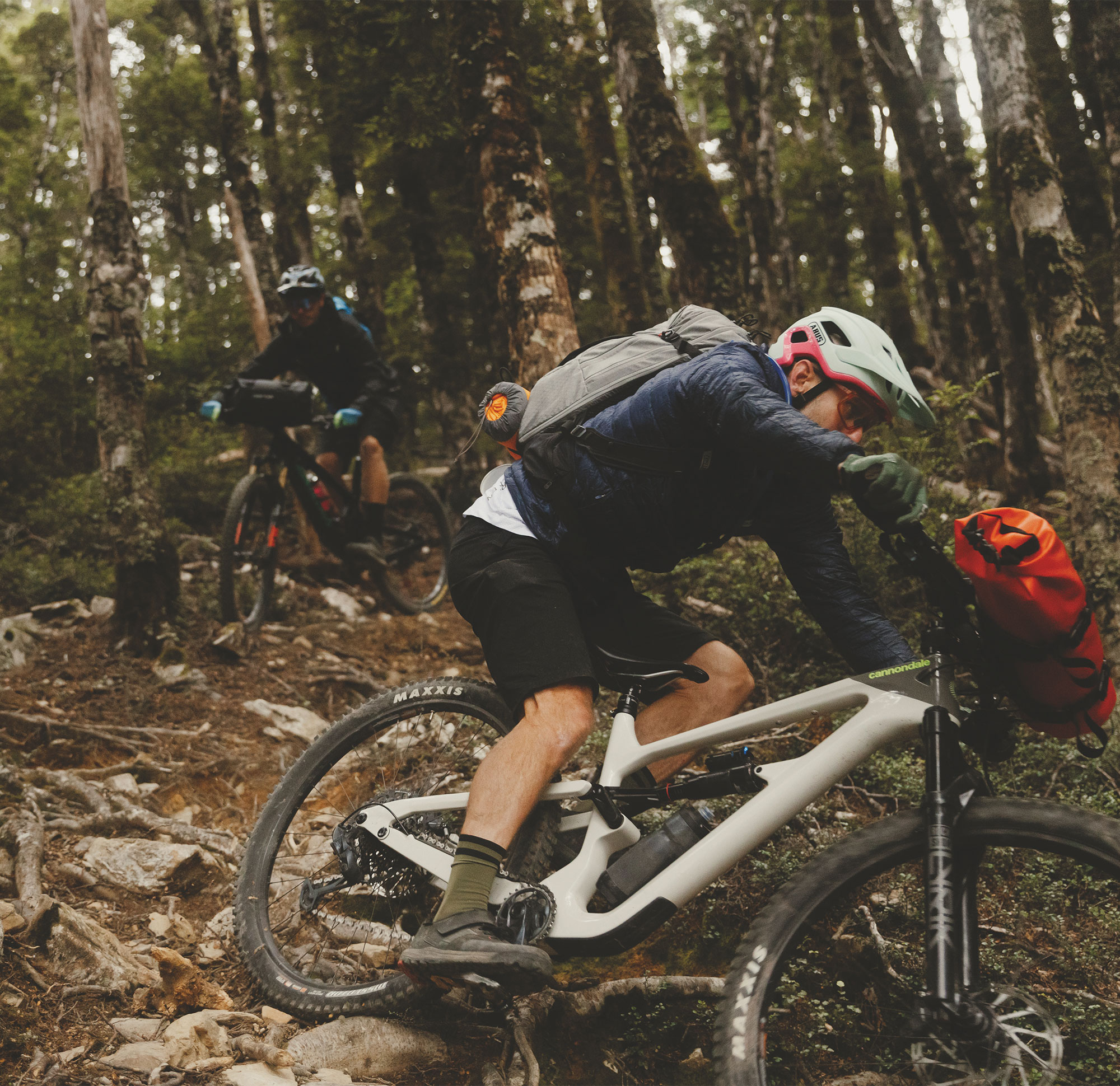
Once the suspension was dialled in, I took the bike for a quick ride and my first impression was that this bike is built for fun: poppy and playful. My second impression is how high the front end is. The large 644mm stack combined with the 30mm rise of the 800mm wide HollowGram SAVE handlebar made it super easy to chuck a sweet wheelie, or manual through a section, but on everything other than steep descents left me feeling disconnected from the front tyre. After some time with my trusty tape-measure, I landed on a 760mm wide, 15mm rise bar and a single 10mm spacer under the stem. Lowering the front made me feel more centred on the bike, with more weight over the front but still keeping the front end high enough for some aggressive riding. Once I got the front end to an acceptable level (for me), it unlocked the cornering of the bike and I felt comfy and at home. Swapping handlebars from new may be needed by some riders, but as bar height and width are certainly a personal preference it likely won’t be necessary for everyone, particularly if you’re on the taller side.
The rear suspension kinematic is linear through most of the travel, feeling consistent through most of the shock stroke and finishing with a steep ramp-up at the end of the travel, preventing harsh bottom-outs. The bike has a stable, planted feel on the trail, but still feels that there’s enough support to keep it playful and responsive rather than subdued and dull, allowing you to boost from trail features and not feel like you’re blowing through all the travel on landing.
Descending on the Habit LT is just plain fun. This isn’t a huge travel rig you can plough un- controlled into chunky rough sections, relying on huge travel and slack geometry to keep you out of trouble. With its comfortable geometry, it’s a bike that you can easily manoeuvre around, or jump over whatever’s in front of you though – think a paring knife as opposed to a meat cleaver; they both get a similar result but get there in distinctly different ways. Central rider weight keeps the bike planted, aiding traction and helping keep you very much under control. Multiple times I exited a trail surprised at how the bike handled some of the rowdier sections, particularly as it hasn’t got the longest travel, or most progressive geometry. On steep trails, with lots of large successive hits, the suspension stiffens up somewhat under the braking forces, causing the back end to feel quite harsh. Not a deal breaker, but more noticeable than some other bikes in this travel range and we’re not really riding that type of terrain often.
Low anti-squat means the rear suspension is still plenty active under pedalling, ideal for a bike aimed at descending fun, rather than pedalling prowess. Of course, this means it’s obviously very active on steep climbs, sagging into its travel and creating bob. I found this quite noticeable and was surprised by just how much it could sink into its travel on really steep uphill pitches. Fear not though; the lockout lever is within easy reach and very effective. I found most of the time I’d throw the lockout on for any extended, consistent climb but leave it open for anything resembling a technical climb as the extra traction it allowed was welcome. For sure I prefer the Habit LT’s active, supple suspension over a higher-anti squat and consequently more ‘locked out’ pedalling experience, particularly at this mid-travel level.
The bike tracks well across off-camber and through flat turns, partly due to the geometry putting rider weight centrally between the wheels, partly due to the supple suspension kinematic, but also because of the back end having a healthy amount of torsional compliance, aka flex. In recent years, designers have been moving away from the aim of having the stiffest bike, aiming for a perfectly tuned flex through the frame. If done effectively, a back end with more flex can also mean better tracking, assisting with overall rider confidence, and feel; I reckon the Habit LT nails this, whether that was the design team’s intention or not. This compliance means the Habit LT isn’t the spriteliest bike while sprinting, but it isn’t a cross-country bike either, so pedalling is secondary to overall roost-ability and fun.
Mellow trails (i.e. most of what we ride) are a blast on this bike; it picks up speed quickly, and jumping into sniper landings or pumping through sections gives a noticeable speed increase.
Cannondale reckons the ‘LT’ moniker stands for Long Travel, but I wonder if it really stands for, as the youth of today say: “Lit Time” (i.e. a “great time” to those of us who are slightly less youthful). Out of the box, as you’ve seen, there were a few things I wasn’t a fan of and, although they’re all personal preferences, they meant I needed to spend precious time getting to my optimal setup, this isn’t exactly a ‘get on and go’ bike. That said, once I got my setup dialled, this bike was awesome. It’s really changed my perspective on what bike I need as my ‘everyday ride’ and, with modern suspension, geometry and frame design, a shorter-travel bike like this can now be on par (or better) than a longer- legged bike from only a few years ago and make for an overall better experience, regardless of the few scenarios it’s not in its element.

KTM Macina Prowler Prestige & Exonic eMTB
Words Lester Perry
Images Bevan Cowan
RRP $23,499 – KTM Macina Prowler Exonic | $17,499 – KTM Macina Prowler Prestige
Distributor Electric Bikes NZ
Although the familiar orange logo is shared between the moto and bicycle brands, since 1991 they’ve been two completely separate entities after the company was split into four individual companies: motorcycles; engines; bicycles; and radiators, leaving the bicycle company standing on its own two feet under new ownership. Nowadays, the brand has a comprehensive range, from high-end eBikes to Tour de France road racing bikes and even kid’s offerings. Unfortunately, only selected models are available here in NZ.
Having seen KTM eBikes on international websites and under a few E-Enduro World Cup riders over recent years, when the opportunity came up to throw a leg over one I jumped at the chance. Then the opportunity to ride one bike turned into the opportunity to ride two levels of the same platform, a real back-to-back comparison to see the difference between two similar bikes with a $6000 price differential.
We put two bikes to the test, the Macina Prowler Prestige ($17,499RRP) and the Macina Prowler Exonic ($23,499RRP). The bikes share a premium price tag (granted, there’s a chasm between the two values), and both share the same frame, handlebars, stem and tyres, but everything else is distinctly different.
First off, both bikes are stunning to look at. There’s a nod to their moto roots with long travel suspension (170mm rear; 180mm front) chunky tyres, mullet wheel setup (29” front; 27.5” rear), and, of course, their Bosch drive units. Paint schemes are distinct: the Prestige in its platinum bronze matte, and the Exonic in a translucent orange and black. Both bikes look slick, but the Exonic takes the cake in the right light, layers of carbon are visible through the paint and the sunshine really makes it pop!
Frame
Featuring a carbon front end, the lines are clean and lead the eyes back to the aluminium 650b/27.5” specific back end. There are bosses and space for a bottle in the front triangle – great! The frame features headset-routed cables and, being an eBike, there are a few tucked in there.
It’s a nice change to have the cables tucked out of sight instead of the commonly seen bird’s nest of cables some eBikes have. Headset routing of cables is a pretty polarising topic, although with so much going on with the bike in terms of cables, controllers, drive units, battery etc, this is not a cause for concern in my book as there’s lots going on elsewhere on the bikes, too.
The battery can be removed through the hatch along the top side of the downtube. It’s a slick operation, but if there’s a bottle cage mounted it could be fiddly as space will be limited to manoeuvre the hatch lid off.
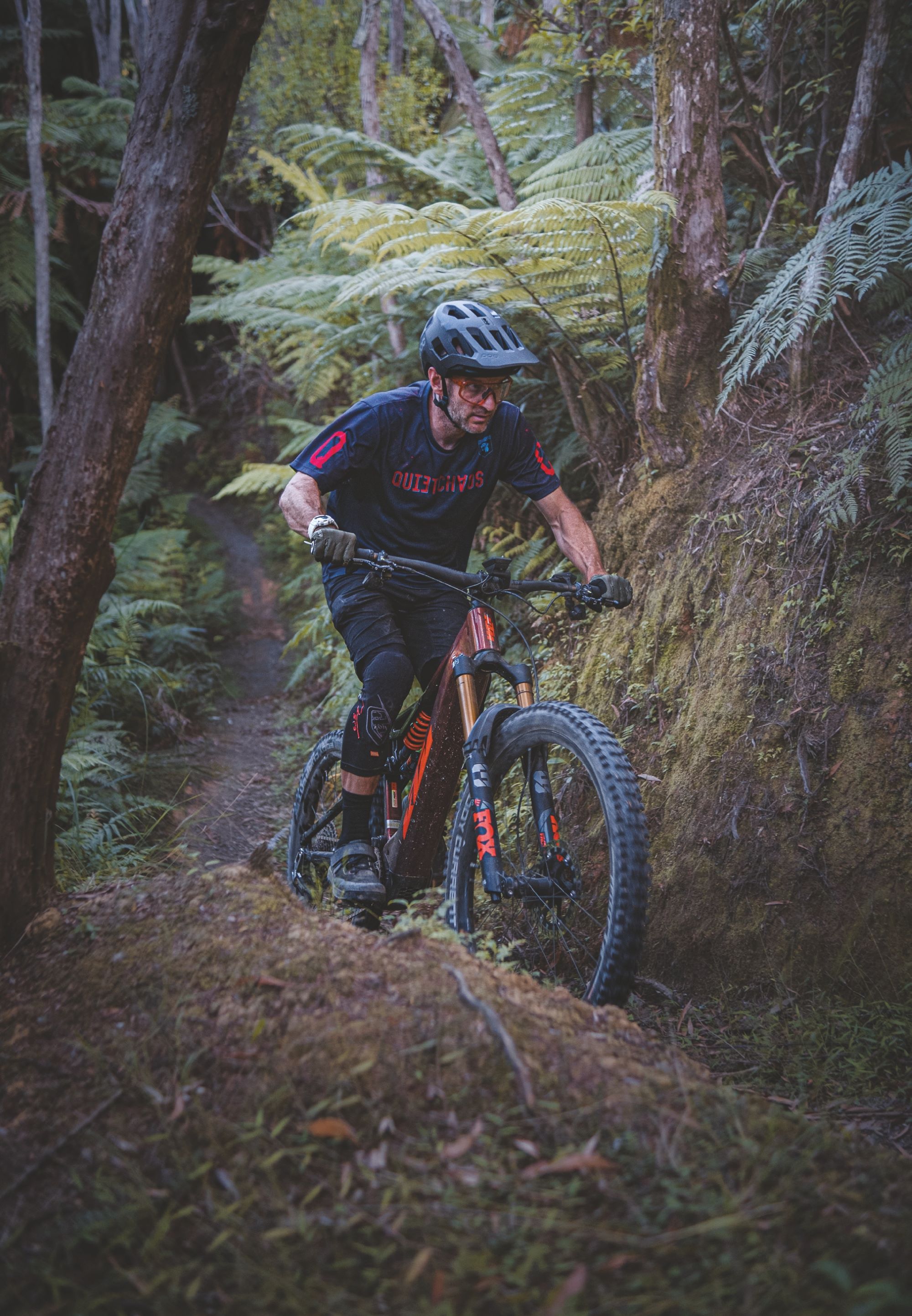
Both bikes look slick, but the Exonic takes the cake in the right light, layers of carbon are visible through the paint and the sunshine really makes it pop!
Drive Units
Bosch has cemented itself as one of the top-performing drive units for the eMTB segment, and both our test bikes feature top-level units from the German powerhouse. The Prestige features the tried-and-true Performance CX Gen 4 motor, delivering 85nM of torque through its assistance levels; Eco, Tour+, eMTB and Turbo modes. Maximum assistance is 340% in Turbo mode.
Exonic-level bikes get the CX’s newer, more brutish sibling – the Performance CX Race – it’s about 150 grams lighter than its little brother and can deliver its power faster for less effort, getting you up to speed just a fraction quicker. It can crank out 600 Watts peak power – the same as CX but with up to 400% maximum assistance – in its Race mode. The Race motor shares the same lower three assistance modes as the CX, but trades Turbo for the full gas Race mode. The CX-level motor is great for a bike like this, but the Race motor is both figuratively and literally next level. I found I had to be on my toes when riding in Race mode; if I wasn’t taking notice or weighting the bike quite right, particularly while tackling a steep pinch, the power could easily spit me off the bike. The Bosch Flow app allows some customisation for how the power is delivered across assistance levels, and given some more time I might have tweaked the setup to not be quite so peppy.
It’s great to see the drive units specced with 160mm length cranks, anything longer on an eMtb is too long in my book! Prestige bikes get solid-looking alloy KTM E-TRAIL cranks, and Exonic bikes step up a notch to a swanky FSA CK-702/IS Carbon crankset – very nice indeed. Out on the trail, there’s no discernible difference, but I’d imagine the carbon cranks of the Exonic would be marginally lighter.
An often-overlooked feature both motors share is the Extended Boost. When in eMTB or Race mode (where applicable), the motor continues to run on slightly after coming off the pedal power, continuing to deliver drive for a split second longer. This helps keep a consistent delivery of power, regardless of how bad your pedal stroke is, or having to stop pedalling to get through a technical section – think, a quick pause or half pedal kick while climbing a technical section to avoid clipping a pedal. The CX motor has the same feature, but the Race motor takes it up a notch giving a bit more of a kick. A subtle feature that I really dig.
Both systems share a 750w/h battery, offering riders great range. Of course, this also comes with a bit of a weight penalty over smaller batteries, but is well worth it in my book.
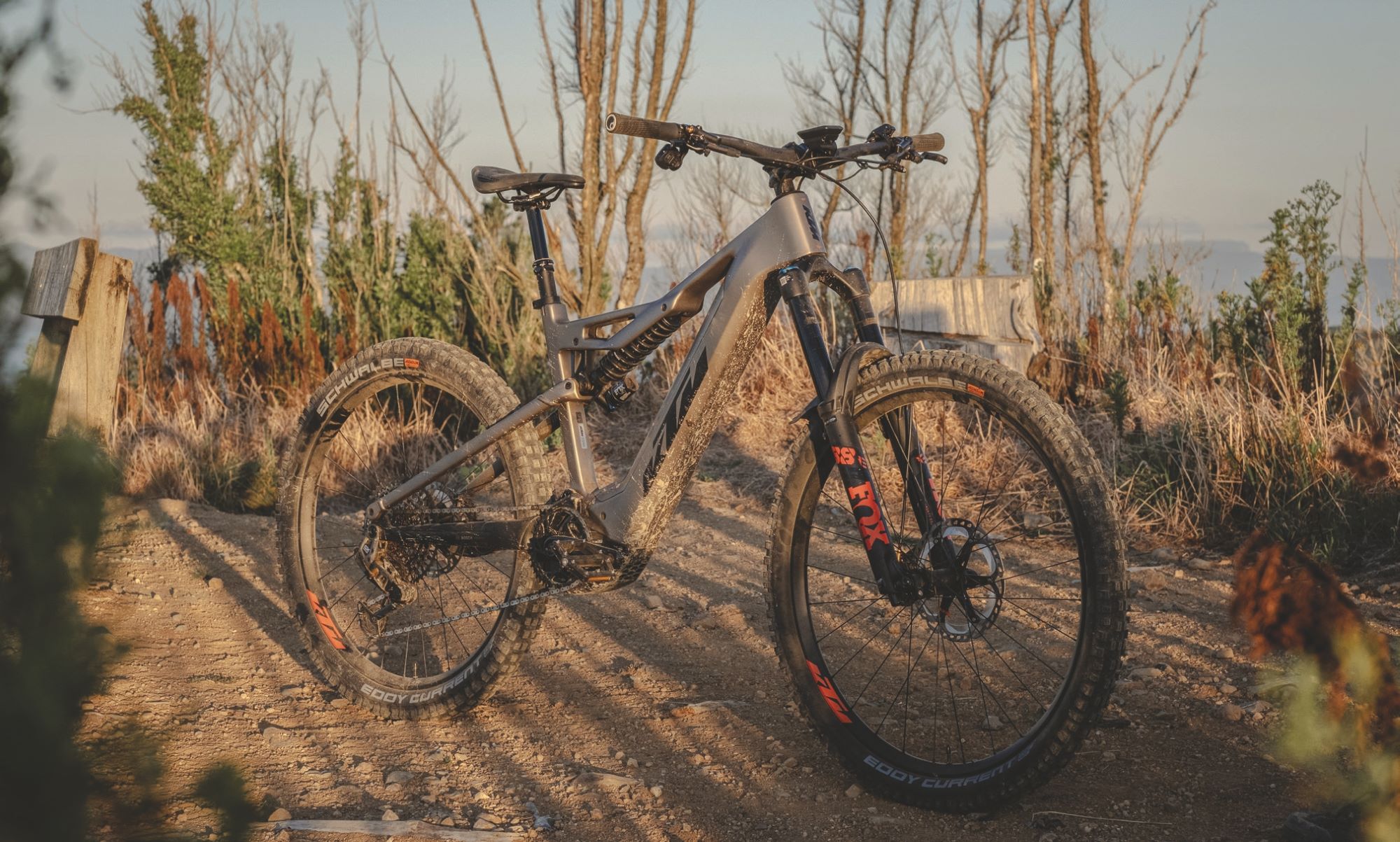
The back end of both bikes perform equally well, with a good amount of support on offer and, even on the heaviest of flat landings, there’s no feeling of a harsh bottom out.
Suspension
The Prestige features a 180mm FOX 38 Float 29” Performance eBike edition fork – simple and effective; while the Exonic runs a 180mm FOX 38 Factory Float FIT4 Kashima eBike edition. The Exonic gets the premium gold Kashima coating on its Factory stanchions, as well as dials for a 3-level compression adjustment: Open mode compression adjustment and obligatory Rebound Damping dial.
Although the Prestige’s Performance Elite fork simply has a compression lever with three positions, and a rebound dial, it’s still a top performer and is honestly so simple you can just jump on it and go – sometimes the extra adjustability of a fork like the Factory Fit4 can take a bit more effort to set up properly. Both forks are fitted with the sweet Fox-specific bolt on the mud-guard. Between the two bikes, I really like the simplicity of the Performance Elite fork – just dial in the air pressure, hop on and ride! Out the back, we find the FOX DHX2 Factory 2Position coil-sprung damper on the Exonic, and a FOX DHX2 Performance Elite 2-Position on the Prestige. Both shocks are a great option for a bike like this.Providing an exceptionally plush 170mm of rear wheel travel, the Factory level shock has just a little more of a buttery feel thanks to its Kashima coating. With high- and low-speed adjustments on compression, and rebound on both shocks, there’s plenty to twiddle with. Both shocks also have a lever to firm up the compression which, once flicked, calms the shock down while climbing. It’s not a lockout as such, but does heavily damp the compression of the shocks. I’m not entirely sure the nuances of the tuning will be that noticeable when you take into account the large tyres and the weight of the bike; some adjustment is good, but more doesn’t mean ‘better’ in all cases. Although, if you’re keen on a bit of tuning – and happy to spend the time – the results should be stellar.
The back end of both bikes perform equally well, with a good amount of support on offer and, even on the heaviest of flat landings, there’s no feeling of a harsh bottom out. Being coil-sprung, the back end is far more supple than a more commonly found air shock and thus tracks super well, keeping the wheel glued to the ground and holding its line across rough terrain. Between the two shocks, the difference when out riding is negligible and, if blindfolded, I doubt anyone could feel the difference between the two models. Depending on rider weight and preferred rear suspension feel, it’s likely a different spring may need to be fitted to achieve optimal performance – not quite as easy as just whipping out a shock pump.
Drivetrain
KTM knocked it out of the park when selecting drivetrains for these bikes. The Exonic gets a top shelf SRAM AXS XX T-type derailleur, chain and cassette. On the Prestige, we get the SRAM GX AXS T-type derailleur, chain and cassette. Both these drivetrains are ideal for an eBike; with their pin-point precision and ability to shift under power, nothing comes close to how positive they feel out on the trail and I’ve been happily snapping through gears whenever I felt the need. Handily, both bike’s derailleurs are powered by the bike’s battery, rather than the normal AXS batteries. The downside is, if the bike isn’t turned on the gears won’t shift, so should something go drastically wrong, you’ll be single-speeding home. The gear range is ample; there’s no need for any lower gears, and there are more high ratios than anyone would ever need, particularly as pedalling any faster than the 32km assistance limit is a total chore and this limit is met with two to three gears remaining, depending on your cadence.
Dropper Posts
A 150mm dropper post on a Large bike? You read that correctly. Both bikes have a 150mm dropper fitted. The Exonic gets the slick RockShox Reverb AXS, and the Prestige – a FOX Transfer Performance level post. Both are great units, the Reverb AXS gets my vote between the two, with its AXS button actuator mirroring the AXS XX shifter pod. A click of a button makes it all very easy to use. A tall rider will likely want to put a longer drop post on the bikes, but for shorter-legged riders like myself, options will be limited by the frame’s 450mm seat tube length. I found this a bit of a pain, as I’d really like a 170mm drop at least and may struggle to find one to nail my optimal saddle height without interference from the frame’s seat tube.
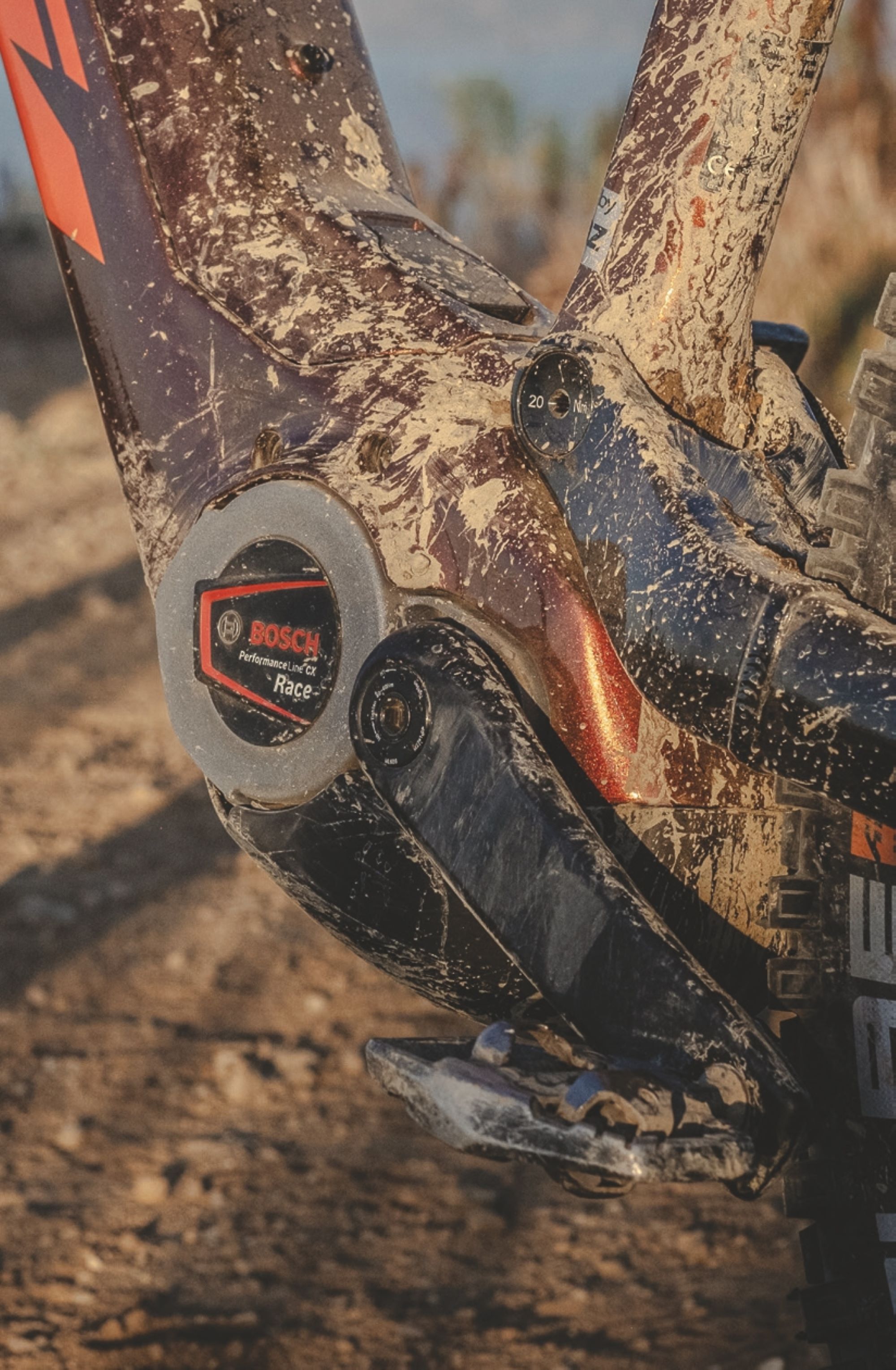
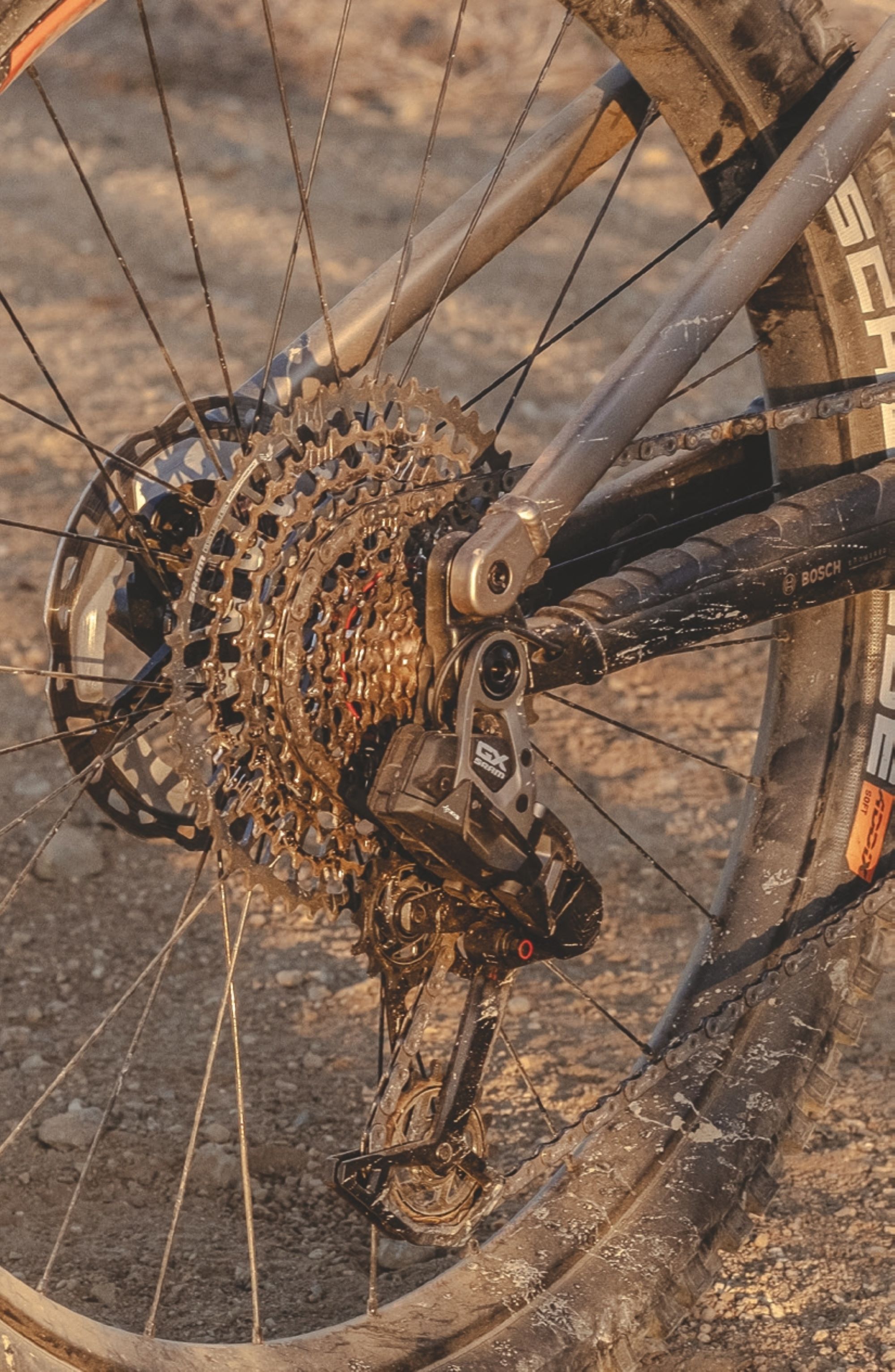
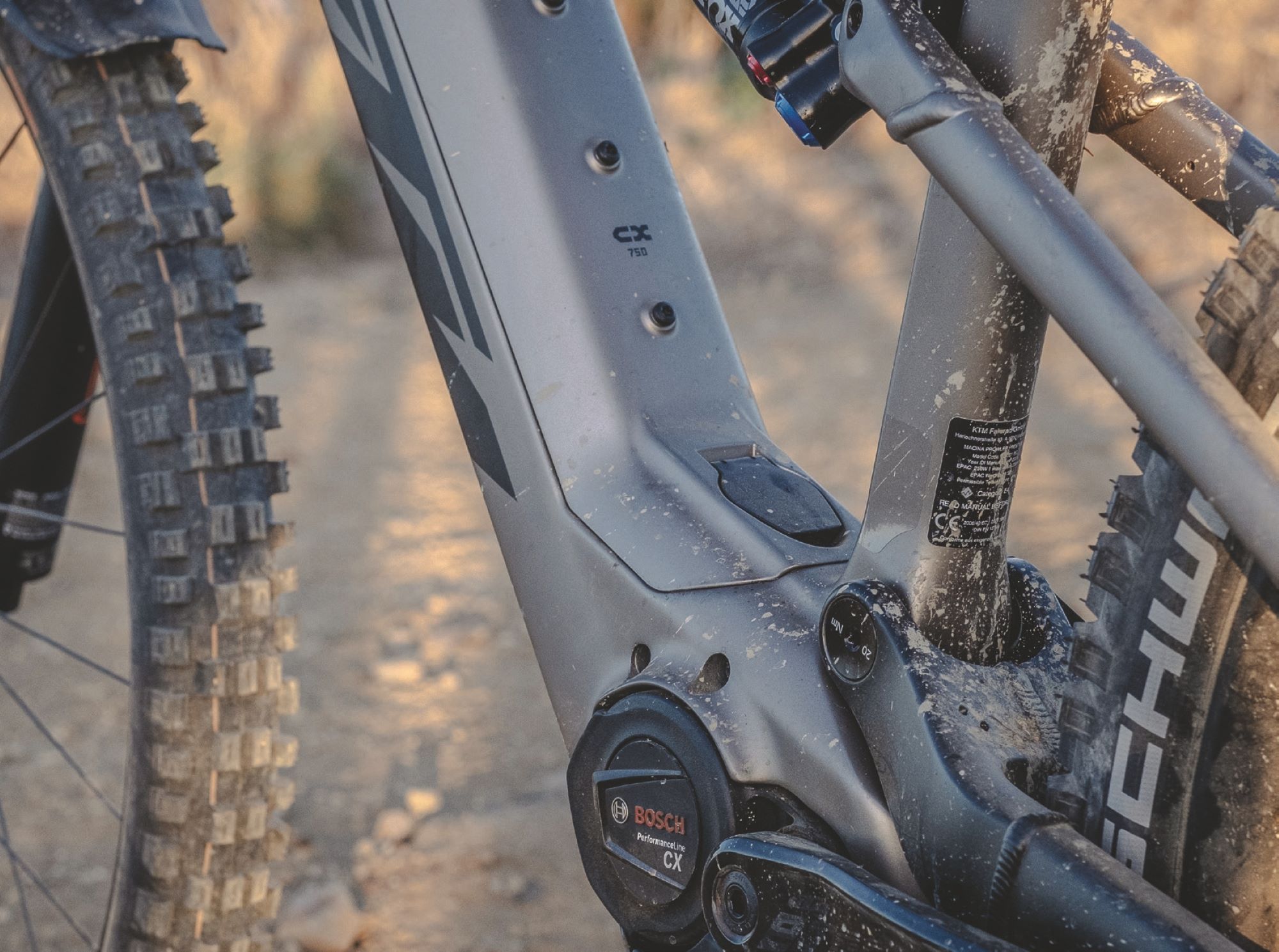
Overall, the bikes excel on flatter terrain; shining on slower, technical trails more than wide open, fast and chunky steeps.
Wheels
Wheels on eMTB are generally not something to sing about but, in this case, we see a couple of solid and distinctly different options. The Prestige has a pair of KTM E-Team Trail rims (made by DT-Swiss – and they appear to be the same as one of their downhill models) on DT 350 Hybrid hubs. The Exonic gets a pair of very swanky, carbon DT Swiss HXC 1501 SPLINE rims on DT 240 Hybrid hubs. Both wheelsets are very stout and, as you’d expect, the Aluminium rim of the Prestige gives a bit more forgiveness. But, with its faster-engaging rear hub, stiffness, weight, and overall swag-factor, the Exonic’s carbon wheelset gets my tick. The only question mark is, being carbon, does the longevity of the rims come into question – particularly if you love bashing rocks? Fortunately, DT Swiss has a good warranty policy!
Brakes
The combined weight of an eMTB and its pilot travelling at speed is a lot to slow down. KTM have specced great brakes on both bikes, but a bit of an oversight sees them both let down in the braking department. Prestige has the tried-and-true Shimano Saint 4-piston downhill brakes; they bed in quickly and offer consistent power and performance. The Exonic level gets a set of Magura MT7 HC3 4-piston brakes; they have great adjustment and, once set up, they feel nice, solid and consistent; the levers feel comfortable and ergonomic once the multiple adjustments are dialled in. Both bikes get a 203mm rotor up front which is great and offers enough bite and overall power for any scenario. Unfortunately, both bikes have just a 180mm rear rotor, simply not enough to effectively slow the momentum of bike and rider. During long steep descents the rotor overheated and the brake just lost power.
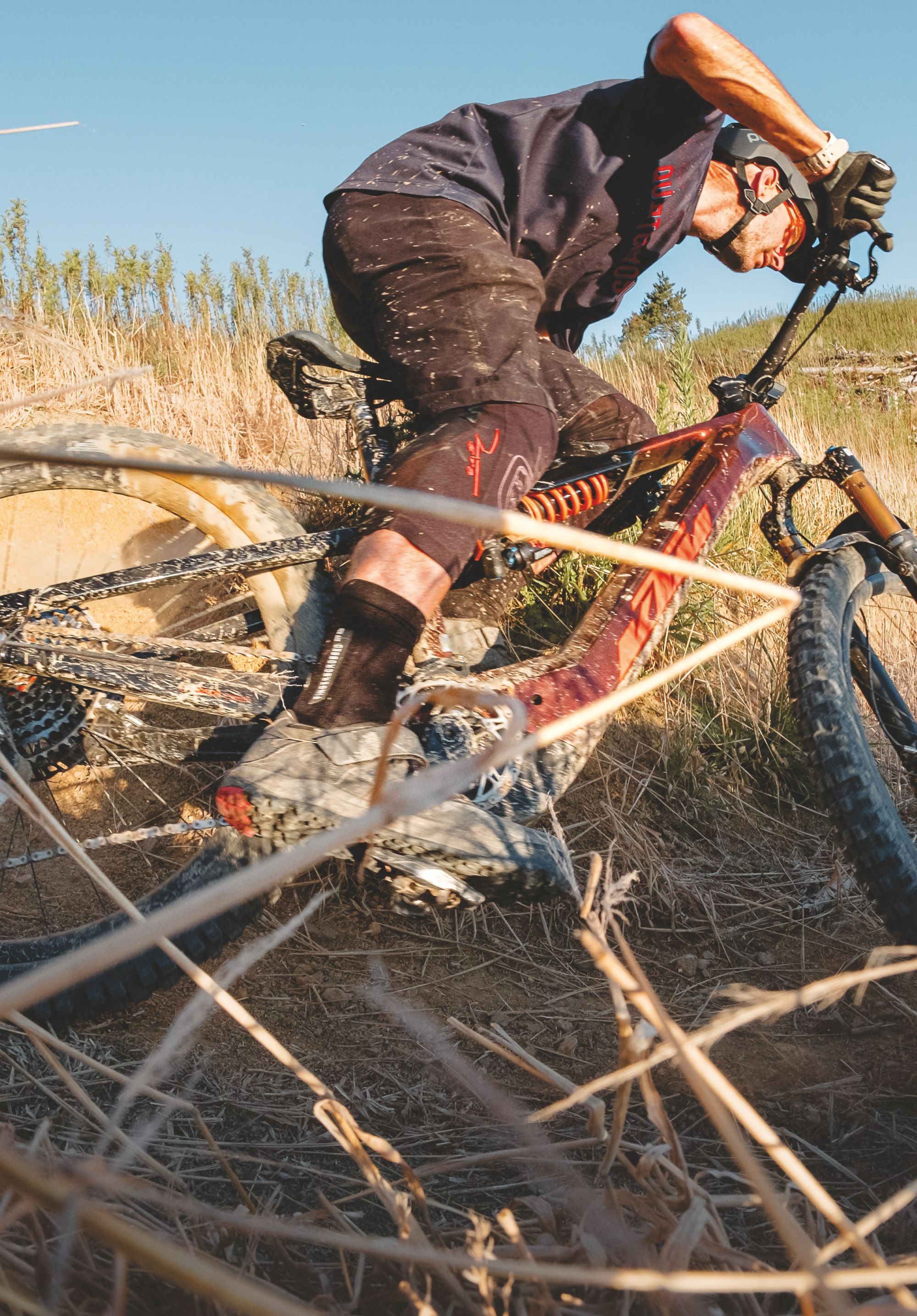
Geometry and Handling
The head angle sits at 64.1 degrees, pretty normal for a bike with 150mm of travel. The upside of this is it keeps the bike nimble in most scenarios, even on mellow or flat trails. The bikes climb well, their shorter reach and comparatively long stem (50mm) help keep weight on the front and keep the wheel on the ground.
Thanks to a high anti-squat, the bike sits up in its travel while climbing steep sections. In scenarios like this, when there’s high torque through the drivetrain, a lower anti-squat would see the suspension being sucked into its travel – not something to worry about on these bikes though. Once accustomed to the weight, jumping the bikes was fun and you’re able to use a bit of body language to float sizable jumps and make sure of smooth landings. Nothing strange stood out while hitting take-offs, but it does take a little to adapt to the weight.
Overall, the bikes excel on flatter terrain; shining on slower, technical trails more than wide open, fast and chunky steeps. I found the bike easy to corner and quick to change direction, thanks to its short wheelbase and mullet wheels; but on steep, rugged trails, I couldn’t get confident – likely a combination of the underpowered rear brake, short reach and longer stem than I’m used to.
Overall Thoughts
“A mixed bag” is how I’d sum up the Macina Prowler Prestige and Macina Prowler Exonic bikes. Outside of a couple of minor things, the component package on both bikes is solid. It does feel a little like KTM has taken the geometry of a shorter travel eBike, aimed at trail riding, and stretched the travel out to that of a heavy-hitting all-mountain bike. A bike with 170/180mm of travel would normally have longer, slacker and lower geometry than we see here. The downside is that a bike with that geometry wouldn’t be as good as the Prowlers are on mellower trails, or for ‘touring’ style riding where there’s as much climbing and flat as descending. So, where does that leave us? These bikes are perfect on what I’d call the ’middle ground’ of trails: not the flat, smooth trails of one end of the bell curve, or the steep, rough technical trails at the other end of the scale, but right in the middle; the riding a majority of us spend most of our time doing, pure trail riding. Rolling trails, some technical, some rough – but not extreme.
If money was no object and I wanted a top specced, high end eMTB with the best drive nit money can buy, then I’d jump on the Exonic. If my budget couldn’t quite stretch that far then the Prestige bike is an exceptional alternative.

Trek Fuel EXe 8 GX AXS T-Type
Words Georgia Petrie
Images Cameron Mackenzie
RRP $12,499
Distributor Trek NZ
The past two years have been abuzz with exciting product launches for the superlight (SL) eBike nerds among us. Between the likes of Transition, Orbea, Specialized and more recently, Santacruz, the lightweight eMTB market is now a smorgasbord of “too light to be true” offerings. And, with each new bike launch, the discreetness of the “e” factor across the market blurs the line between acoustic and electric even more. Motors and batteries are becoming more compact whilst, simultaneously, the power, torque and range abilities are increasing exponentially, to the point the reliability of my once sharp “eMTB radar” is becoming a little questionable.
Trek’s Fuel EXe takes ’stealth’ to a new level and their alloy offerings combine budget and performance to create an economical yet hard-hitting package that will tempt the appetites of even the purest acoustic bike riders out there – you might want to unblock your ears for this one!
With a chassis deriving from the popular and proven Fuel EX, the Fuel EXe electrifies it’s do-it-all acoustic counterpart, giving riders the ability to do more: turn your post-work lap into two, remove the “dread” from climbs, and descend without the clumsiness of traditional full power offerings. Sporting 150mm front and 140mm rear travel, the bike is a capable descender that’s isn’t afraid of tackling jumps, drops and steep grade five descents far above its paygrade, whilst maintaining nimble-ness at its core. It’s a comfortable, versatile all-rounder that’ll leave you wanting more – and with a punchy 360Wh battery and 50Nm torque motor to boot, why not?!
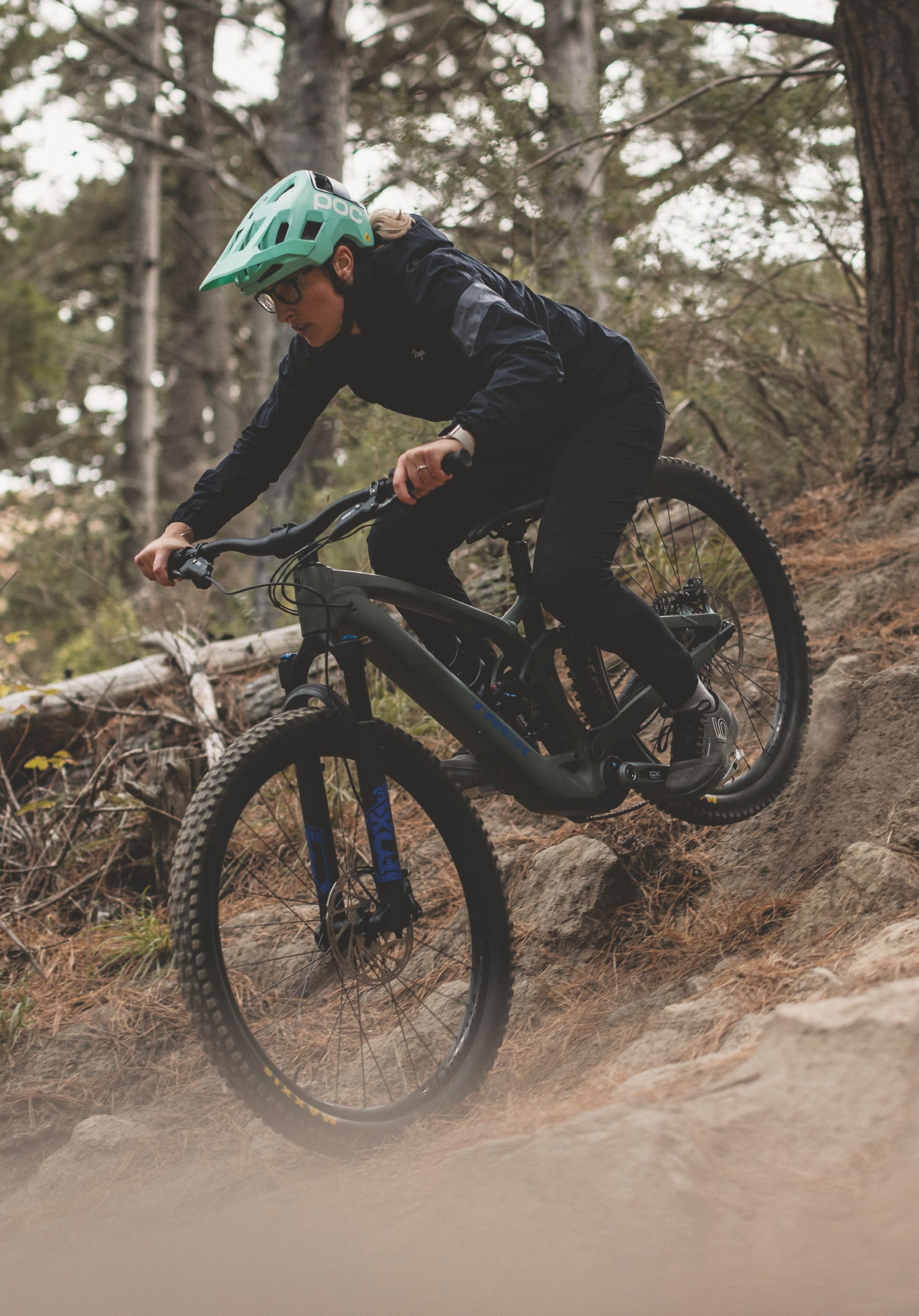
Power is delivered smoothly and naturally – there’s no sudden jerk forward when the assistance kicks in, and it really does feel like you’re just riding a non-powered bike with a little pat on the back for some extra help.
eBike Features
The Fuel EXe is powered by the TQ-HPR50 motor, which has made quite the name for itself within the lightweight eMTB segment, sported by the likes of Mondraker, BMC, Cube and Unno to name a few. Producing 50Nm of torque and 300-watt peak power combined with a 360Wh battery, the TQ-HPR50 is a punchy package – enough grunt to get you up nasty climbs, and enough battery for a decent after-work pedal and then some. Comparatively speaking, these numbers reflect a blend of those seen on competing lightweight offerings. The torque output mirrors the Specialized Levo SL Gen 2 but the Fuel EXE has a slightly higher battery capacity, while the Shimano EP8-RS seen on the Orbea Rise matches the Fuel EXe in battery capacity, but sports slightly higher torque at 60nm.
It’s little wonder the Fuel EXe masks its eBike nature so well, the battery and motor weigh in at just 1.85kg and 1.83kg respectively – our EXe 8 GX AXS T-Type review model weighs in at 20.25kg/44.65lbs, which is very respectable given the bike’s alloy frame, budget friendly componentry and removable battery. Riders can also purchase a 160wh range extender that sits discreetly in the bottle cage, providing an extra one to two hours of juice for only 950 extra grams of weight.
Adding to the sleekness is the TQ display that’s cleanly integrated into the top tube, which can be adjusted to display your preferred units. This is paired with a simple three button handlebar mounted remote, used to toggle between the bike’s three primary modes – Eco, Mid, High and Walk. The max power, assist level and pedal response for each mode (except for Walk) can be tuned using Trek’s Central app, where you can also track ride statistics, activity and even get recommendations on tyre and suspension pressure.
Out of the box, I felt the stock motor tune provided not only efficient, but natural assistance. Having ridden a range of different lightweight and full power eBikes, a key learning I’ve encountered is that whilst two motors might have largely similar numbers on paper, when it comes to power, it’s how that power is delivered that truly differentiates the experiences across the SL offerings. The TQ-HPR50 delivers power instantly but smoothly – instead of the bike jerking forwards with each pedal stroke, it provides a gradual increase in power that’s akin to someone giving you a light push on the back.
It’s also by far the quietest motor I’ve ridden to date, delivering power almost silently and descending with equal quietness – whilst it doesn’t bother me, I’m certainly aware that the decibel level of a motor is quite contentious a topic for some SL shoppers, so this is great news for those not so keen on listening to their bike whirr away whilst pedaling.
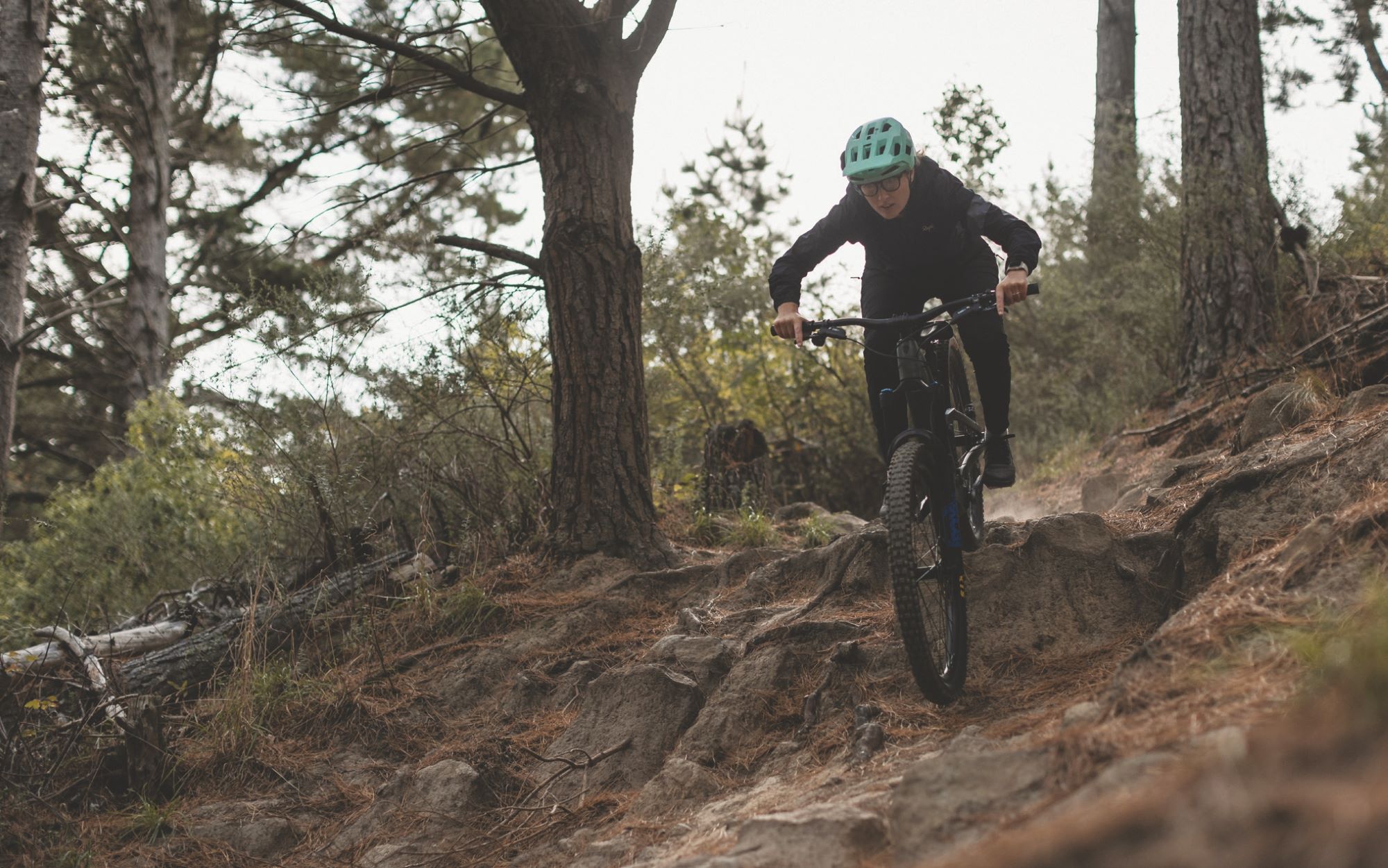
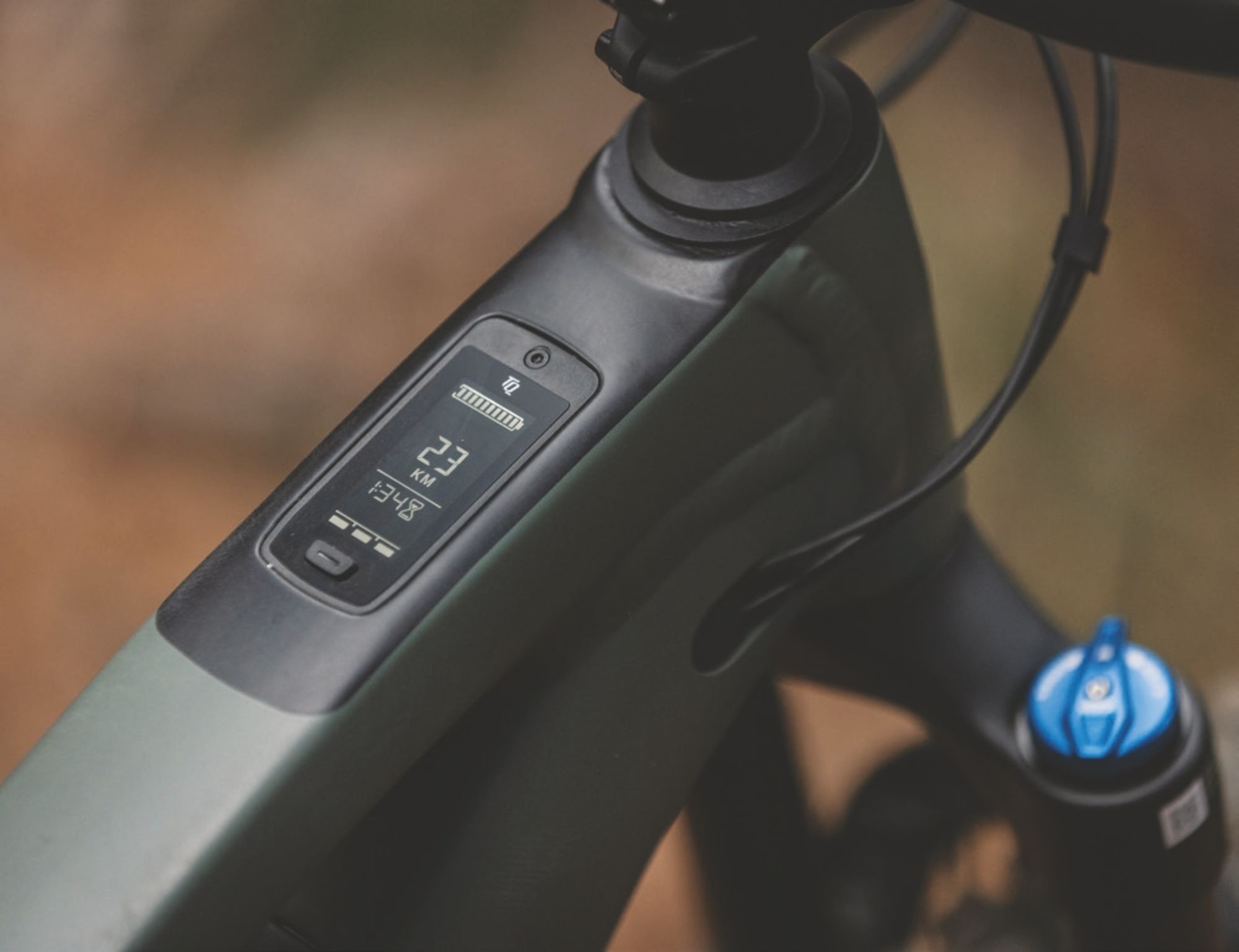
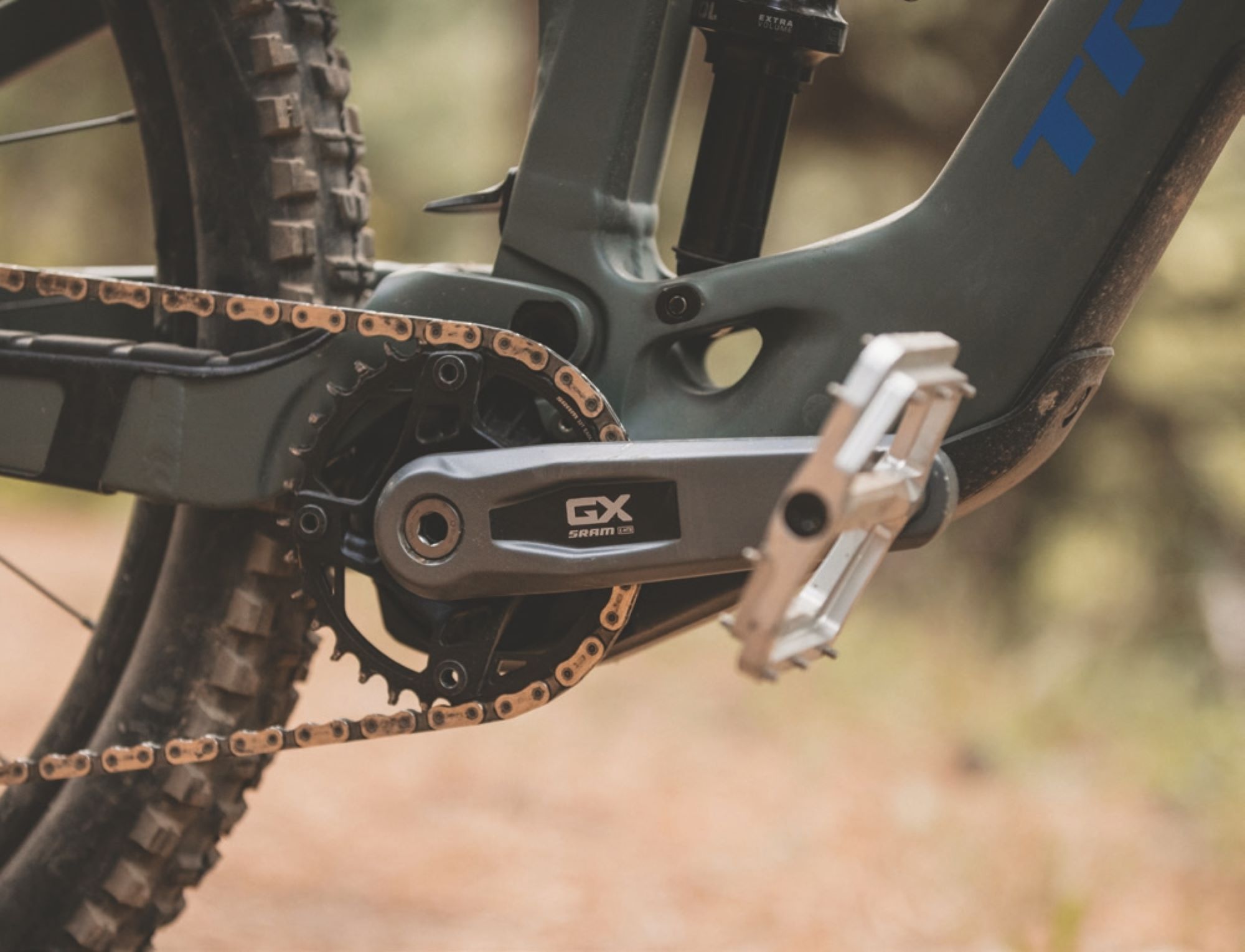
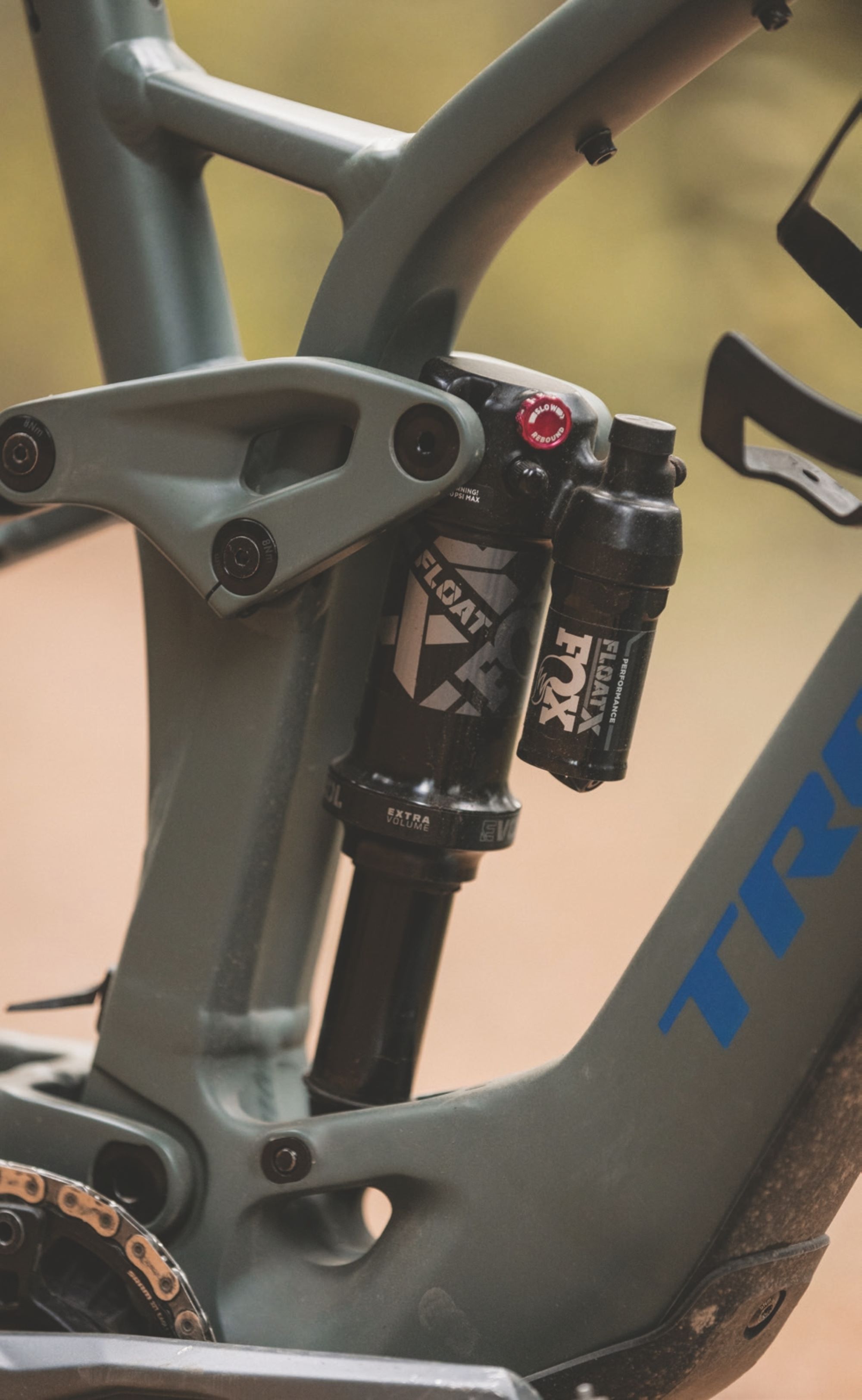
I was highly impressed with the bike’s performance tackling chundery roots and rock gardens, drops and jumps – you’d be forgiven for thinking the bike has 10mm more travel than it really does.
Geometry
The Fuel EXe sports do-it-all geometry that’s “just right” – an aggressive enough 65.3° head angle meaning it doesn’t shy away from steep, technical trails, paired with a 1216mm wheelbase that plants the bike nicely on rough, open terrain, particularly in combination with the damped feeling of the alloy frame. At 77.3°, the seat angle is a welcome addition on a bike that sits in the SL market – this is a touch steeper than competitors such as the Levo SL (75.8°) and Orbea Rise (76.5°), making it a comfortable all-day climber and enabling the front end to remain planted on steeper ascents.
With a wheelbase of 1216mm, the Fuel EXe evokes a sense of stability on wide-open descents – you’ll struggle to feel unstable on this bike or hit the point of ’wobbliness’ that can occasionally be felt on mid-travel range bikes. Paired with a reach of 459mm, the overall size of the bike does feel slightly on the big side relative to other SL offerings, and if you’re in-between sizes, I’d highly recommend swinging a leg over one first. I felt that these characteristics didn’t penalize the bike’s performance, in fact I quite enjoyed the stability and planted feeling that came with the slightly longer bike – overall it felt really balanced and was a confident descender.
Climbing
Now for the nitty gritty stuff – ride performance. Having ridden a range of SL and full powered eMTBs, I was beyond excited to swing a leg over the Fuel EXe – living in Christchurch, we’re fortunate enough to have access to the steeps of Victoria Park, the wide-open flow trails of the Christchurch Adventure Park and the backs and beyond of Craigieburn – an eMTBer’s paradise!
When it comes to overall riding position, Trek have created an excellent balance between a tackle- anything descender, and a comfortable all-day peddler. The steep 77.3° seat angle seats you comfortably, upright and over the bike’s front – you aren’t fighting to keep the front wheel down on steep pitches and it’s extremely comfortable spinning up gradual climbs. The long wheelbase made it a little cumbersome on tight corners – I needed to be quite careful when entering corners and target my lines carefully on technical ascents to ensure I didn’t get too hung up in tight spots. There were a couple of instances where I couldn’t quite make it up the technical switchbacks of my local climb trail – a combination of wheelbase and motor power. I also struggled to get the 150mm Bontranger Line dropper post high enough – if you’re a longer limbed person like me, you may find this a little short, particularly when paired with the bike’s short 73.3mm standover height.
The TQ motor had a unique power delivery relative to other SL motors, such as Shimano’s EP8 or Specialized’s 1.2. Power is delivered smoothly and naturally – there’s no sudden jerk forward when the assistance kicks in, and it really does feel like you’re just riding a non-powered bike with a little pat on the back for some extra help. An interesting observation was that this bike requires quite a high and specific cadence point to generate optimal assistance from the motor – there were a few occasions on steeper climbs where I felt myself having to spin pretty hard to maintain optimal power delivery.
Additionally, whilst the Fuel EXe sports comparatively higher battery numbers than its competitors, the way that power is delivered seems to draw from the battery slightly more than other SL motors I’ve sampled – I ended up with 10% less range on one of my favorite one hour eBike loops than the likes of the Orbea Rise and Levo SL Gen 2. This wasn’t an issue for those quick 1.5 – 2 hour loops from home, but it does mean you’ll need to plan your route carefully should you wish to tackle any slightly longer days in the saddle. As I would with any SL eMTB (depending upon manufacturer), I’d highly recommend purchasing TQ’s range extender which sits perfectly and subtly in the bottle cage, giving you an extra 160wH of battery and alleviating those “range anxiety” moments.
The 12-Speed SRAM GX AXS transmission was an absolute delight, and an excellent drivetrain choice from Trek. I’m a firm believer that wireless drivetrains shine on eMTB’s, particularly those in the SL class, as you’ll often be alternating between motor modes and gears to optimize forward propulsion and power delivery – efficient shifting with immediate actuation makes gear selection a breeze. The bike shifted exceptionally well under heavy load, and I never once had an issue with gears slipping or my chain threatening to drop.
Paired with SRAM’s robustly machined GX cranks, the drivetrain performance makes you forget you’re on the “entry level” alloy model and, at 165mm in length, you’ve got enough clearance to avoid pesky peal strikes, which are much more common on e-mtb’s due to their lower bottom bracket heights. Plus, the Fuel EXe is cleverly designed so that the main battery serves as the derailleur’s power source, meaning you don’t need to worry about remembering to check battery levels. On the flip side, however, it does mean that should your battery run out during a ride, you won’t be able to change gears, which could mean a long ride home or back to the car for some – these bikes are light, but trust me, you’ll still know about it when the battery dies!
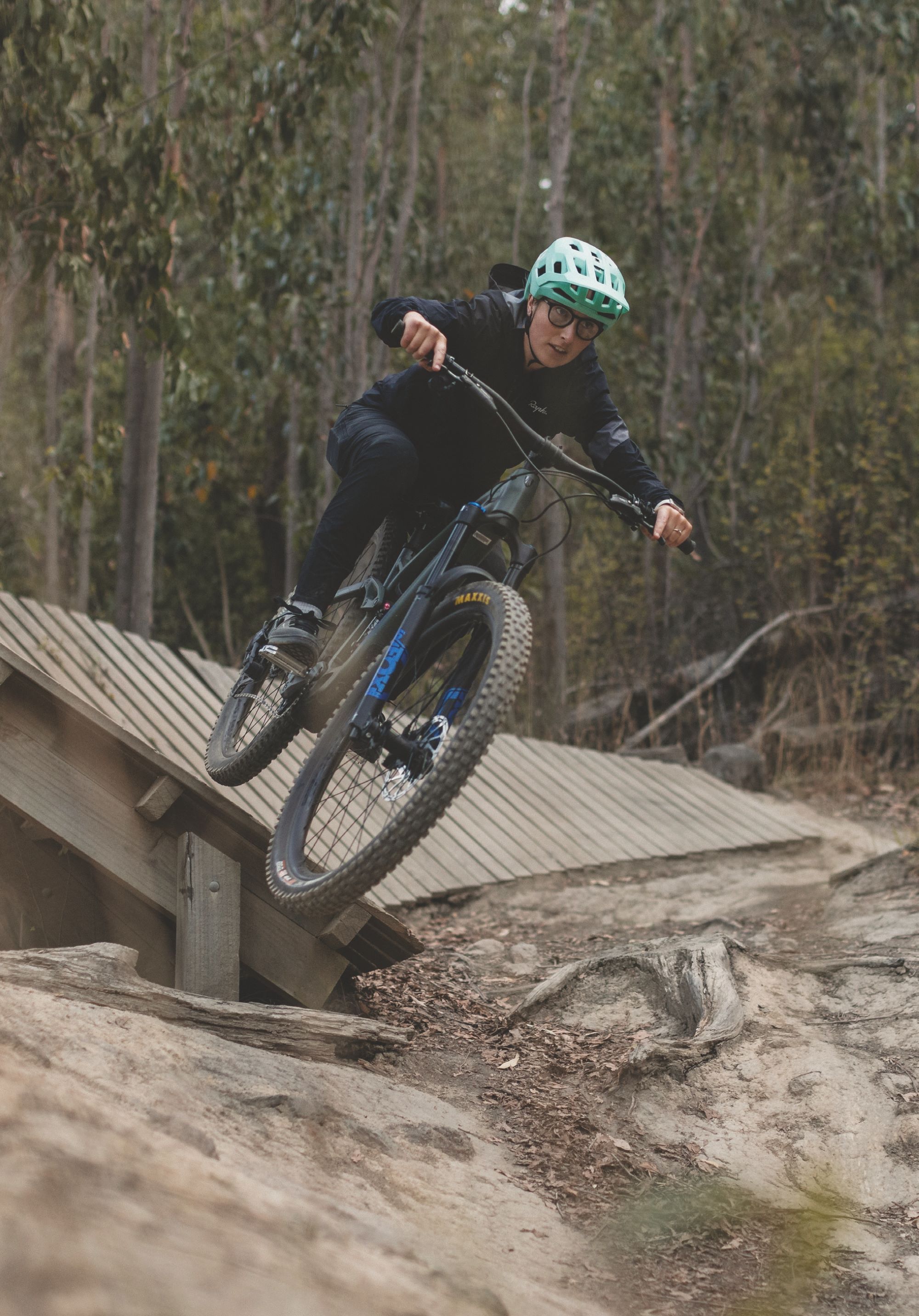
If you’re like me and a busy schedule means limited riding, this bike enables you to cover ground much more efficiently whilst still getting a great workout in, meaning you get to ride more, especially the best parts – the descents!
Descending
Descending, the Fuel EXe comes alive. It excels on wide-open descents, maintaining a planted, compliant feel and isn’t intimidated by big rocks, or venturing into Grade 6 trails. I was highly impressed with the bike’s performance tackling chundery roots and rock gardens, drops and jumps – you’d be forgiven for thinking the bike has 10mm more travel than it really does. The alloy frame strikes a nice balance of being stiff without losing feel of the terrain beneath you, and the wheelbase creates stability that evokes a certain level of confidence over and above other bikes of this travel range.
The Fox 36 Rhythm was a breeze to set up, and the added GRIP dampener helped with small-bump sensitivity – hitting drops and jumps was akin to lounging on a Lay-Z-Boy. It’s plush and the bike really sits into the travel on big hits – one may think, “bold bruiser” as opposed to “nimble dancer” when characterizing the ride feel, which isn’t a bad thing at all on the right trail – this bike has got your back! Whilst more of a “point and shoot” descender that’s perhaps not as responsive as other SL options, such as the Levo SL or Orbea Rise, the Trek tackled my local Christchurch steeps and rock gardens with ease, making light work of trails that, in theory, should be well beyond its paygrade.
The Fox Float X Performance series shock is the perfect complement to the 36 fork – these shocks pack some serious punch and tackle small bump sensitivity with ease, and the dampening is just superb. In my experience, with its stoic build and piggyback reservoir, The Float X considerably elevates the descending performance of any do-it-all mid-travel trailbike, and its extensive adjustability means that it can be tuned out-of-the-box to a wide variety of rider types and terrain.
The SRAM DB 8 4-piston brakes were new territory for me but fitting for the Fuel EXe, self-described by SRAM as being “simple” and “robust” – a perfect complement to the bike’s tough, sturdy characteristics. Whilst initially hopeful as I set off on the first descent, a mellow tech-blue trail at Christchurch Adventure Park, the powerful bite that I experienced at the start of the trail quickly faded and unfortunately left my hands pretty cramped at the trail’s end as I was pulling hard to try and control my speed. Although the Fuel EXe’s beefy 200mm rotors and large levers were an uncommon, but welcome choice for an SL eMTB, these features weren’t quite enough to offset the limited braking power that the DB8’s offered on longer, or steeper descents, and I would’ve preferred something with a little more bite. Undergunned brakes are not unique to the Fuel EXe – brakes are a component that often leaves a lot to be desired when it comes to many of the out-of-the-box eMTB’s; SL or full power, that I’ve ridden thus far. Due to the extra weight of the eMTB, decent stopping power plays a crucial role in how the bike feels, and underpowered brakes can make a bike feel cumbersome and arduous, which is particularly noticeable on an SL eMTB like the Fuel EXe, where you want to bridge the gap between acoustic and electric, not extend it.
Being a longer limbed person, my only gripe when descending was the 150mm Bontrager Line Dropper, which I found to be a little in the way – a slightly longer 170mm drop option would’ve been a welcome addition. We also found the cable actuated dropper post lever to be a little fragile, with the cable detaching from the mechanism on a couple of occasions, rendering the post unusable trailside. On both occasions, remediating the issue unfortunately required no option other than to drop the motor out (a finnicky job, to say the least!) to reconnect this. Routing non-electronic dropper posts is a cumbersome exercise across the eBike board, so this isn’t unique to the Fuel EXe, however, it does mean that ideally the spec’d dropper post should be as reliable and trouble-free as possible to avoid any technical headaches!
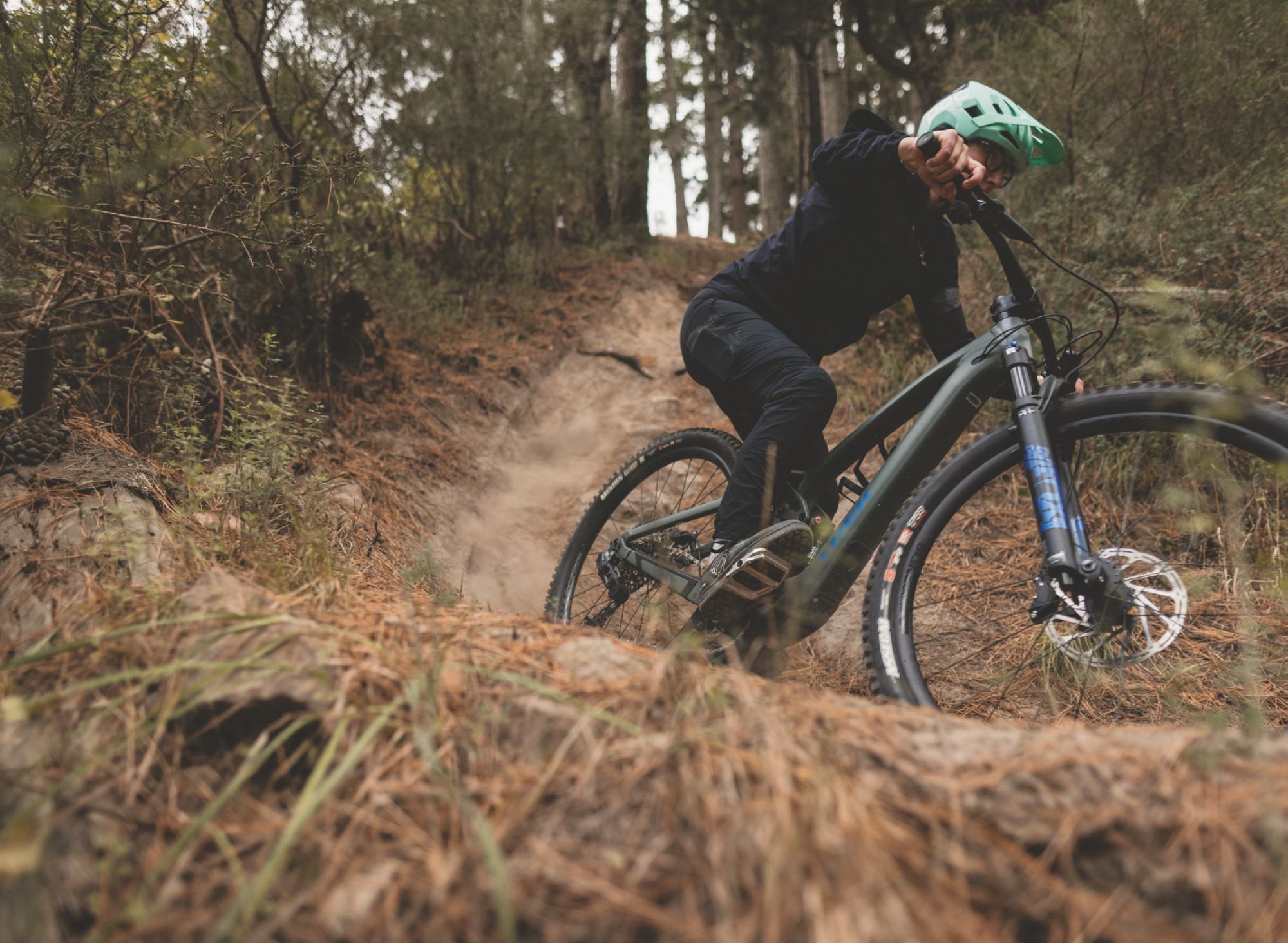
Overall thoughts
The Fuel EXe is an excellent out-of-the-box package that represents great value for money and delivers a ride experience that packs a punch, especially on the descents. With its quiet motor, subtle assistance and stealthy appearance, the bike is a great stepping stone into the wonderful world of eMTB for those wanting to get the most of their ride, whilst maintaining the maneuverability, handling and responsiveness of an acoustic bike.
So, who is this bike for? If you’re on a tight schedule and you’re wanting to squeeze as much riding as possible into a short space of time, this bike is for you. Or perhaps, if you’re looking for a ride experience that mirrors that of your acoustic bike as closely as possible, this bike is for you. If you’re a weekend warrior who often ventures out to the mountains for multi-hour or multi-day backcountry adventures, then this bike perhaps isn’t for you, although the Fuel EXe’s range extender does provide a considerable amount of range anxiety alleviation, depending upon the duration and terrain of your routes.
Whether or not the Fuel EXe is for you depends on the type of riding you’re doing, the type of rider you are and, realistically, how long you often ride for. For me, I loved that the Fuel EXe meant the difference between fitting in a decent ride and not riding at all. If you’re like me and a busy schedule means limited riding, this bike enables you to cover ground much more efficiently whilst still getting a great workout in, meaning you get to ride more, especially the best parts – the descents! Because who doesn’t want to ride their bike as much as possible, right?

Aeroe Spider Handlebar Cradle
Words Lester Perry
Images Henry Jaine
RRP $129
Distributor Southern Approach
With our Mt Starveall mission penned in the calendar, I began pulling gear together for the trip. Sorting through my stuff, it was obvious none of my existing bikepacking gear was quite ideal for a trip like this – my regular strap-on bags just wouldn’t cut the mustard on technical and rough trails; I needed something stable and secure.
Aeroe came to the party and sent me out a Spider Handlebar Cradle and dry bag, and an equivalent setup for Kieran, my mission companion for the trip.
Aeroe set out to create a simple-to-use system for carting gear on your bike, initially developing ‘The Freeload Rack’, which they ultimately sold to Thule in 2011. Not long after the sale, they began quietly working on a new gear-carrying system, presumably waiting until after restraint of trade agreements lapsed to launch under the Aeroe brand. Designed for every mission, from a two-block commute to work to a two-month, multi-country epic, it’s a pretty versatile system – so can be used any time you need to carry gear on your bike, bringing down the cost per use. The entire system consists of the handlebar-mounted Spider Cradle we used during our trip, the Spider Rear Rack, and the more recently introduced Spider Pannier Rack, with the associated dry bags. The entire system is modular, meaning parts of each rack can be swapped over, allowing multiple mounting configurations and helping you to balance the load, or separate gear however you like. The cradle can also be attached to a fork, throwing open the possibilities for how much cargo you can carry.
Compatible with almost any bike, the Spider Cradle was simple to fit to the handlebars. The cradle arrived ready to strap the dry bag on at right angles to the bars (ideal configuration for a fork). I wanted the bag parallel to them so, after a quick disassembly to get the configuration right, I attached the two straps, one on either side of the stem, and tightened up the two 5mm bolts – a quick and stress-free process. There are loads of adjustments on offer, so regardless of the diameter or shape of your handlebars, the cradle should be compatible, even if the handlebar or fork is not completely round. The ease of installation and removal makes switching between bikes or putting away after a mission a cinch.
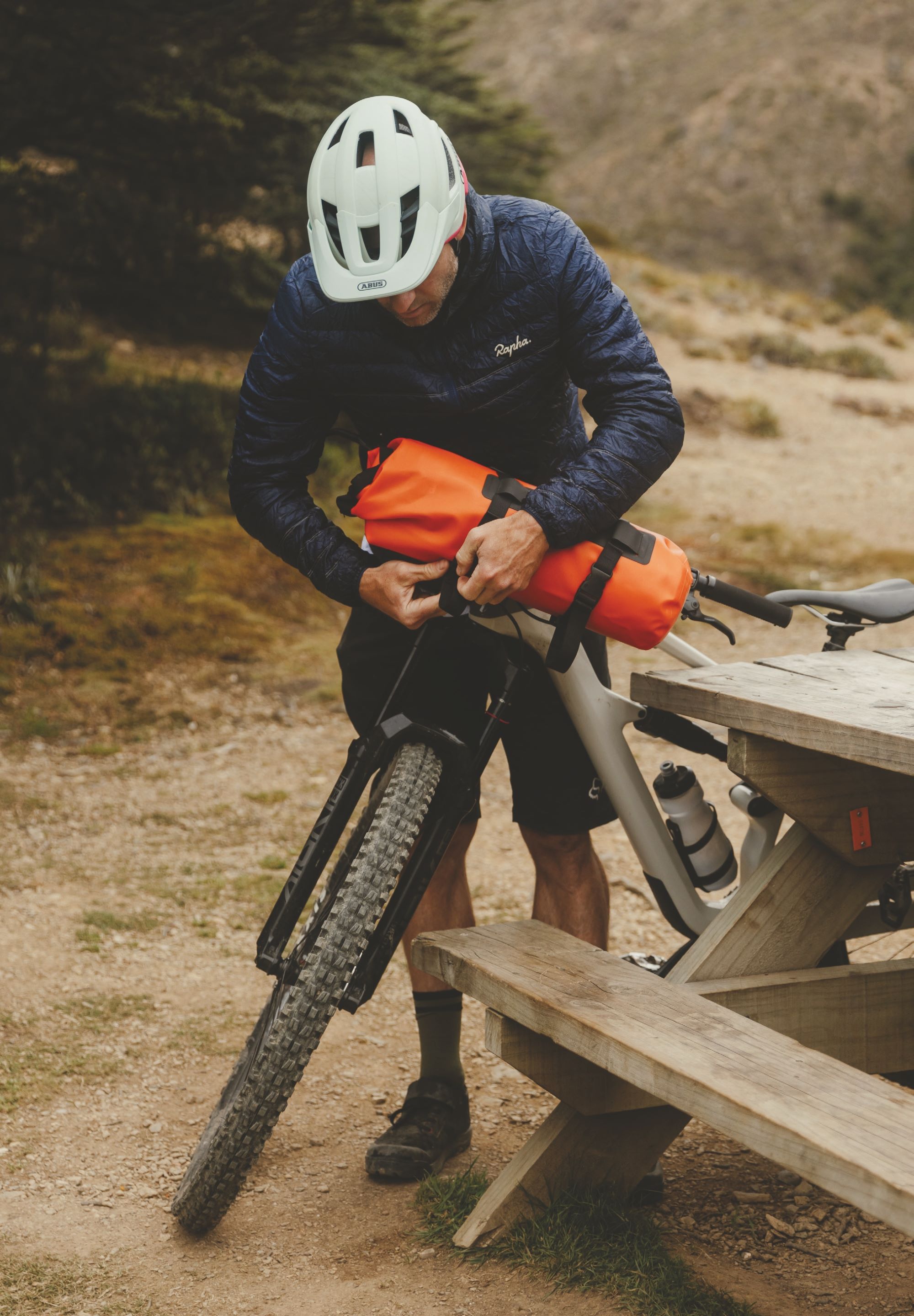
Access to the bolt heads is limited, so I’d recommend a standard L shaped Allen-key to speed up the process (although a multi-tool does the trick, but isn’t ideal). If you run a stem with a particularly wide face plate, it’s worth a quick measure-up to check the cradle will sit comfortably over it. The cradle feet barely had room to fit over Kieran’s stem – let’s just say it was an ’interference’ fit and required a bit more persuasion to fit correctly than on my marginally narrower, more regular stem.
Constructed from glass-reinforced nylon, the Spider Cradle system weighs in at 464g and can carry up to 5kg of additional load. There are two standard dry bags offered by Aeroe; the 8-litre I used, and the 12-litre used by Kieran. The sturdy bags are made with small sleeves to allow the cradle straps to be fed through them, keeping the whole load stable and secure. Any old bag could be used, but I doubt it would be as secure – or offer the same peace of mind – as the Aeroe bags. The beauty of using a roll-top dry bag is the ease of access – depending on how tightly packed it is, there’s no need to remove the bag from the cradle – just unroll the end for easy access.
After being rattled and bumped around during a solid couple of days out on the trail, the bags show very little sign of use and I can’t see them having any issues, provided they’re strapped securely; it’s doubtful the bag would ever wear out.
My Aeroe bag was crammed full with a bivvy bag, sleeping bag and Jetboil style cooker… no room for snacks in there! Kieran’s Aeroe bag had a sleeping bag, sleeping mat, and large jacket – with room for more. To keep our bikes as light as possible – and knowing we were in for a lot of hike-a-bike – we put the remainder of our gear into CamelBak packs. Our setup worked well, and I think we could have scraped through two nights away with no resupply of food given how light we were travelling. Any more nights and we would have needed additional space for food, maybe using the Rear Spider Rack and an additional bag just for food and snacks.
Some gear just works like it should and it’s obvious the designers have thought through multiple different scenarios, solved problems and answered questions.
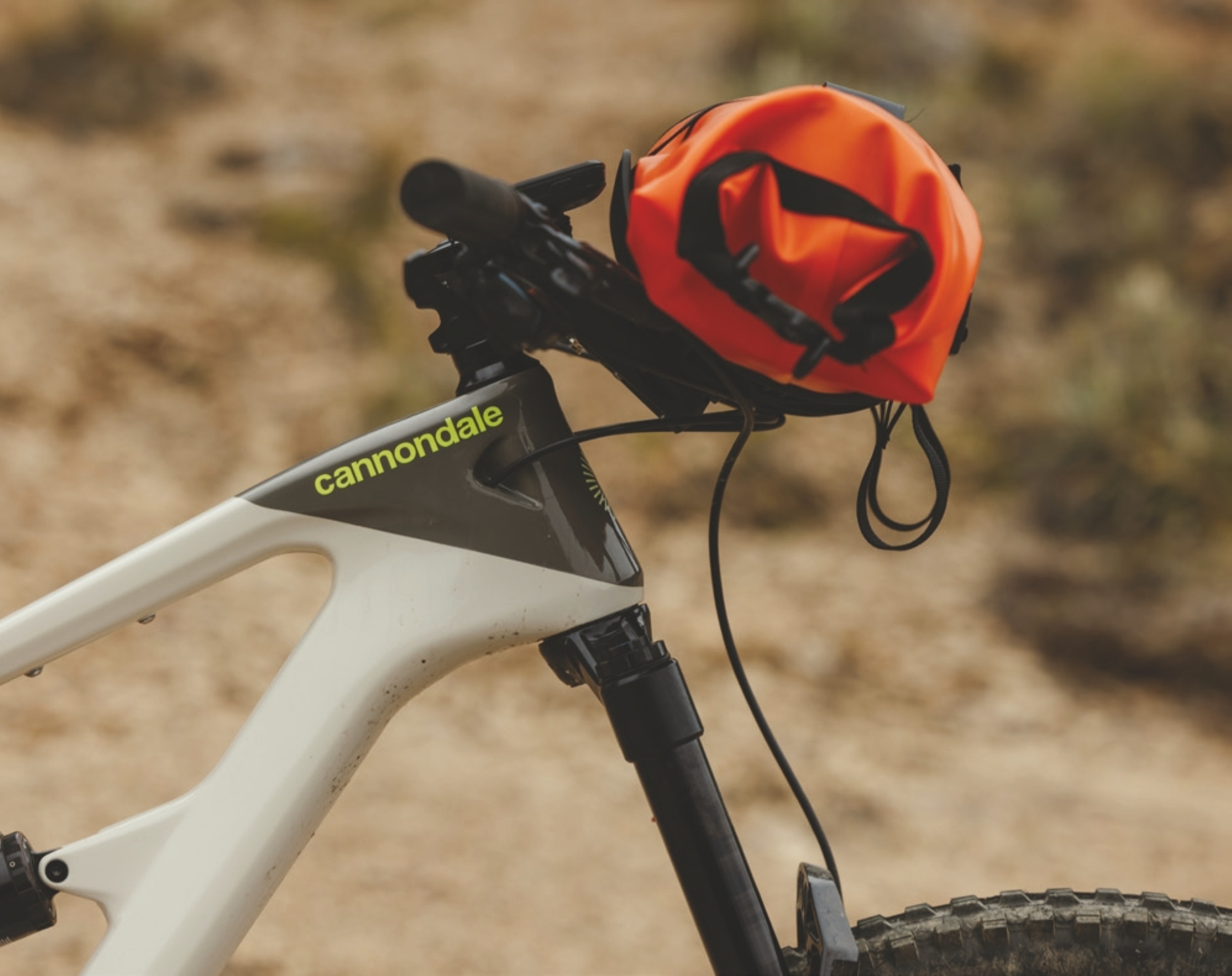
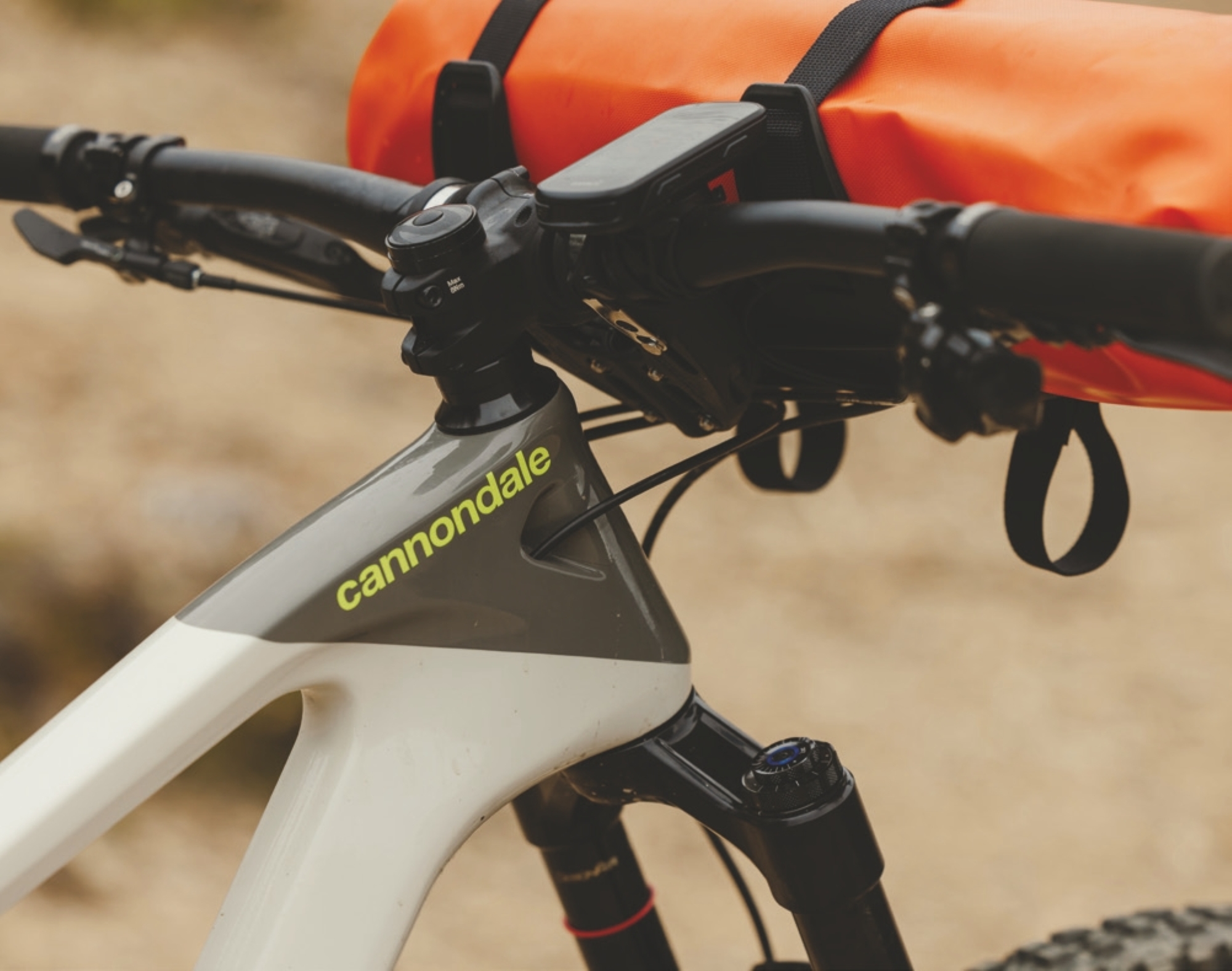
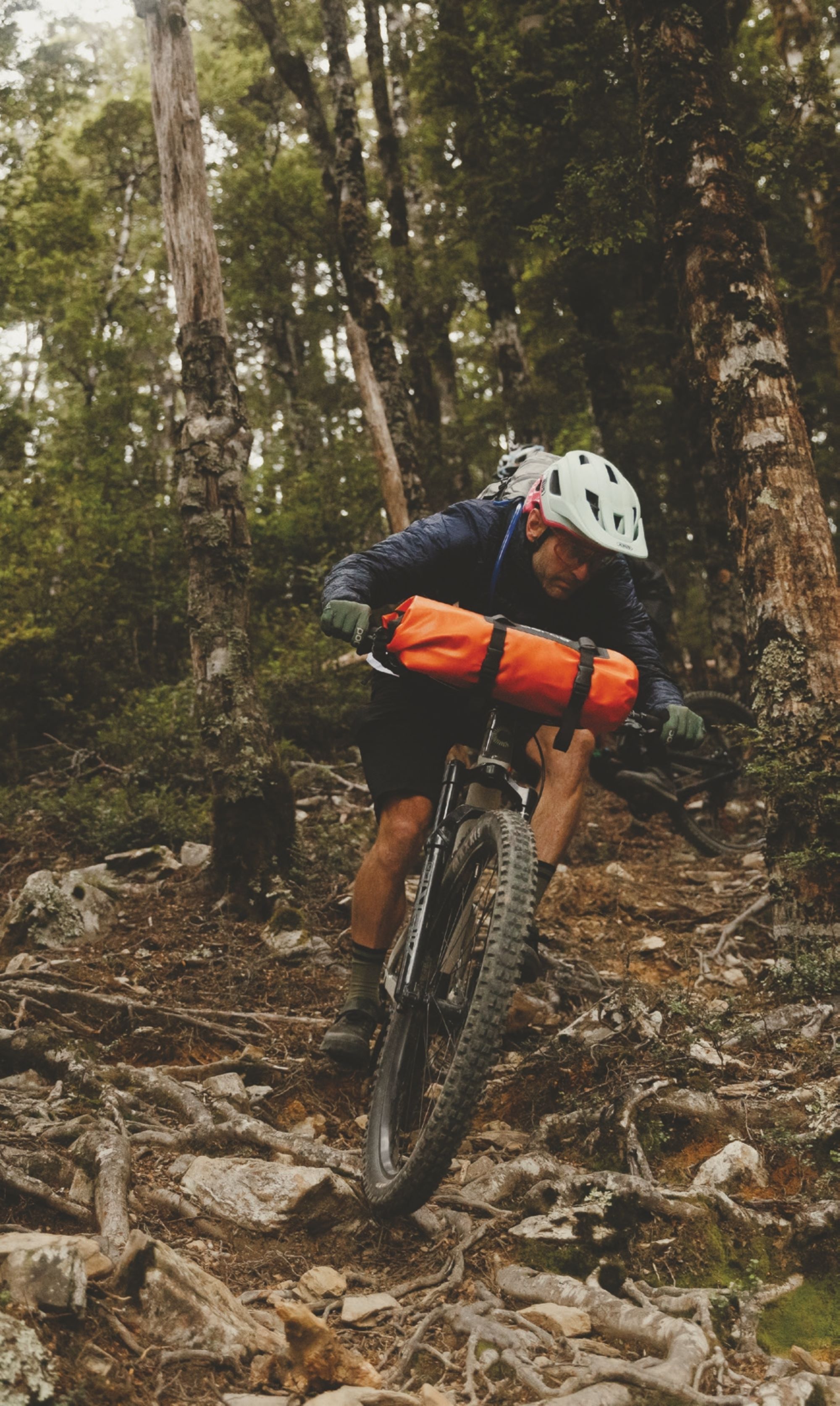
I was pleasantly surprised at how solid the cradle was, even under some heavy impacts, stutter bumps and cased jumps – it stayed put, right where I’d attached it, with no noticeable movement or slippage.
The extra weight on the front wheel was noticeable to begin with, when cornering, but after just minutes in we’d adapted and it didn’t detract from the ride – until we tried to lift our bikes onto our backs for a hike-a-bike for the 20th time! So much additional weight on the front wheel made jumps feel a bit weird and nose heavy. Again, we adapted to the feeling, but it was still noticeable. What was amazing was how much extra front wheel traction the weight gave us – so confidence-inspiring and not something we expected at all!
I haven’t tried the Spider Cradle on a drop bar bike yet, but would assume it will work fine, although depending on how cables are routed; they may foul with the cradle mounting straps, but only time will tell.
Some gear just works like it should and it’s obvious the designers have thought through multiple different scenarios, solved problems and answered questions. The Aeroe Spider Cradle is one such item; I can’t fault it, it does what it says on the tin and stands up to some abuse. I’d recommend this setup for anyone looking to cart gear on their bike, particularly if you’re riding technical MTB trails – I’d be surprised if other systems would be quite as solid. I can’t wait to take the setup out on some more missions!



